Jeep Safaris And Tours for travel to top holidays destinations
Adventures in kenya and tanzania national parks and game reserves.
+254 742 608541
info[@]jeepsafaris.net
Greenspan Mall, Donholm, Off Jogoo Road

- KENYA SAFARIS
- TANZANIA SAFARIS
- UGANDA Safaris
- KENYA & TANZANIA COMBINED

BEST AFRICAN SAFARIS
Tell us what inspires you and let us create your dream safari!
REQUEST A FREE quote
Jeep safaris - for all your safaris requirements.
Jeep Safaris and Tours is a local reliable and affordable inbound Kenya and Tanzania tour operator, dedicated to providing unique and comprehensive selection of Kenya Jeep Safaris -Tours- Mount Kilimanjaro climbing tours - Mount Kenya trekking tours - Beach Holidays and all travel services tailored to the specific needs of luxury and budget adventure tourists. With daily group joining tours and private departures, the company has a proven record of outstanding service, both at point-of- sale and in “after sales” care. When it comes to Top Notch Travel, with our range of fleet, 4x4 Kenya Jeep Safaris provide unending adventure in the wilderness. We serve clients across the world including UK, USA, EU, Australia and Asia, well earning our name in the tourism industry as an established medium size tour operator in Kenya and Tanzania.

WHY CHOOSE US
Stay safe tour.

Quality Services

Amazing Travel

Book Your Trip

Nice Support

popular safaris
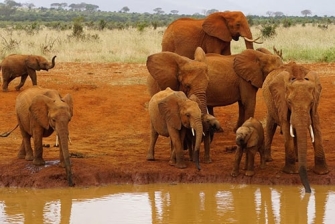
Client testimonials
Choose your destination.
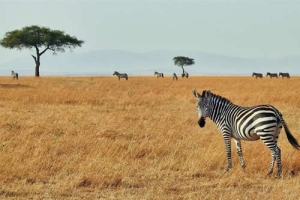
More details
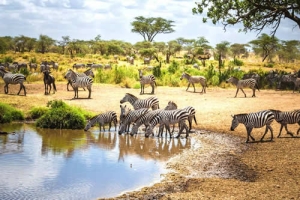
Jeep Safaris and tours - for all holiday and adventures in East africa
If you're looking for the best travel partner for your holiday in East Africa, Jeep Safaris and Tours got you. For great adventures across top tourism destinations, with affordable packages using our reliable tour vans and landcruisers, with our experienced knowledgeable tour guides and drivers, to give you a wild experience of untapped natural sceneries.
from our photo gallery

Some of our safari destinations
- Masai Mara National Park
- Mt. Kilimanjaro
- Lake Nakuru National Park
- Serengeti National Park
- Bwindi Impenetrable Forest
- Lake Manyara
- Nairobi National Park
- Ngorongoro Crater
- Tarangire National Park
- Amboseli National Park
- Arusha National Park
- Southern Parks
- Tsavo East and West National Park
- Selous Game Reserve
- Queen Elizabeth National Park
- Ruaha National Park
- Samburu Game Reserve

Join our reviews

useful links
- testimonials
- terms and conditions
Jeep Tours and Safaris
Greenspan Mall, Donholm, Off Jogoo Road,
P.O. Box 7014-00300
Nairobi, Kenya
Email: [email protected]
Tel: +254 742 608541
WhatsApp: +254 742 608541
JavaScript seems to be disabled in your browser. You must have JavaScript enabled in your browser to utilize the functionality of this website.
South Africa
- Democratic Rep. of the Congo
- Republic of Congo
- Central African Republic
- NEED HELP? LIVE CHAT
- for tour operators
Nairobi safari park experience open jeep tour
- Safarisource /
- Countries /
Lower price for bigger groups

$224 (Per Adult)
$224 (Per Adult) / Day
- Sightseeing
Duration 1 day(s)
Location Kenya
Start Point Nairobi Park gate
End Point Nairobi park gate
Availability Oct 01 , 2020 to Dec 30 , 2050
No Add-ons for this package
- Description
Experience Nairobi park safari in open jeep enjoy best game viewing in 360 degrees wildlife capture.Best and Most recommended safari in open jeep 4x4
Package Includes
Safari jeep transport,water,entrance fees of jeep and driver,guiding
Package Excludes
Pick up and entrance fees payable direct ( 35-43$0
- Bird Photography
- Landscape photography
- Wildlife Photography
- Bird Watching
- Photo-safari
- Nairobi National Park, Kenya
Physical Condition
- Normal Physical Condition
Connectivity
- WiFi and phone coverage throughout
Day-by-day Description
Day 1 open jeep safari experience nairobi national park tour, activities included.
Nairobi park tour an inspired experience awaiting you in open jeep the only intimate way for sunrise and sundowner moments overlooking the city and wildlife viewing
Other Benefits (On Arrival)
Nairobi National Park Main Gate, 325904,36, Nairobi, Kenya
Travel Time: 6 hrs
See all Available accomodations
Offical Visa Regulations and Health Requirements
For personalized details on health and visa requirements please check the IATA travel centre here
Standard operational guidelines
No Add-ons Info
Leave a Review Here
Kindly post the review after your Tour Experience
$224 Duration: 1 day(s)
Children Not Allowed
Destination
Price chart.

- Privacy Policy
- Frequently Asked Questions
- Terms & Conditions
Top Destinations
Booking with us.
- Places to go
- Exclusive Travel
- Budget Packages
1 +27 (64) 772-5985
17 Queens Park Ave
7925 Cape Town
PAYMENT OPTIONS

Safarisource is member of
Safarisource is insured by satib.


- +254 712683442
2-4 Day Nairobi Safari Tours Exploring Kenya
Discover our world of wildlife, join a nairobi safari tour & discover the best of kenya, see the national parks, mt kilimanjaro, and the great migration.

If you love Kenya safaris , join us for a once in a lifetime Nairobi safari tour and dive deeper into the world of Kenya ’s natural reserves. Take a look at these spectacular parks and discover the extraordinary wildlife they hold within their savannahs, forests, and high plains.
These multi-day Kenya safaris from Nairobi will set you upon the brilliant landscapes of several national parks and get close to Kenya’s pulsing herds of lions, buffalo, elephants, wildebeests, and hundreds of other species.
Choose from 2, 3, or 4-day African safaris to parks like Amboseli with its untold herds of free-ranging elephants. Or travel with us to special sanctuaries like Ol Pejeta , a protected haven for chimpanzees and rhinos. Go for the big one–the Masai Mara with its infinite masses of wildebeests and zebras, only matched by its dense prides of lions.
The magic of these Kenya tours and safaris will create life-long impressions as you become an experienced safari-goer, more appreciative of this natural world and the magnificent wildlife that will fill up your day and your memories

Easy, Fast & Flexible
At AKS you write the rules. Travel and explore at your own pace in you own way. We’re fast, flexible, and always ready to respond to your requests. Book in advance or even the day before. We’ll get you out on safari – pronto!

Overnight Safaris - Our 2 Day Tours
Got more than a day to explore? You’ll see much more on our two-day safaris to Kenya’s wildlife reserves. Choose from one, two, or even three destinations in your touring package. From Mt. Kilimanjaro to the Masai Mara , we’ll personalize a custom journey to your specific wishes
Our 2 Day Kenya Safaris from Nairobi

2 Days Celebration Safari

2 Days Mara Discovery Safari

2 Days Elephants on Parade Safari

2 Days Rift Valley Lakes Safari
3 Day Safaris – Great Value, So Much to See
If you have a little more time, a three-day journey will bring added opportunities to settle into the safari rhythm and mood. Three days is lots of time to get familiar with the land and wildlife of the great Tsavo East and Tsavo West Parks , with their red-dust elephants and vast expanse of sky and land. Or go for the rolling hills and thick wildlife herding across the Masai Mara . And then there’s the photographic splendor of Amboseli Park , nestled at the base of Kilimanjaro. You can’t go wrong with any of these choices.

Our 3 Day Kenya Safari Tours from Nairobi

3 Days Mara Encounter
Masai Mara National Reserve

3 Days Under Kilimanjaro’s Skies
3 Days Twin Parks Safari
Tsavo East, Tsavo West National Parks

3 Days “Big Five” Safari
Tsavo West National Park, Amboseli National Park

4 Day Safaris – More Time to Explore
These are longer tours – plenty of time to track the lions of Masai Mara and the elephants of Amboseli . Or you can combine the Mara experience with the up-country Rift Valley lakes of Nakuru and Naivasha with their blazing birdlife, rhinos, and sailing safaris.
Whatever way you design your 4-day adventure, this safari journey will make lasting impressions and create a meaningful with the land.
Our 4 Day Kenya Safaris from Nairobi

4 Days “Big Five” Mara Safari

4 Days Classic Parks Safari
4 Days Lakes to Lions Safari
Lakes Nakuru & Naivasha, Crescent Island, Masai Mara

4 Days – 5 Ways to Explore Safari
Lake Naivasha, Crescent Island, Hell’s Gate National Park, Masai Mara National Reserve
Our Group Tours
Looking for a high-end safari tour but with great value? Please check our collection of especially designed short Group Tours. Discover Kenya ‘s wildlife parks on a 1/2, 1, 2, or 3-day safari. All tours feature guaranteed window seating in our 4 x 4 Jeep Land Cruisers.

Check Out Your Ride
Experience your Africa Kenya Safari in a customized pop-top roof 4x4x Safari Jeep that features: Portable fridge/Cooler Box, 4 Binoculars, long-range high-frequency radio, 4G/LTE broadband WIFI connectivity, AC 230 V Power Outlets, First Aid Kit, Safari Guide Books, Baby Seats (on request), Side steps (on request) and most importantly an expert multi-lingual safari guide who will ensure you have an incredible safari experience.
Group Day Trips

Two-Day Group Tours
Departing every saturday.

Masai Mara National Reserve 2 Days 1 Night

Three-Day Group Tour
Departs every tuesday and friday.

FAQs for Kenya Safaris from Nairobi
Planning a safari adventure from Nairobi is an exciting journey into the heart of Africa’s wildlife and natural beauty. Here, we aim to answer your most pressing questions, providing you with the information you need to make the most of your safari experience. Whether you’re curious about the best safari parks to visit, or the types of animals you’ll encounter, our FAQs are here to guide you on your safari adventure of a lifetime.
What are the best national parks for safari tours from Nairobi?
Nairobi, the vibrant capital city of Kenya, serves as an excellent starting point for unforgettable safari adventures. From Nairobi, you can embark on exciting safari tours to some of Kenya’s most renowned national parks and wildlife reserves. Here are three of the best national parks for safari tours from Nairobi:
Maasai Mara National Reserve
The Maasai Mara is perhaps the most famous safari destination in Kenya, and for a good reason. Located approximately a 4-5 hour drive from Nairobi, it offers a remarkable opportunity to witness the Great Migration, one of nature’s most awe-inspiring spectacles. Millions of wildebeests, zebras, and other herbivores migrate from Tanzania’s Serengeti National Park to the Maasai Mara in search of fresh grazing grounds, attracting numerous predators like lions and cheetahs. The Maasai Mara is also home to an abundance of wildlife year-round, making it an ideal destination for thrilling game drives and hot air balloon safaris.
Amboseli National Park
Amboseli National Park, located just a few hours from Nairobi, is renowned for its stunning views of Mount Kilimanjaro, Africa’s highest peak. This park offers a unique safari experience, combining incredible wildlife encounters with picturesque landscapes. Amboseli is famous for its large herds of elephants, as well as other wildlife like lions, giraffes, zebras, and a variety of bird species. Exploring the park against the backdrop of Kilimanjaro’s snow-capped peaks is a photographer’s dream come true.
Tsavo National Parks
Tsavo National Park is divided into two separate parks, Tsavo East and Tsavo West, and together they form one of Kenya’s largest and most diverse wildlife conservancies. Located about a 4-5 hour drive from Nairobi, Tsavo is known for its rugged terrain, red elephants, and the fascinating Mzima Springs, where you can view hippos and crocodiles underwater from a unique observatory. The park is also home to diverse wildlife, including lions, leopards, buffalos, and numerous bird species. Tsavo’s expansive landscapes and distinct geography make it a captivating safari destination.
Each of these national parks near Nairobi offers a distinct safari experience, whether you’re interested in witnessing the Great Migration, enjoying breathtaking views of Mount Kilimanjaro, or exploring the vast landscapes of Tsavo. Nairobi’s strategic location makes it the perfect gateway to Kenya’s world-famous wildlife destinations, allowing you to embark on unforgettable safari adventures.
What animals can be seen on safari tours from Nairobi?
Safari tours from Nairobi offer a remarkable opportunity to witness an incredible array of wildlife species in their natural habitat. Kenya’s diverse ecosystems and national parks make it a prime destination for safari enthusiasts. Here are some of the animals you can expect to see on safari tours from Nairobi:
Kenya is renowned for its “Big Five” game animals, and many of them can be spotted on safari tours from Nairobi. These iconic animals include the African elephant, lion, leopard, buffalo, and rhinoceros. The Maasai Mara, Amboseli National Park, and Tsavo National Parks are excellent places to encounter these majestic creatures. The Maasai Mara, in particular, is famous for its thrilling lion and leopard sightings, while Amboseli is known for its large herds of elephants.
Giraffes and Zebras
Kenya is also home to an abundance of giraffes, particularly the Rothschild’s giraffe, reticulated giraffe, and the Maasai giraffe. Giraffes can be found in various national parks and wildlife reserves across the country. Additionally, zebras, with their distinctive black and white stripes, are a common sight on safaris in Kenya. You can spot them grazing alongside other herbivores like wildebeests and antelopes, creating a captivating scene of African wildlife.
For birdwatching enthusiasts, Kenya is a paradise with over 1,000 bird species to discover. Nairobi National Park, located just outside the city, is home to numerous bird species, including ostriches, eagles, and secretary birds. Meanwhile, the Great Rift Valley, Lake Nakuru, and Lake Naivasha are famous for their diverse bird populations, including flamingos, pelicans, and kingfishers. Whether you’re an avid birder or simply appreciate the beauty of avian wildlife, Kenya offers a fantastic birdwatching experience on safari tours from Nairobi.
How much do Kenya safaris from Nairobi cost?
Kenya tours and safaris offer a wide range of pricing options to accommodate different budgets and preferences. The cost of a tour or safari depends on various factors, including the duration of the trip, the level of accommodation, the number of included activities, and the time of year. While some tours cater to budget-conscious travelers with affordable options, others provide luxurious experiences with premium amenities and services.
Budget-Friendly Kenya Tours and Safaris
For budget-conscious travelers, there are plenty of affordable Kenya tours and safaris available. These options typically feature basic accommodation, such as tented camps or budget lodges, and may include shared transportation and meals to keep costs down. Budget tours often focus on maximizing value while still providing authentic safari experiences, such as game drives in national parks, guided nature walks, and cultural visits to local communities. By choosing budget-friendly options, travelers can enjoy the wonders of Kenya without breaking the bank.
Luxury Kenya Tours and Safaris with Exclusive Experiences
Travelers seeking a more indulgent and exclusive safari experience can opt for luxury Kenya tours and safaris. These premium packages offer upscale accommodation in luxury lodges, tented camps, or boutique resorts, complete with gourmet dining, personalized service, and luxurious amenities. In addition to luxurious accommodations, these tours often include exclusive experiences such as private game drives, guided bush walks, and access to remote and exclusive wildlife reserves. While luxury safaris come with a higher price tag, they provide unparalleled comfort, convenience, and personalized attention for an unforgettable journey.
What are the best places for tourists to visit on tours from Nairobi?
Tourists embarking on safari tours from Nairobi are in for a treat, as Kenya offers a plethora of captivating destinations to explore. Here are some of the best places for tourists to visit on tours from Nairobi:
The Maasai Mara is undoubtedly one of the crown jewels of Kenyan safaris. It’s known for its vast savannahs, abundant wildlife, and iconic Great Migration. Tourists can witness millions of wildebeests, zebras, and other herbivores as they cross the Mara River in search of greener pastures, often pursued by hungry predators. The Maasai Mara is also home to the Maasai people, who offer cultural experiences and insights into their traditional way of life. Hot air balloon safaris over the Mara provide a breathtaking and unique perspective of the reserve’s wildlife and landscapes.
Lake Nakuru National Park
Lake Nakuru National Park is a haven for birdwatchers and nature enthusiasts. The park is famous for the vast flocks of flamingos that gather along the shores of Lake Nakuru, creating a stunning and surreal sight. Beyond flamingos, the park is home to various bird species, including pelicans, kingfishers, and eagles. Tourists can also spot rhinos, lions, leopards, giraffes, and other wildlife in the park’s diverse habitats.
Lake Naivasha and Crescent Island
Lake Naivasha, located a scenic drive from Nairobi, is a tranquil freshwater lake surrounded by lush landscapes. A highlight of any visit is a boat ride on the lake, allowing you to spot hippos, various bird species, and other wildlife along the shoreline. One of the unique attractions here is Crescent Island, a private sanctuary accessible by boat. Here, tourists can take guided walks amidst giraffes, zebras, antelopes, and wildebeests, providing an up-close encounter with these gentle creatures in a natural environment.
These are just a few of the incredible places tourists can explore on safari tours from Nairobi. Each destination offers a distinct and memorable experience, from witnessing the Great Migration in the Maasai Mara to the serene beauty of Lake Nakuru and the unique sights of Lake Naivasha. Kenya’s diverse landscapes and wildlife ensure that every traveller can find their ideal safari adventure.
What transport is provided for safari tours from Nairobi?
Safari tours from Nairobi often feature specialized 4×4 safari jeeps as the primary mode of transportation, and these vehicles offer a range of features and benefits to enhance your wildlife adventure:
Customized for Wildlife Viewing
4×4 safari jeeps are purpose-built for wildlife viewing. They are designed with open-topped or pop-up roofs, allowing unobstructed views of the surrounding landscapes and wildlife. This design is perfect for photographers and wildlife enthusiasts, as it provides excellent angles for capturing those breathtaking moments in the wild.
Comfort and Safety
These safari jeeps prioritize passenger comfort and safety. They are equipped with comfortable seats and ample legroom, ensuring you can relax during extended game drives. Safety features like seatbelts and roll bars are standard, providing peace of mind as you traverse uneven terrain. Moreover, the vehicles are driven by experienced safari guides who are well-versed in navigating national parks and reserves, ensuring your safety at all times.
Expert Guides
One of the significant benefits of safari jeeps is the expertise of your guides. Knowledgeable safari guides accompany you on your journey, sharing insights about the animals, ecosystems, and local culture. They have an intimate understanding of wildlife behaviour and can take you to the best spots for wildlife sightings, making your safari experience educational and exciting.
Access to Remote Areas
Safari jeeps are ideal for accessing remote and off-road areas within national parks and reserves. They can handle challenging terrains like muddy tracks and river crossings, granting you access to secluded spots where wildlife often congregates. This capability maximizes your chances of encountering elusive species and provides an authentic wilderness experience.
In summary, 4×4 safari jeeps are the preferred choice for safari tours from Nairobi due to their custom design for wildlife viewing, passenger comfort and safety, the expertise of accompanying guides, and their ability to access remote and off-road areas. These vehicles are an integral part of creating memorable and immersive safari experiences in Kenya’s breathtaking national parks and game reserves.
How long are Kenya safaris from Nairobi?
Kenya tours and safaris offer a diverse range of durations to suit every traveller’s preferences and schedules. Whether you’re seeking a quick getaway or an extended adventure, there’s an itinerary to match. From short excursions spanning a few days to comprehensive journeys lasting several weeks, Kenya’s tour options cater to various interests and time constraints.
Short Kenya Tours and Safaris
For those with limited time, shorter tours and safaris provide an immersive experience without an extended time commitment. These itineraries typically range from two to five days and focus on highlighting Kenya’s key attractions, such as the Maasai Mara National Reserve, Amboseli National Park, and Lake Nakuru. Despite their brevity, these tours ensure travellers can witness the country’s iconic wildlife and landscapes.
Extended Kenya Safaris and Tours
For travellers seeking a more in-depth exploration of Kenya’s natural wonders and cultural heritage, extended safaris and tours offer an ideal solution. These comprehensive itineraries often span two weeks or more, allowing ample time to discover a wide range of destinations, from renowned national parks to hidden gems off the beaten path. With longer durations, travellers can delve deeper into Kenya’s diverse ecosystems, encounter elusive wildlife, and engage with local communities for a truly immersive experience.
What types of safari are offered with tours from Nairobi?
When embarking on safari tours from Nairobi, you have the opportunity to choose from a variety of safari types to suit your preferences and interests. Here are some of the types of safaris commonly offered:
Classic Game Drives
Classic game drives are the quintessential safari experience, and they are available in many of Kenya’s national parks and reserves. These safaris typically take place in 4×4 safari vehicles, allowing you to explore the vast landscapes while searching for the Big Five (lion, leopard, elephant, buffalo, and rhinoceros) and other incredible wildlife. Experienced guides accompany you, providing insights into animal behaviour and local ecosystems.
Walking Safaris
For a more immersive and intimate experience with nature, walking safaris are an excellent choice. Led by knowledgeable guides, these safaris allow you to explore the wilderness on foot, providing opportunities to track animal footprints, study flora and fauna up close, and gain a deeper understanding of the ecosystem. Walking safaris are often conducted in private conservancies or designated walking areas within national parks.
Birdwatching Safaris
Kenya is a paradise for birdwatchers, with over 1,000 bird species to discover. Birdwatching safaris are tailored for avian enthusiasts and take you to some of the best birding destinations, such as Lake Nakuru and Lake Naivasha. Accompanied by birding experts, you can spot flamingos, eagles, kingfishers, and other unique species in their natural habitats.
Photographic Safaris
Photographic safaris cater to photographers of all skill levels who aim to capture stunning wildlife and landscape shots. These safaris provide specialized vehicles with camera mounts and experienced guides who understand the art of wildlife photography. Whether you’re a professional photographer or a hobbyist, photographic safaris offer the time and support needed to capture those perfect shots.
Each type of safari offers a distinct experience, whether you’re seeking thrilling game drives, immersive walks in the wild, birdwatching adventures, or opportunities to hone your photography skills. Tours from Nairobi provide a range of safari options, ensuring you can tailor your journey to meet your specific interests and create unforgettable memories in Kenya’s remarkable natural settings.
What overnight accommodation is offered with safari tours from Nairobi?
Safari tours from Nairobi offer a wide range of overnight accommodation options, each designed to provide you with a comfortable and immersive experience in Kenya’s wilderness. Here are some of the types of accommodations commonly included in safari packages:
Luxury Safari Lodges
For travellers seeking the ultimate in comfort and luxury, luxury safari lodges are the perfect choice. These lodges are often located within or near national parks and game reserves, offering elegantly appointed rooms, fine dining, spa facilities, and attentive service. Many luxury lodges boast stunning views of wildlife-rich landscapes, allowing you to enjoy the sights and sounds of nature without leaving your room. Staying in these lodges is an opulent and rejuvenating way to unwind after exhilarating game drives.
Tented Camps
Tented camps provide a unique blend of comfort and immersion in nature. These camps offer spacious, well-appointed tents with en-suite bathrooms, comfortable beds, and private verandas. Tented camps are typically designed to provide an authentic safari experience while ensuring your comfort and safety. They often have communal dining areas and campfires where guests can gather to share stories of the day’s adventures. Staying in tented camps allows you to feel closer to the natural world while enjoying modern conveniences.
Eco-Friendly and Remote Camps
For those seeking a more intimate and eco-conscious experience, remote and eco-friendly camps are an excellent choice. These camps are often situated in pristine, remote areas and are designed to minimize their environmental impact. Accommodations can range from rustic and simple to comfortable and stylish, all while maintaining a commitment to sustainability. Staying in eco-friendly and remote camps allows you to connect with the wilderness on a deeper level and experience the beauty of Kenya’s landscapes while contributing to conservation efforts.
Safari tours from Nairobi offer a variety of overnight accommodations to suit every traveller’s preferences. Whether you prefer luxury lodges with all the amenities, tented camps that bring you closer to nature, or eco-friendly options that prioritize sustainability, there’s an accommodation style that will make your safari experience unforgettable.

Questions About Our Tours?
Your Story Begins Here Contact Us Today and See Where it Takes You
Please indicate your Name
Please share your email contact
Please share your WhatsApp contact (optional)
Please indicate your safari/tour start date
Please indicate number of travelers in your party
Please indicate number of safari tour days -- Choose Number of Safari/Tour Days -- 2 Days 3 Days 4 Days
2 Day Safari/Tours: -- Choose Safari/Tour -- 2 Days Masai Mara 2 Days Rift Valley 2 Days Ol Pejeta 2 Days Amboseli
3 Day Safari/Tours: -- Choose Safari/Tour -- 3 Days Masai Mara 3 Days Tsavo East/West 3 Days Tsavo West/Amboseli 3 Days Amboseli
4 Day Safari/Tours: -- Choose Safari/Tour -- 4 Days Masai Mara 4 Days Tsavo East/West/Amboseli 4 Days Lake Naivasha/Nakuru/Masai Mara 4 Days Naivasha/Crescent Island/Hells Gate/Masai Mara
Your accommodation category from economy, comfort & luxury -- Choose Accommodation Type -- Economy Comfort Luxury
Please indicate other specific preferences or make suggestions
Our clients
Driving technology for leading brands, our accreditations and booking security.
Africa Kenya Safaris Ltd is licensed under the Kenya Tourism Regulatory Authority ( TRA ) . It is Bonded member No. AS/720 of the Kenya Association of Tour Operators ( KATO ) , Ecotourism Kenya , East African Wildlife Society, and the African Travel and Tourism Association ( ATTA )

Mombasa Day Trips
Nairobi day trips.
- Mombasa Safaris
- Nairobi Safaris
Tanzania Safaris
- Kenya Safaris

Affordable Kenya Jeep safaris packages
Kenya Jeep Safaris: Welcome to Ringo Tours & Adventure Safaris, a registered local tour company in Kenya , our trading name is Ringo Safaris to give our clients an ease of reference. Ringo Safaris is an owner managed business, With an aim of serving the yearning majority of individuals and group tourists, with a passion to visit various parts of East Africa within a flexible schedule in 2024.
We are a Kenyan based Tour Operator Proudly providing Kenya Jeep Safaris, Tanzania Jeep Safaris and holiday packages. Our success is based on our extensive knowledge and experience in East African Adventure Safaris matched with our excellent quest relation services. We are dedicated in offering our clients exceptional service with value for money Kenya Jeep Safaris Packages.
Our biggest attraction is the natural movement of wildebeests, zebras and gazelles – following the summer rains and sweet grasses in an annual pilgrimage called the Great Migration. Depending on when your Kenya safari takes place, you may witness the life and death struggles at the Mara River crossings or dramatic encounters with Africa’s top predators on the open plains. Talk to us and we will listen to you.
Kenya Jeep Safaris
Book / inqure, popular kenya jeep safaris.
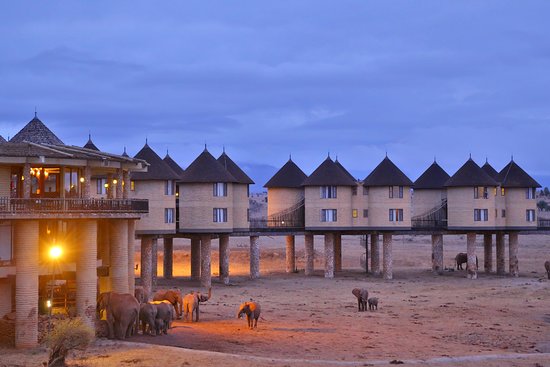
2 Days Tsavo East and Taita Hills – Saltlick lodge
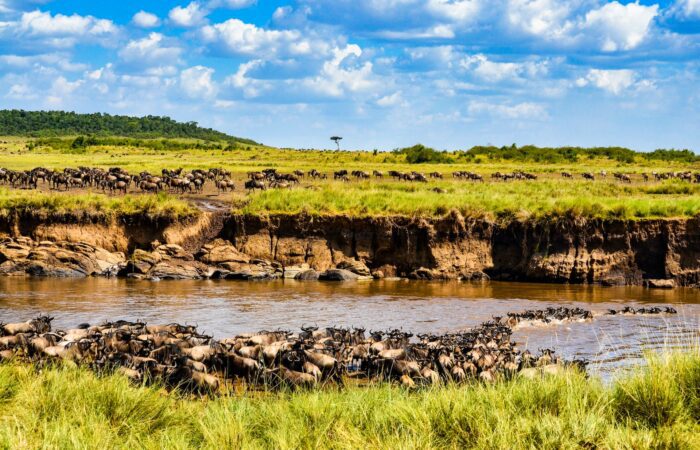
2 Days Masai Mara – Air Safari
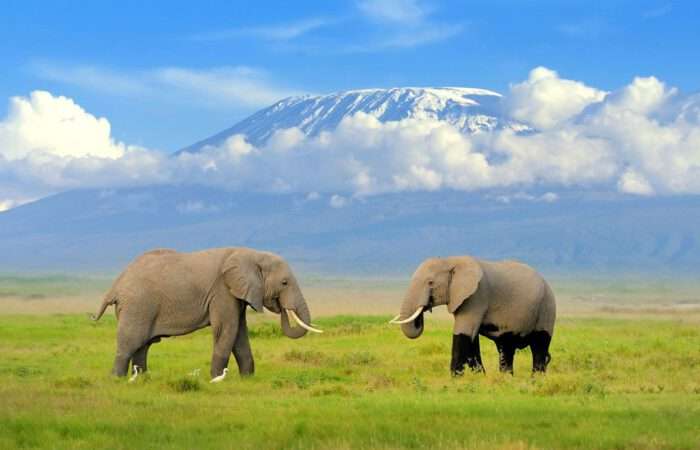
5 Days Tsavo West-Amboseli-Tsavo East
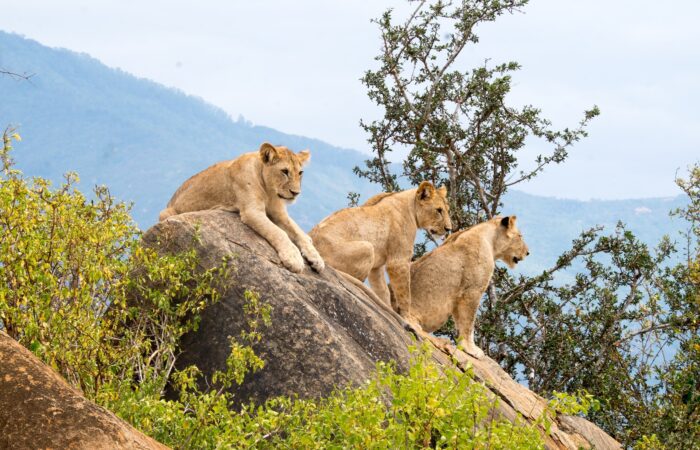
2 Days Tsavo East and Ngutuni Sanctuary
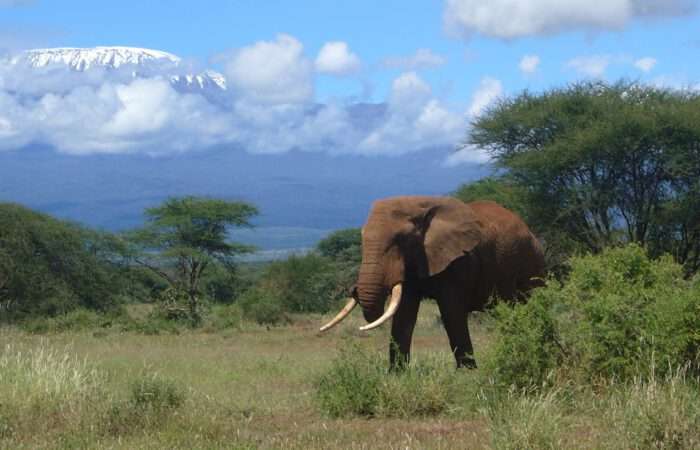
3 Days Tsavo East and Amboseli
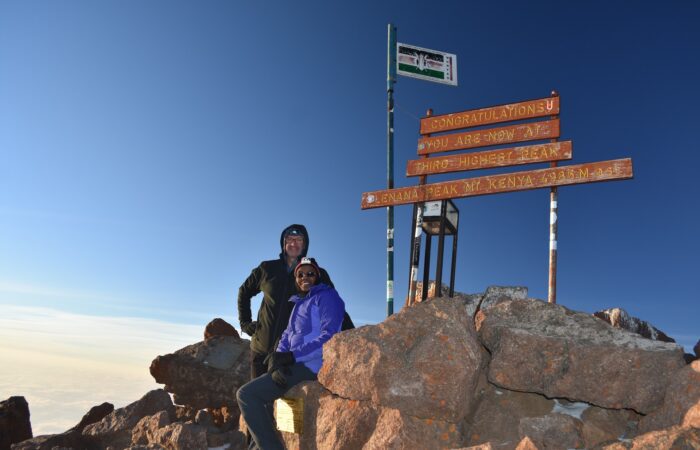
6 Days Mount Kenya Climbing Expedition
Popular tanzania jeep safaris.
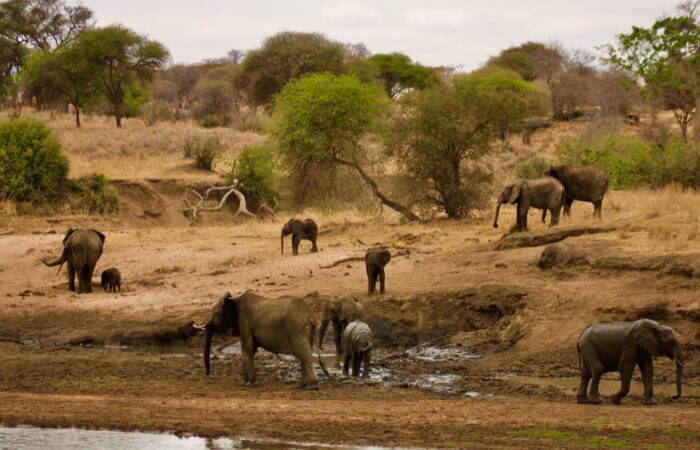
10 Days 9 nights Kenya and Tanzania Safari
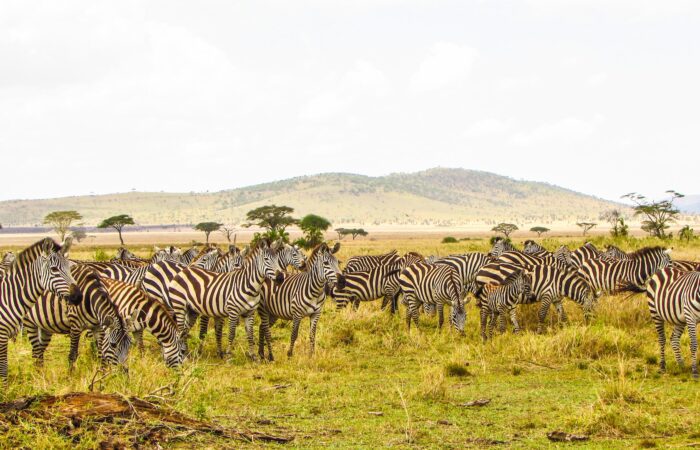
4 Days Tarangire-Serengeti-Ngorongoro
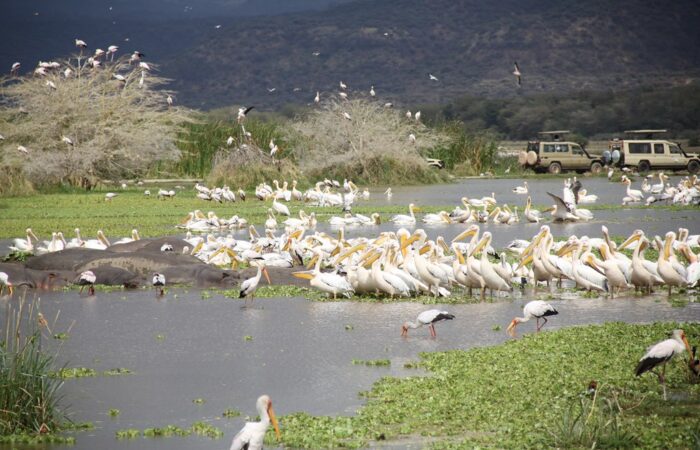
4 Days Lake Manyara-Ngorongoro-Tarangire Safari
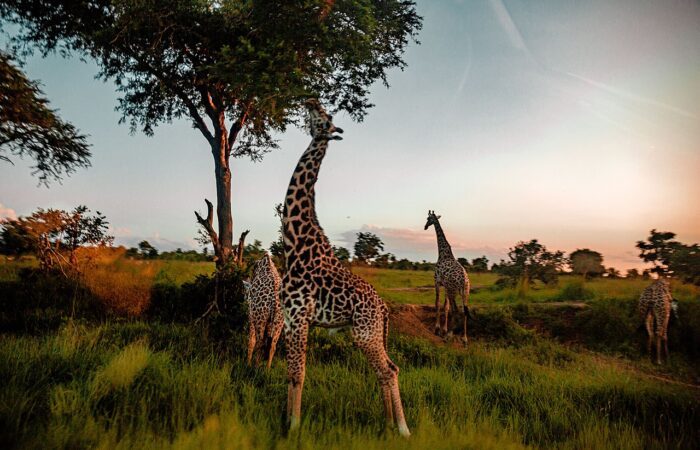
5 Days Mikumi and Selous Game Reserves
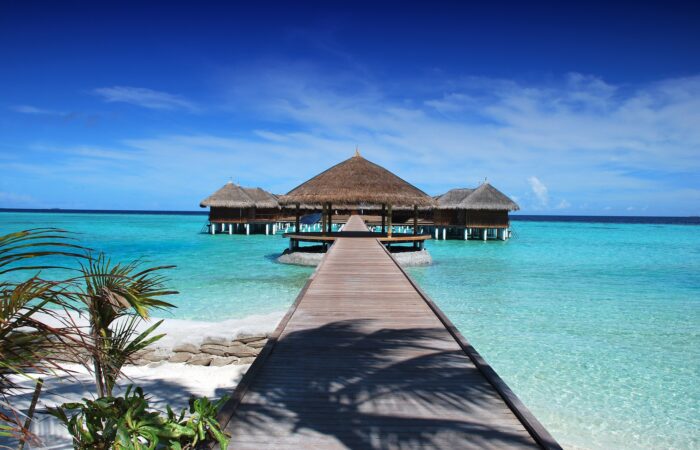
4 Days Zanzibar Island
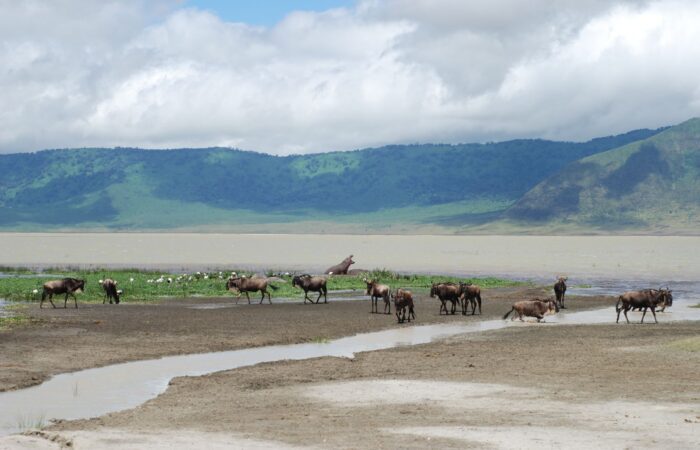
5 Days Arusha-Lake Manyara-Ngorongoro
Popular kenya jeep safaris destinations.
Are you yearning for an extraordinary African experience? Look no further than Ringo Safaris , your trusted partner in crafting personalized journeys to the heart of East Africa. The company offers tailor-made itineraries designed to suit your unique desires and schedule, ensuring that your Safari Packages or adventure is unlike any other. Kenya a country in East Africa , a place where safari started. Big 5 game viewing, incredible natural beauty and cultural encounters, combining East Africa’s top attractions with Tanzanian national Parks, Uganda Gorilla tracking and Ethiopia desert trips and the tropical beaches of the Kenyan coast and game park s is our target.
We will offer you the most affordable Kenya Jeep Safaris and Tanzania Jeep safari packages possible in 2024. Our biggest attraction being the natural movement of wildebeests, zebras and gazelles – following the summer rains and sweet grasses in an annual pilgrimage called the Great Migration of wildebeests in Masai Mara.
*Why book with us*
Safaris From Nairobi
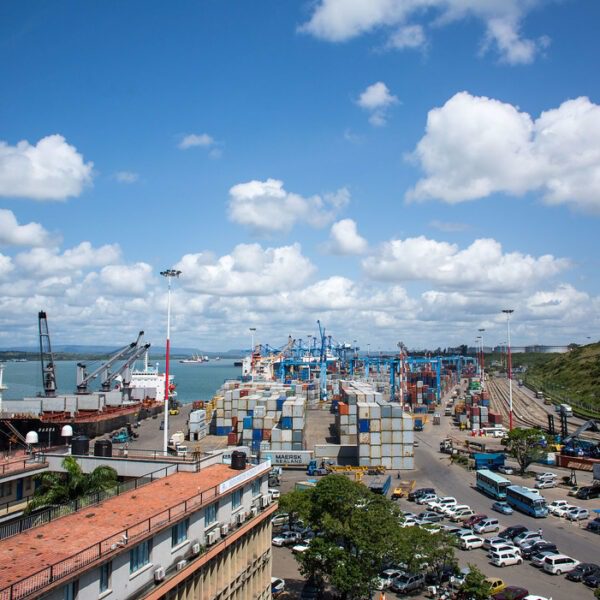
Safaris from Mombasa
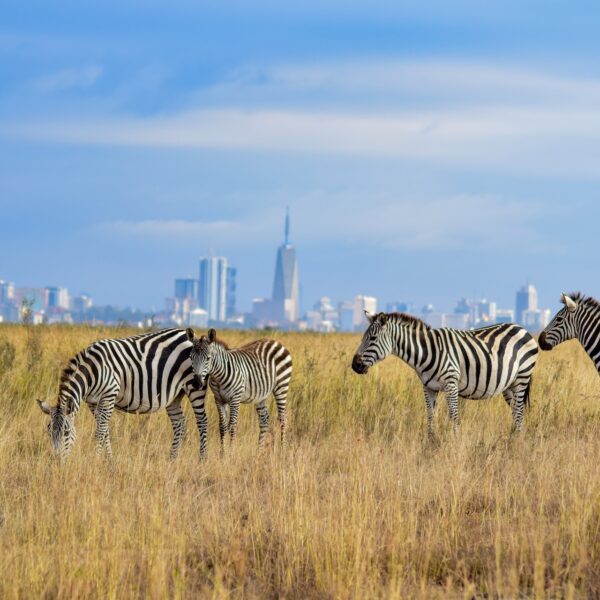
Day Trips & Kenya Jeep Safaris
Proceed Booking
Already a member.
Username or E-mail
Forget Password?
Don't have an account? Create one.
Or continue as guest.
TOP DESTINATIONS
- Kruger Park
- Okavango Delta
- Serengeti National Park
- Victoria Falls
TOP COUNTRIES
- South Africa
TRAVEL DEALS
View All Travel Deals
SOUTHERN AFRICA
East africa, indian ocean islands, top experiences.
- Beach Holidays
- Family Safaris
- Honeymoon Safaris
- Desert Safaris
- Luxury Rail Safaris
- Multi-Generational Safaris
- Positive Impact Safaris
- Photographic Safaris
- Walking Safaris
WILDLIFE SAFARI
Big Five Safaris
Birding Safaris
- Gorilla Trekking Safaris
- Migration Safaris
- Mobile Camping Safaris
- Horseback Safaris
FEATURED EXPERIENCES
Comfort levels, property types.
- Tented Camps
- Boutique Hotels
Featured Safari Collections
- Imvelo Safaris
- Green Safaris
- Time & Tide
- Saruni Basecamp
- Red Carnation
GET TO KNOW US
- Meet The Team
- Pricing Explained
- Traveller Reviews
- Traveller Stories
- Why Book With Us?
- HerdTracker
- Safari Cost Calculator
- South Africa In 360
- Trusted Safari Partners
- Newsletter Sign Up
What are you looking for?
- Safaris & Tours
- Destinations
- Experiences
- Accommodations
- Why book with us?
Hello traveller!
It's in Cape Town now.
We're sorry. Our safari planners aren't available now. Our office hours are 08:00 - 19:00 (GMT+2).
Call us to speak to an experienced safari planner.
Alternatively, we recommend...
Schedule a phone or Zoom call with one of our safari planners
Complete our travel enquiry form to connect with a safari planner
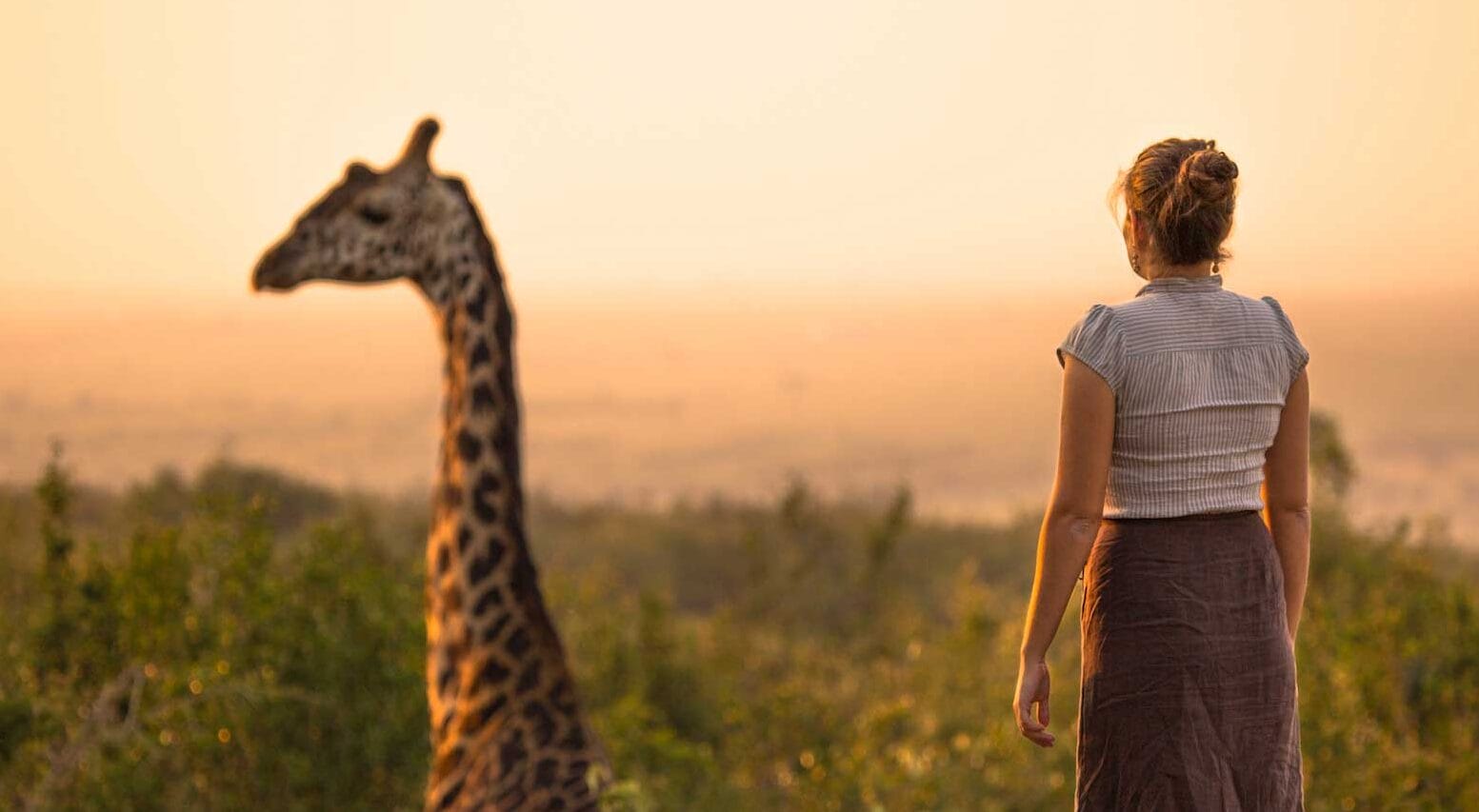
- Kenya Safari
The ultimate guide to your next Kenya Safari
Get to know kenya.

By Matthys van Aswegen
Safari Travel Planner
Date Published: 2 January 2014
A safari in Kenya offers breathtaking natural beauty in one of the world’s most pristine environments and allows you to get up close and personal with some of Africa’s most sought-after animals.
Combined with the sight of Mount Kilimanjaro , all this makes a Kenya safari experience unique. The annual Great Wildebeest Migration is best viewed from both sides of the Mara River, but you can experience the herds on the Kenyan side between August and October.
The southern parks and reserves like the Masai Mara and Amboseli National Park are well worth seeing. So are the northern parts of Kenya’s private concessions and Samburu reserves, where you can find the Special Five – reticulated giraffe, Grevy’s zebra, Gerenuk, Somali ostrich, and Beisa oryx.

Kenya Video
How it Works
View our recommended safaris for inspiration and get ready to plan your dream safari
Contact us or fill out an enquiry form and one of our travel experts will help you tailor make your perfect safari
Enjoy an authentic African experience.
Why Visit Kenya?
Wildlife encounters:.
- The Great Migration: Witness the awe-inspiring spectacle of the Great Migration, where over 1.5 million wildebeest, zebras, and gazelles traverse the Mara-Serengeti ecosystem, braving the crocodile-infested Mara River in search of greener pastures.
- Big Five: Kenya is home to the Big Five—lions, leopards, elephants, rhinos, and buffalos. National parks like Maasai Mara, Amboseli, and Tsavo offer some of the best opportunities to see these majestic animals in their natural habitat.
- Diverse Wildlife: Beyond the Big Five, Kenya boasts an incredible variety of wildlife, including cheetahs, giraffes, hippos, crocodiles, and over 1,000 bird species. It is a must for wildlife enthusiasts.
Scenic Beauty:
- Mount Kilimanjaro Views: Amboseli National Park offers stunning views of Mount Kilimanjaro, providing a picturesque backdrop for your landscape and wildlife photographic safaris.
- Diverse Landscapes: From the rolling savannahs of the Maasai Mara to the arid landscapes of Samburu and the lush forests of Aberdare, Kenya’s varied ecosystems offer you breathtaking scenery and unique safari experiences.
Cultural Richness:
- Maasai and Samburu Tribes: Engage with the local Maasai and Samburu communities, learning about their traditional way of life, customs, and vibrant culture. You can visit local villages and cultural tours provide a deeper understanding of Kenya’s rich heritage.
- Historical Sites: Explore historical sites like Lamu Island and Fort Jesus in Mombasa, which offer insights into Kenya’s colonial past and Swahili culture.
Luxury and Comfort:
- Exclusive Lodges and Camps: Stay in luxurious safari lodges and tented camps that provide exceptional comfort, service, and immersive wildlife experiences. Many lodges offer private verandas, infinity pools, and bespoke dining experiences, ensuring a memorable stay.
- Gourmet Cuisine: Enjoy gourmet cuisine that blends local flavors of nyama choma (meaning ‘grilled meat’ in Swahili) or Matoke (a rich traditional stew) with international culinary standards, prepared by skilled chefs.
Adventure and Activities:
- Game Drives: Experience thrilling game drives led by expert guides who help you track and spot wildlife.
- Walking Safaris: Discover the park’s hidden wonders on foot with guided walking safaris, offering a closer connection to nature.
- Hot Air Balloon Safaris: Experience the Mara from a unique perspective with a hot air balloon safari, providing stunning aerial views of the landscape and wildlife.
- Beach and Safari Combo: Combine your safari adventure with a relaxing beach holiday on Kenya’s stunning coastline, where you can enjoy white sandy beaches and crystal-clear waters.
Accessibility and Infrastructure:
- Well-developed Infrastructure: Kenya boasts excellent roads, well-maintained camps, and numerous entry points, making it accessible and convenient for travellers.
- Tourism Services: As a popular tourism destination, you have a wide range of services that ensure a smooth and enjoyable safari experience.
Responsible Tourism:
- Conservation Efforts: Your visit can support vital conservation initiatives aimed at protecting Kenya’s diverse ecosystems and wildlife. Many lodges and camps are involved in conservation projects that look to safeguard both Kenya’s environment and local communities.
- Community Support: Engage in responsible tourism practices that benefit local communities, fostering sustainable development.
A Kenya safari offers an extraordinary blend of wildlife, luxury, adventure, and culture. From the iconic Great Migration to the rich traditions of the Maasai people, it couldn’t be easier to plan a transformative Kenya safari experience that will leave you with memories to cherish for a lifetime.
Where to go in Kenya
Kenya is home to some of Africa’s most iconic safari destinations, each offering unique landscapes and wildlife experiences. The Maasai Mara National Reserve is a must-visit, renowned for the Great Migration where millions of wildebeest, zebras, and gazelles cross the Mara River from July to October. Amboseli National Park, with its breathtaking views of Mount Kilimanjaro and large elephant herds, offers another exceptional experience, especially from June to October. Tsavo National Parks, known for their red elephants and diverse terrains, provide an adventurous escape during the dry season. Samburu National Reserve, located in the arid north, is home to unique species such as the Grevy’s zebra and reticulated giraffe, offering excellent wildlife viewing year-round. Each destination promises an extraordinary safari adventure, rich with Kenya’s natural beauty and diverse ecosystems.
- Amboseli National Park
- Laikipia Plateau
- Masai Mara National Reserve
- Mombasa and Surrounds
- Mount Kenya and Aberdares
- Northwest Safari Circuit
- Rift Valley Lakes
- Samburu Springs and Mount Meru National Park
- Southern Safari Circuit in Kenya
- The Coastal Belt
- Tsavo East and West
- Watamu and Malinda
- Where to Go on a Kenya Safari
A long-standing highlight of Kenya’s safari circuit, 392 km2 (151 square mile), Amboseli was set aside as a wildlife reserve in 1899 and made a national park in 1974.
Renowned for its high density of elephants, the park forms the unfenced core of an 8,000 km2 (3088 square mile) ecosystem that includes large tracts of Maasai community land both in Kenya and across the border in Tanzania.
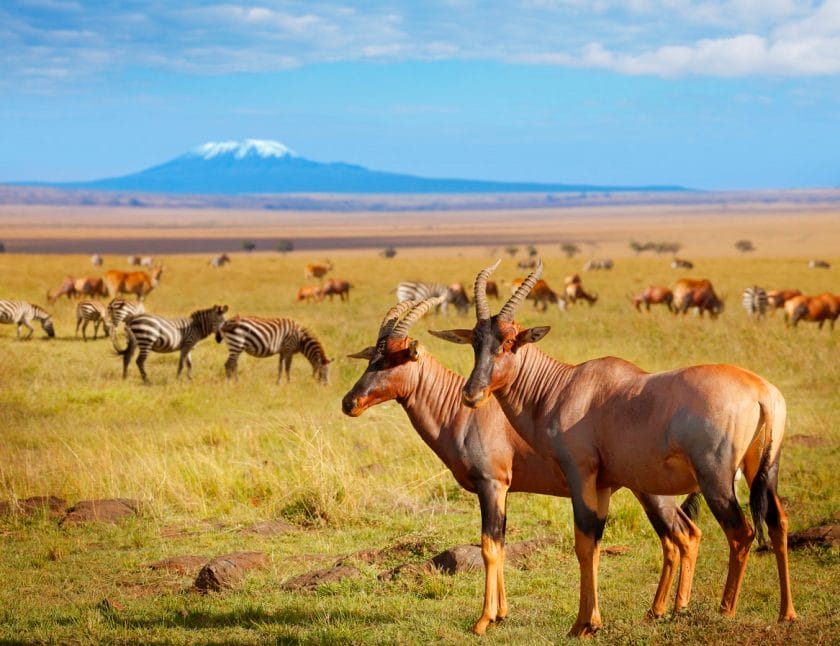
Amboseli National Park lies at the northern base of Mount Kilimanjaro and, cloud permitting, offers tremendous opportunities to photograph plains wildlife below the snow-capped peak of Africa’s tallest mountain.
Highlights of Amboseli National Park
The 5,891m (19,327ft) summit of Kilimanjaro – the world’s tallest freestanding mountain and Africa’s highest peak – actually stands within Tanzania. Still, the finest views of it are to be had from Amboseli.
For much of the day, the volcanically-formed mountain is rendered invisible by a shroud of clouds, but this usually lifts at dusk and dawn to reveal the iconic snow-capped peak rising a total 5km (3,1mi) above the dusty plains in all its breathtaking glory.

A dominating blue presence on maps of the park, the eponymous Lake Amboseli only holds water briefly in years of exceptional rainfall.
The rest of the time, this flat dry dust bowl supports large numbers of wildebeest, zebra, gazelle, and various exotic birds. The exotic birds you can expect to include the Secretary bird, Yellow-necked spurfowl, and the localized Pangani longclaw.
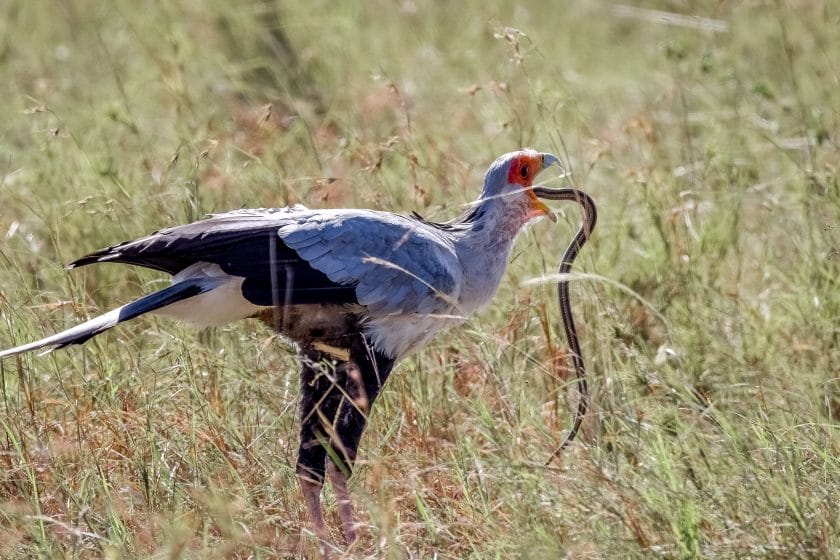
Scattered stands of umbrella thorn woodland, dominated by the distinctive flat-topped Acacia tortilis, are home to giraffe, impala, and a host of striking dry-country birds, notably Von der Decken’s hornbill, red-and-yellow barbet, rosy-patched bushshrike, and steel-blue whydah.
The permanent Enkongo Narok and Olokenya Swamps, fed by underground streams that rise on the upper slopes of Kilimanjaro, are home to plentiful hippos and a wide range of aquatic birds, among them long-toed lapwing, painted snipe, great white pelican, and grey crowned-crane.
Another must-see landmark is Observation Hill, which offers panoramic views across a pretty lake towards Tanzania, with Kilimanjaro often visible at dusk and dawn.
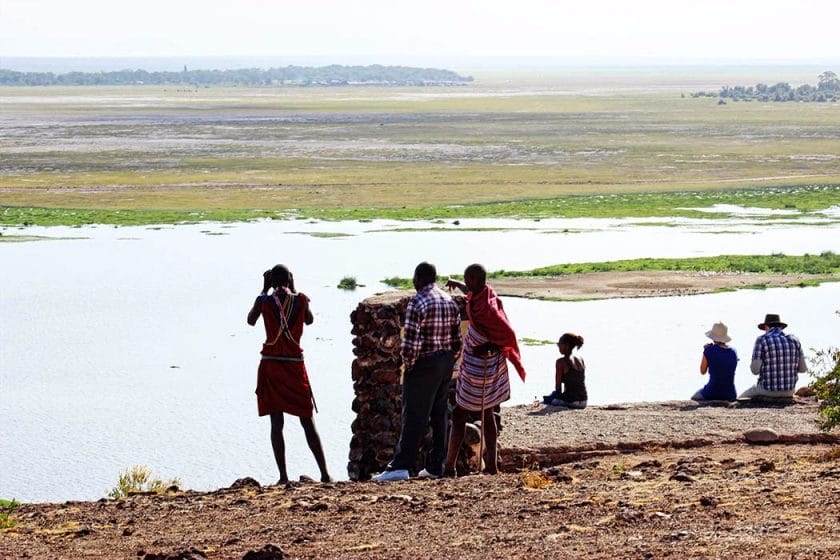
Amboseli’s most famous and entertaining mammalian residents are the subjects of the Amboseli Elephant Research Project , founded in 1975 by Dr. Cynthia Moss and retains detailed records of most births, deaths, and relationships within an extended community of around 50 families, whose range centers on the national park.
As a result of this close monitoring, the elephants of Amboseli are unusually well-habituated and contain a high proportion of old tuskers – excellent sightings are all but guaranteed.
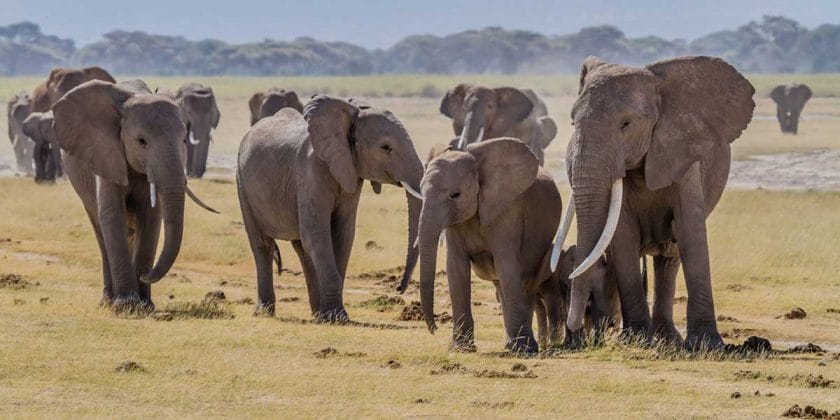
The core national park is surrounded by several private conservancies that comprise Maasai community land and offer exclusive traversing rights to one or two small camps or lodges.
The conservancies support several species seldom observed within the national park, for instance, Gerenuk and Lesser kudu, and the ability to head off-road allows guests to make the most of cheetah and lion sightings.
Practical Advice for an Amboseli Safari
- Coming by road, Amboseli is 230km (143mi) from Nairobi via Namanga, a drive that includes some heavily corrugated sections and takes about five hours in either direction.
- Road safaris in Kenya often combine Amboseli with Tsavo West National Park, which lies about 120km (75mi) away along a poor dirt road.
- It is also possible to fly into Amboseli from the likes of Nairobi, Mombasa, and the Masai Mara.
- Several safari lodges lie within the national park, and some excellent upmarket tented camps service the surrounding conservancies.
Dominated by livestock ranches in the colonial era, the vast Laikipia Plateau has since been transformed into one of East Africa’s finest and most exclusive wildlife destinations.
Indeed, this mosaic of several dozen private and community-owned sanctuaries, overseen by the non-profit Laikipia Wildlife Foundation , now operates as Kenya’s second-largest conservancy after Tsavo, comprising 9,500km2 (3668 square miles) in total.

Ecologically, the plateau is transitional to the central highlands and northern deserts. It provides an essential stronghold for rarities such as Grevy’s zebra, Black rhino, and African wild dog.
It also supports substantial numbers of lions, leopards, cheetahs, and dry-country specials such as Reticulated giraffes, Greater and Lesser kudu, Gerenuk and Beisa oryx.
Although the plateau forms a cohesive and jointly-managed ecological entity, the individual ranches and conservancy lodges all operate as self-contained tourist destinations.
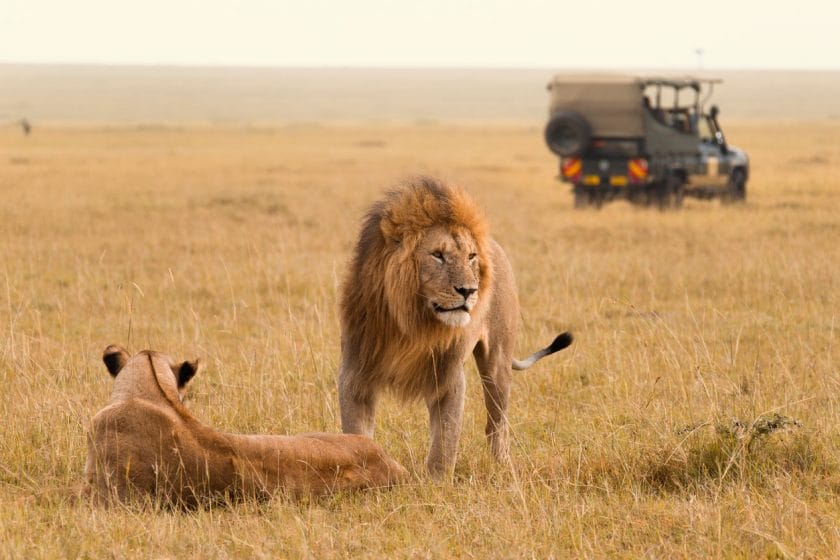
Most offer an all-inclusive tour package similar to those associated with the famous private game reserves bordering South Africa’s Kruger National Park . Activities include expertly guided game drives, and some conservancies also offer night drives, guided walks, and horseback safari excursions .
Highlights of Laikipia Plateau
The 365km2 (140 square mile) Ol Pejeta is the most accessible of the Laikipia conservancies and the only one that welcomes day visitors. It flanks the upper reaches of the Ewaso Nyiro River at the southern end of the plateau, only 25km (15,5mi) from Nanyuki.
One of the most crucial rhino sanctuaries in East Africa, it also supports elephant, buffalo, lion, leopard, cheetah, reticulated giraffe, Jackson’s hartebeest, Beisa oryx, gerenuk, and 500-plus bird species.
In addition to guided drives and walks, activities include lion tracking with researchers and visits to traditional villages.
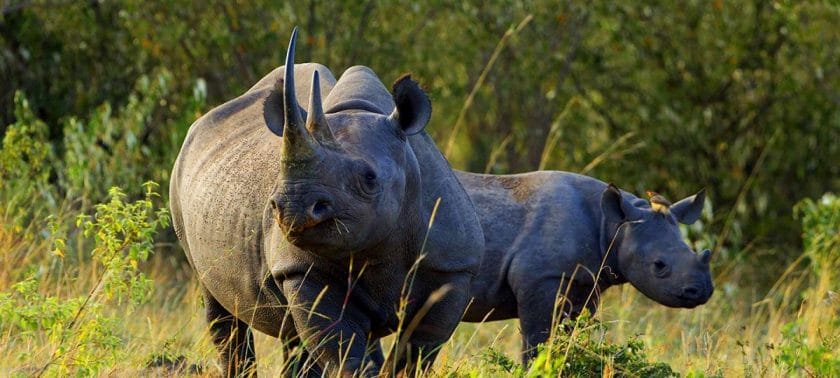
Situated within Ol Pejeta, Sweetwaters Chimpanzee Sanctuary was established in 1993 to protect orphans formerly housed at the Jane Goodall Institute in Burundi.
Since chimpanzees are not indigenous to Kenya, it’s the only place in the country where these charismatic apes can be seen on a Kenya safari tour , ideally by taking a boat trip along the Ewaso Nyiro River, which runs through the riparian forest where they now live.
A former cattle ranch reconstituted as a non-profit wildlife sanctuary in 1983, the 263km2 (102 square mile) Lewa Wildlife Conservancy is one of the oldest reserves in Laikipia and relatively accessible by car.

It’s a crucial stronghold for the endangered Grevy’s zebra, supporting around 400 individuals. It also provides sanctuary to significant numbers of Black and White rhinos and an easily spotted population of the localized Sitatunga antelope. Other wildlife includes elephant, lion, leopard, Spotted hyena, and a semi-resident pack of African wild dogs.
Remote and pristine, Northern Laikipia is carved up into a patchwork of community and private conservancies fronting the spectacular Ewaso Nyiro Gorge. The bush here is thicker and scrubbier than it is in the south, and while the Big Five are all present, densities are pretty low.
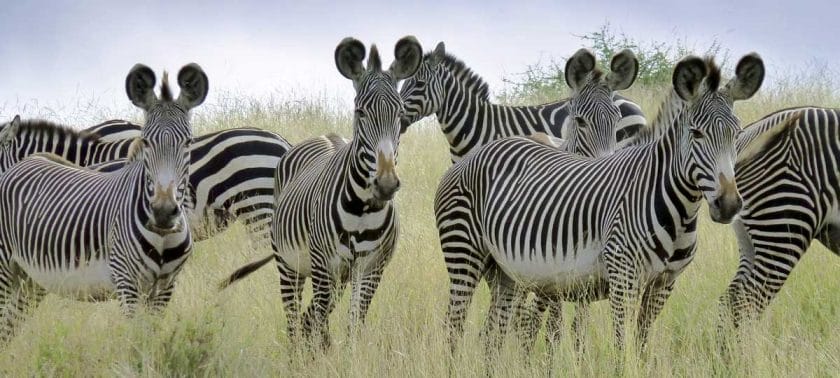
As a result, lodges tend to focus more on walking safaris than on motorized game viewing, making it an ideal bush retreat at the end of a longer safari in Kenya and offering an opportunity to concentrate on smaller mammals and exceptional birdlife.
Maralal, the informal capital of the Samburu people and gateway town to remote Lake Turkana, is perched at an altitude of 1,965m (6447ft) on the northern edge of the Laikipia Plateau. Its annual Camel Derby, held over the second weekend in August, is popular with residents and foreign visitors to Kenya.
Travel Tips for Laikipia Plateau
Private lodges in Laikipia mainly cater to the top end of the luxury Kenya safari market. Their standard package is an all-inclusive package that covers transportation, meals, activities, and, in some cases, drinks.
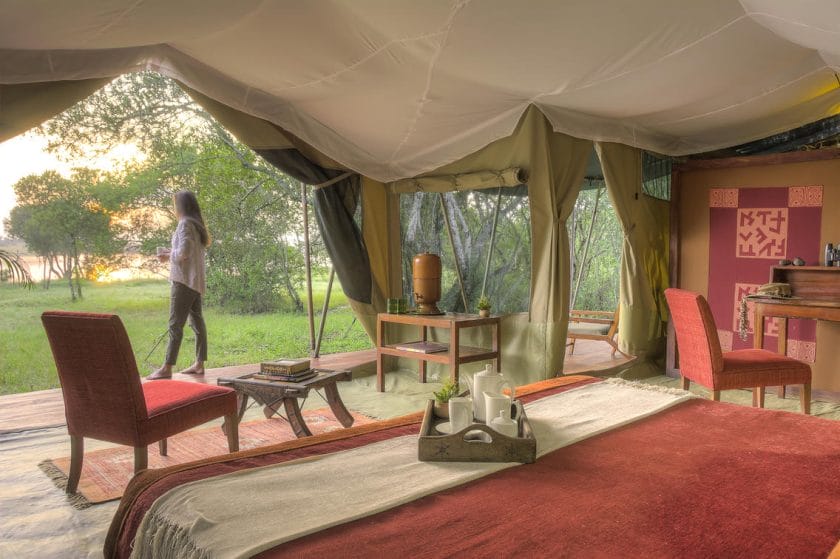
Coming from Nairobi, or elsewhere for that matter, the standard procedure would be to catch a scheduled flight from Wilson Airport to Nanyuki Airport, from which Ol Pejeta and Lewa Wildlife Conservancy are both relatively accessible by road. More remote lodges are usually reached by light aircraft charter.
Located in the far southwest of Kenya in the Great Rift Valley, the Masai Mara National Reserve is the country’s flagship park. It’s a vast wilderness of abundant big game, spectacular landscapes, and the scene of one of the planet’s most dramatic wildlife migrations .
The reserve is named after the Maasai people, a semi-nomadic tribe of pastoralists who have long inhabited the region, and their word to describe this landscape – “mara” – which means “spotted” – is a reference to the trees and bushes, as well as the shadows of passing clouds, that dot the plains.
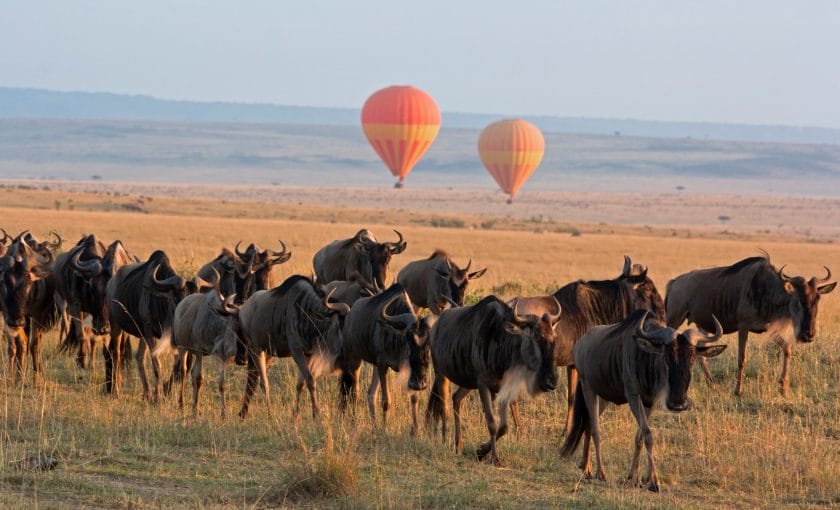
The Masai Mara was established in 1961 as a wildlife sanctuary. Today, it encompasses an area greater than 370 000 acres, with no fences between the park and the Serengeti National Park’s neighboring wilderness across the border in Tanzania.
A Masai Mara safari experience is one of the best ways to see wildlife: the concentrations of game here are astounding.
Resident in the reserve are the Big Five (although not many rhinos, and they’re hard to spot), as well as vast herds of plains game, hippos, and crocodiles in the rivers and more than 500 species of birds.
The reserve is particularly famous for its big cats – lions, leopards, and cheetahs – and the nature documentary BBC’s Big Cat Diary was shot on the reserve’s plains.
While the wildlife viewing at almost any time of the year is superb, the Masai Mara is best visited during the months of the Great Migration.
This is when millions of zebra, wildebeest, and gazelle make their way north into the park from the Serengeti, crossing the Mara River in search of fresh grazing.
Watching vast herds of animals on the move, as well as the thrilling kills by the big cats that pursue them, is one of the most exciting Masai Mara safari experiences you can have, and it’s no wonder that the Great Migration is at the top of most safari travelers’ bucket lists .
Apart from wildlife, the landscapes of the Masai Mara are stunningly beautiful: the classic Out of Africa backdrops of seemingly never-ending savanna studded with photogenic acacia trees are jaw-dropping.
To the west, the park is bordered by the Oloololo Escarpment, a dramatic plateau, while the rest of the park consists of rolling grasslands, acacia woodlands, riverine forests, and rocky hills.
Two major rivers – the Talek and the Mara – cut through the Masai Mara National Reserve, splitting it into three sectors: the Sekenani Sector, which lies to the east of the Talek River, the Musiara Sector, which is sandwiched between the two rivers, and the Mara Triangle, which is west of the Mara River.
The Narok County Council controls the Musiara and Sekenani sectors. At the same time, the more remote Mara Triangle is administered by a non-profit conservancy company, the Trans Mara County Council.
Musiara Sector offers excellent game viewing in the Musiara Marsh and some of the most spectacular wildebeest crossings at the Mara River. In the southeast of the park (and bordered by the Sand, Talek, and Mara Rivers), the Central Plains make up the largest part of the reserve.
The expansive grasslands of the Central Plains attract vast herds of plains animals, especially during the Great Migration from August to October, when the area is also famed for exciting big cat sightings.
Within the Central Plains, the savanna of Paradise Plain is prime cheetah territory, while Rhino Ridge is ideal for black-backed jackals, spotted hyenas, and bat-eared foxes.
Head to Lookout Hill for incredible panoramas of the Olpunyaia Swamp and sightings of hippos and for scenes of wildebeest crossing the river during the months of the migration.
As the closest area to Nairobi and with a vast number of lodges, hotels, and camps, the Central Plains is the most popular area of the reserve for tourists.
The Masai Mara’s rivers are home to hippos, massive Nile crocodiles, and many species of waterbirds. At the same time, the Mara River, which winds its way through the national reserve, plays host to huge pods of hippos and the dangerous crossings of wildebeest during the Great Migration.
Highlights of the Masai Mara National Reserve
An excellent introduction to the reserve’s varied grassland, woodland, and wetland habitats is provided by dawn hot air balloon safaris offered by almost all the lodges.
Over August and October, hot air balloon trips can also provide an astonishing vulture’s-eye view of the migrating wildebeest herds.
The Big Five are all present and seen with varying degrees of ease. Elephants are very common, as are buffaloes, the latter being the favored prey of the reserve’s huge lion prides, which often number 15 or more adults.
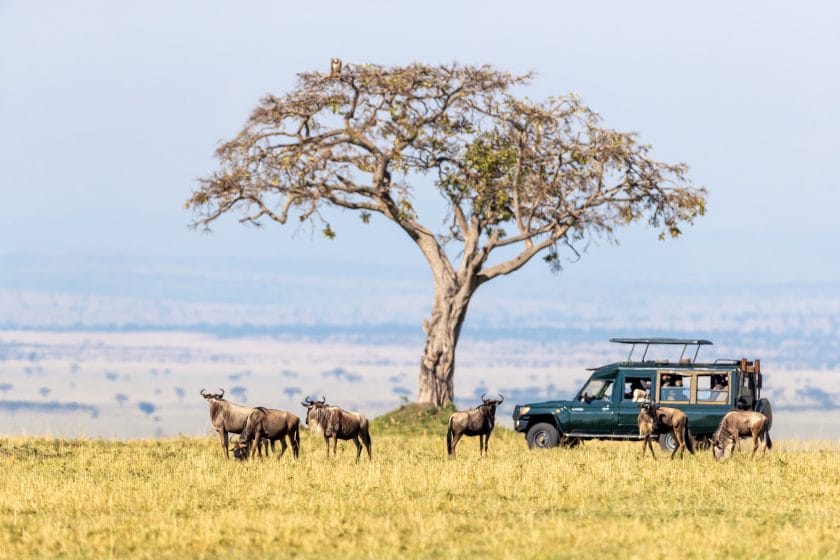
Leopards are more elusive but quite easy to locate if you know where to look, and while numbers of Black rhinos dropped alarmingly in the late 20th century, up to three dozen individuals still survive.
The rhino population here is the only one in Kenya that can be regarded as fully indigenous, with a gene pool (as yet) undiluted by translocated individuals from southern Africa or of mixed origin.
Even outside of the great migrations safari season , ungulates are well represented. There’s no better place for close-up views of Eland, the world’s largest antelope, which seems less skittish here than in most areas. Also likely to be seen are giraffe, impala, gazelle, Topi, Coke’s hartebeest, reedbuck, Defassa waterbuck, hippo, and warthog.

The Mara provides a fine introduction to East Africa’s savanna birdlife, with more than 500 species recorded in and around its borders, including such perennial favorites as Lilac-breasted roller, Superb starling, and Little bee-eater. Which makes this the perfect destination for photographic safaris in Kenya.
Large ground birds such as ostrich, Southern ground hornbill, Kori bustard, and the localized Denham’s bustard are also common. The riparian forest along the Mara and Talek Rivers is an essential habitat for niche species such as Ross’s turaco, Schalow’s turaco, and Grey kestrel.
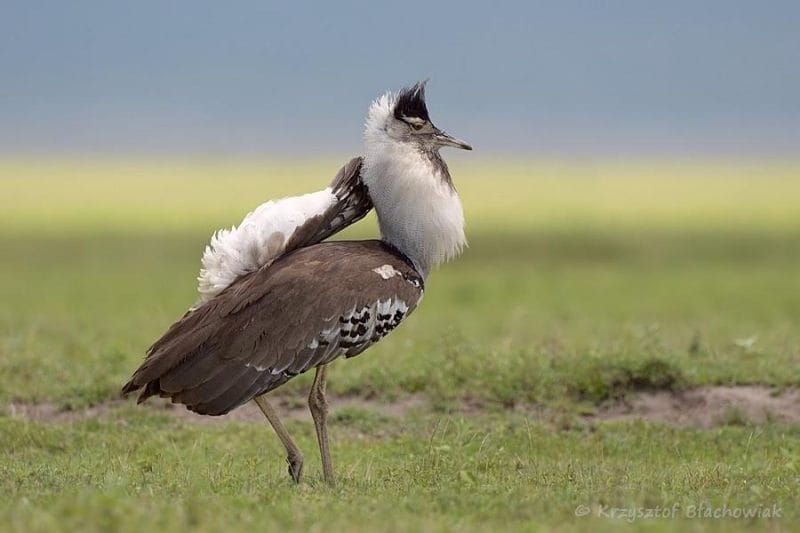
The drama of the wildebeest migration is encapsulated by the multiple river crossings that punctuate the great herds’ three-month tenure in the Masai Mara.
The river crossings usually start in August, when the wildebeest disperse into the plains surrounding the Mara River and continue regularly until the southward migration begins in October.
The wildebeest tend to stick to a few favored crossing points; the four used with greatest regularity lie along a 5km (3,1mi) stretch of river, meaning it’s pretty easy to keep tabs on any pending crossing.
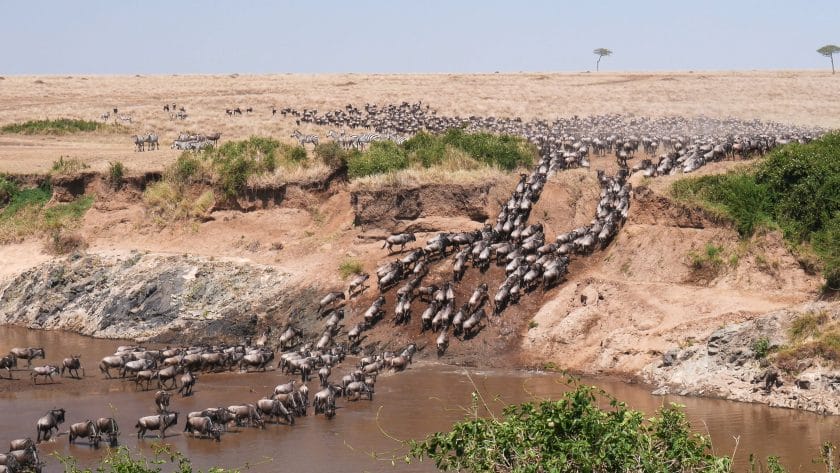
Bounded by the Mara River to the east and Oloololo Escarpment to the northwest, the Mara Triangle is an untrammeled westerly wedge that forms part of the national reserve. Still, it has been managed by a non-profit management company, the Mara Conservancy , since 2001.
The Mara Triangle offers a similar standard of game viewing to the rest of the national reserve, but it’s easier to escape the congestions of safari vehicles that tend to congregate around wildlife sightings east of the river, especially during the migration season.
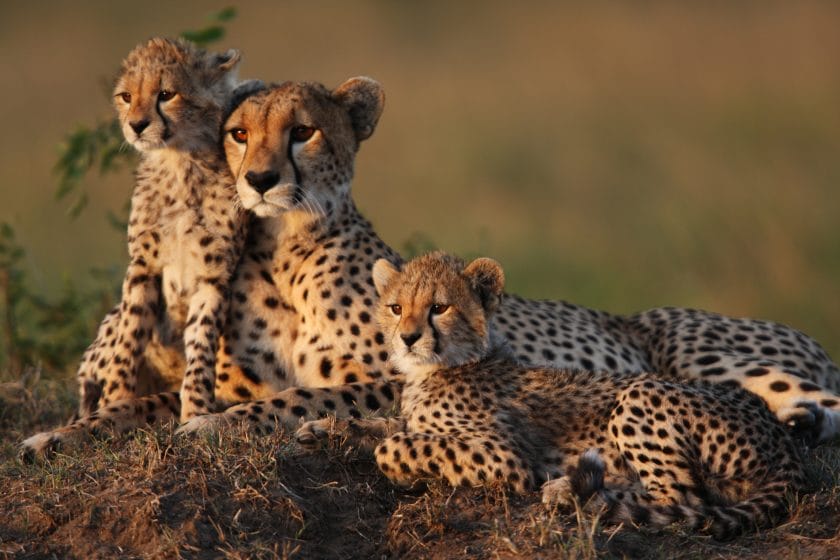
The national reserve is bordered by a cluster of private concessions and ranches, most of which are leased from or owned by local Maasai communities and serviced by a handful of small tented camps that share exclusive traversing rights.
The significant advantage of staying in one of these concessions is that, even more so than the Mara triangle, there is very little tourist traffic, so you are more likely to have sightings all to yourself. Many concessions also offer guided game walks and night drives, both of which are forbidden in the reserve proper.
Practical Advice for the Masai Mara National Reserve
- The easiest and most comfortable option is a fly-in safari package from Nairobi. This can be arranged through any reputable operator as a standalone safari or as part of a longer countrywide itinerary.
- Road safaris from Nairobi generally work out to be cheaper, but it’s worth bearing in mind that the bumpy six-hour drive will consume a significant proportion of your time and energy in either direction.
- There is no shortage of lodges and camps scattered in and around the Masai Mara . Unfortunately, this means that the reserve has acquired a reputation for being touristy and overcrowded, especially at the busiest times of the year.
- When you book a lodge, be aware that crowding tends to be most extreme in the sector southeast of the Talek River and its confluence with the Mara.
- The central sector, cupped between the Talek and Mara, tends to be quieter. Still, the best lodges for those seekng an authentic bush experience are those in the westerly Mara Triangle and private concessions and ranches outside the park.
Mombasa is steeped in history. Kenya’s largest port and second most populous city, it was first mentioned by name by the 12th-century Arab geographer Al Idrisi, who described it as a prosperous trade emporium selling spices, gold, and ivory to ships from Arabia and Asia.
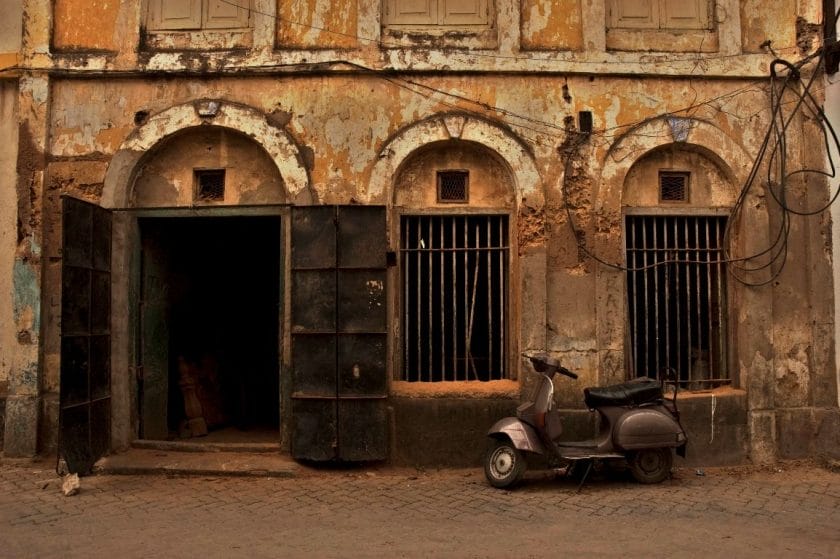
Today, the bustling island-bound city center is overlooked by the imposing Portuguese-built Fort Jesus. Its languid older quarters possess an organic layout and historical feel rare in more modern cities.
For all its commercial and historical importance, Mombasa is not so much a tourist focus as a funnel through which most visitors pass en route to the suburban resort cluster of Nyali, Kenyatta, Bamburi, and Shanzu, or to Diana Beach 30km (19mi) to the south.
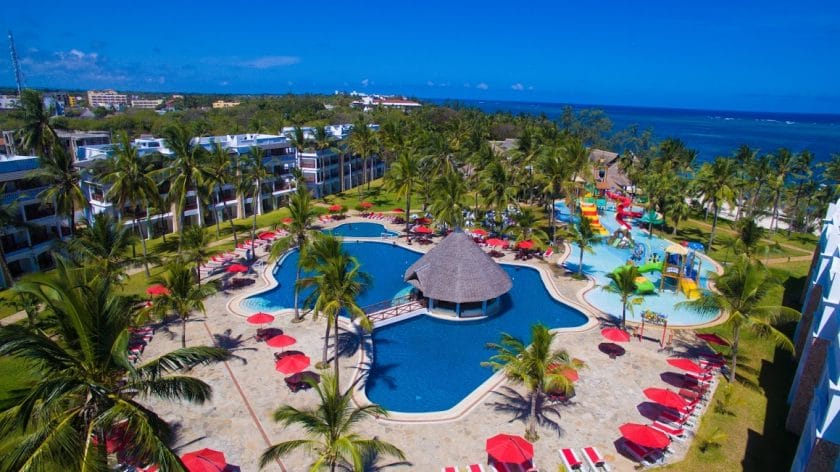
Inevitably, beach and marine activities dominate in this part of Kenya, but the underrated Shimba Hills National Reserve provides an excellent destination for those seeking a quick wildlife fix.
Highlights of Mombasa and its Surrounds
With thick seaward walls and turrets rising a full 16m (52ft) above the coral foundation, Fort Jesus has cut an imposing figure above Mombasa’s old town harbor since it was constructed by the Portuguese in the 1590s.
For centuries afterward, it was the most strategically important building on the East African Coast, changing hands more than a dozen times before its occupation by the British in 1895.
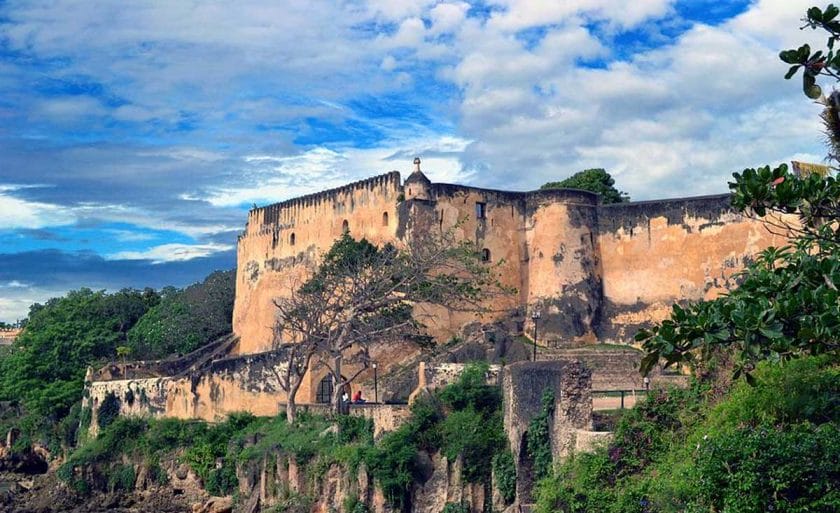
Now a UNESCO World Heritage Site, the fort has more-or-less retained its original plan and incorporates a museum housing an impressive collection of artifacts unearthed during excavations, ranging from Chinese porcelain to Arabic pottery.
A panel of wall paintings executed by an unknown Portuguese sailor sometime before 1639 can be seen in situ. Overlooking the old harbor north of Fort Jesus, Mombasa Old Town is the city’s oldest continuously settled district, and several of its mosques were founded in medieval times.

It comprises narrow alleys lined by two- and three-story Victorian buildings adorned with oriental-influenced fretwork balconies, carved window frames, and Zanzibar doors.
It’s a lovely area to stroll around, infused with a striking sense of community. A post-millennial facelift has seen many once-dilapidated buildings restored as galleries, boutiques, or characterful juice and coffee shops.
The most popular beach destination near Mombasa, Diani is a long and idyllic stretch of palm-fringed white sand, lapped by calm, warm waters protected by an offshore reef.
Despite being the focal point of a holiday in Kenya’s all-inclusive beach package scene , Diani’s beach remains blissfully uncrowded by Mediterranean standards, and there’s some fine offshore diving and snorkeling on offer.

It holds plenty of interest for wildlife lovers too. Relict patches of coastal forest are home to Sykes, Vervet, and Angola colobus monkeys, along with striking forest birds such as Trumpeter hornbill and Schalow’s turaco.
Only 30km (19mi) inland of Diani, the underrated Shimba Hills National Reserve is an excellent destination for a day or overnight luxury safari in Kenya.
The only Kenyan stronghold of the handsome Sable antelope is also home to giraffe, zebra, warthog, elephant, buffalo, and leopard.
The reserve also protects a patch of coastal forest inhabited by Angola colobus monkey, Blue duiker, Red-bellied coast squirrel, and Green-headed oriole. For a leg stretch, take the two-hour guided hike from Elephant Lookout to the 21m (69ft) high Sheldrick Falls.
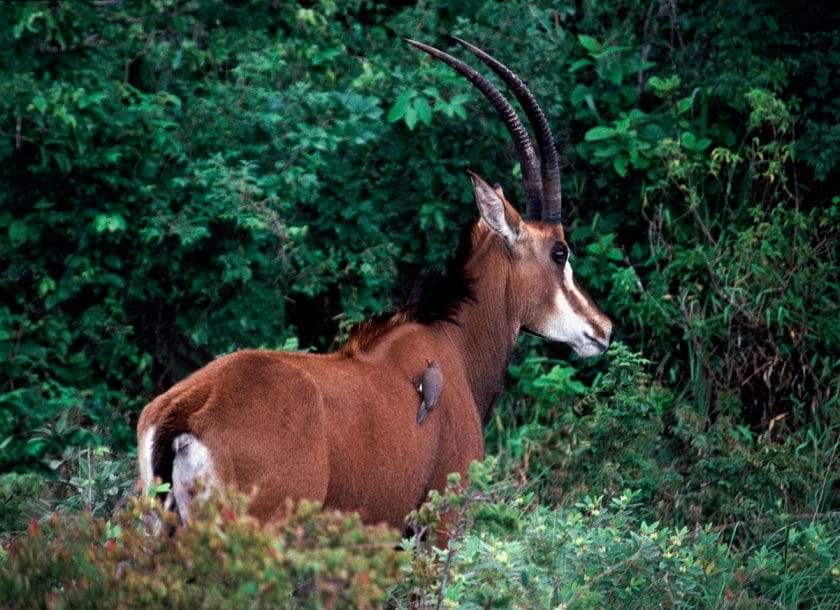
A popular day trip from Diani, Wasini Island is known for its so-called ‘Coral Garden’, a bleakly attractive landscape of partly exposed coral outcrops, sand flats, and mangroves that can be explored from a boardwalk managed as a community project by a local women’s group.
Immediately north of Mombasa, the 8km (5mi) stretch of coast running from Nyali to Kenyatta Beaches is less resort-like than Diani but still hosts some excellent beach hotels, and glass-bottomed boat excursions into Mombasa Marine National Reserve are on offer.
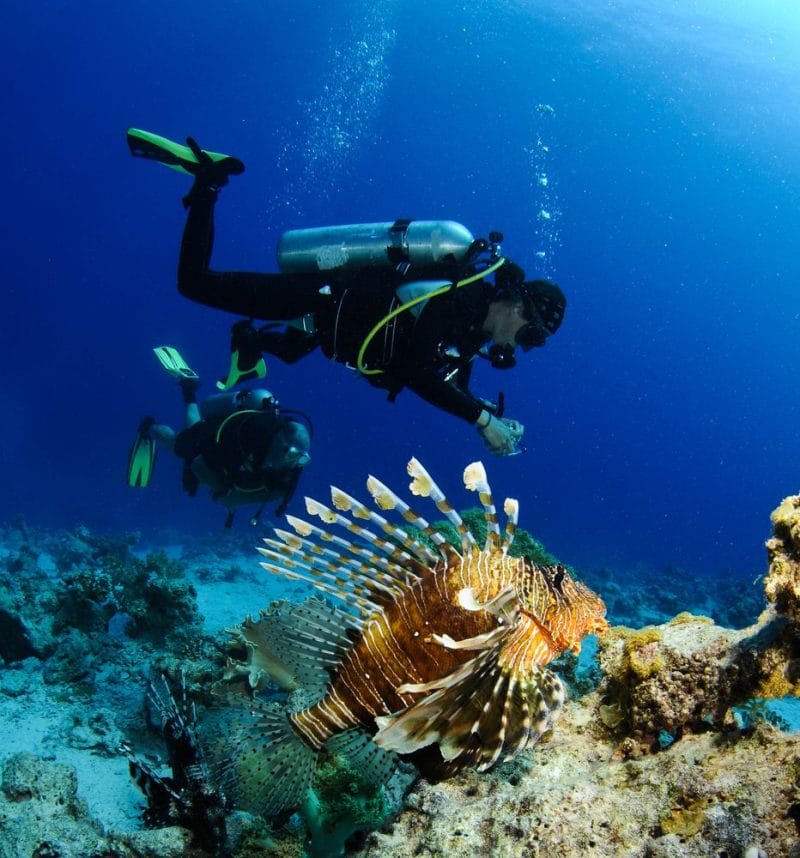
Bombolulu Workshops is an admirable non-profit craft center that creates employment for more than 150 disabled people and sells a wide variety of handcrafted items in its on-site shop.
Slotting in somewhere between a zoo and a safari park, family-friendly Haller Park comprises a reclaimed and reforested limestone quarry that can be explored along a 90-minute nature trail. Large enclosures contain wildlife such as giraffes, hippos, buffalo, and various antelope.
Practical Advice for Mombasa and Surrounds
- Central Mombasa stands on a 5.3km2 (2 square mile) island connected to the north coast by the 400m (1312ft) Nyali Bridge, the interior by the short Makupa Causeway, and the south coast by the Likoni Ferry across Kilindini Harbour.
- Most visitors arrive by air at Moi International Airport (MBA), which is serviced by a steady stream of domestic flights to/from Nairobi and elsewhere and by half-a-dozen international carriers.
- The airport is situated around 10km (6,2mi) from the city center via Makupa Causeway, and travelers heading to or from Diani need to allow sufficient time to pass through the city center and wait for the Likoni Ferry.
- Another popular way to travel between Nairobi and Mombasa is by train, following the so-called Lunatic Express constructed in the 1890s.
- Dozens of tour operators in Mombasa and Diani offer day trips further afield to the likes of Shimba Hills and Wasani Island. Car rental services are also widely available.
- There is no shortage of accommodation in and around Mombasa . The main clusters of beach resorts are at Diani and Nyali, while accommodation in Mombasa tends to be more low-key, with the most attractive options being found in and around the Old Town.
Very different in character to the rest of the country, the lushly vegetated and densely populated central highlands that stretch northward from Nairobi are capped by the hemisphere-straddling Mount Kenya and its permanent equatorial glaciers.
Rising to 5,199m, Mount Kenya is the second-tallest in Africa, topped only by Kilimanjaro , and it is linked to the more westerly 3,999m Aberdare Range by an elevated grassy saddle.
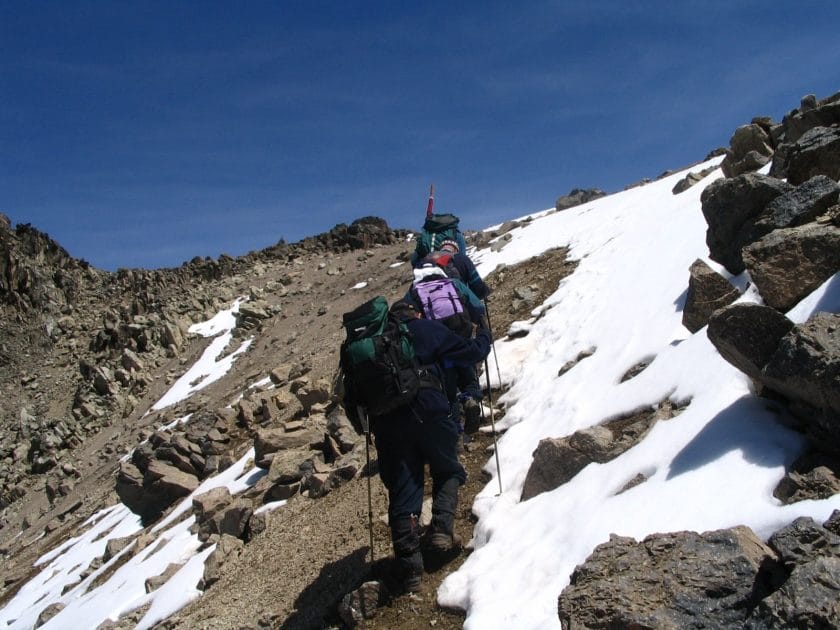
Oddly, these two massifs represent extremes of geological antiquity. Where the contorted folds of the Aberdares rank among the most ancient in East Africa, dating to before the Age of Dinosaurs, Mount Kenya is an extinct volcano that erupted into existence several million years after our earliest bipedal ancestors first strode across the Rift Valley floor.

Mount Kenya and the Aberdares are both protected within a national park. They also share many ecological affinities, and collectively support most of the country’s surviving Afro-montane forest and Afro-alpine moorland, the latter an otherworldly landscape of open moorland studded with bizarre giant forms of heather, lobelia and groundsel.
The two mountains host an outstandingly varied fauna, including all the Big Five alongside more localised forest specialists such as Sykes monkey, black and white colobus, Harvey’s red duiker, mountain antelope and giant forest hog.
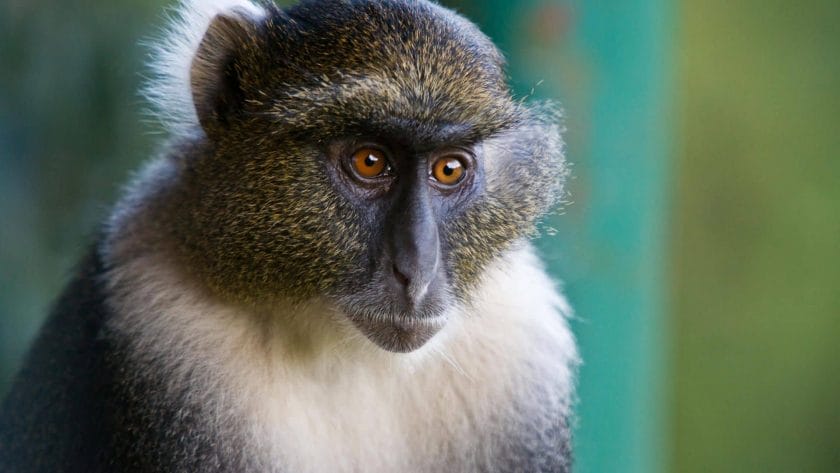
Though not as popular as Kilimanjaro, the multi-day hike to Point Lenana – at 4,985m, the highest point on Mount Kenya accessible without specialist climbing equipment – leads through a similar spectrum of attitudinally-determined Afromontane vegetation zones.
And while it may appeal less to peak-baggers, Mount Kenya has the advantages of being less crowded, less expensive, and less likely to be treated as a single-minded exercise in summiting.
The highest two points on Mount Kenya at 5,199m and 5,188m respectively, Batian and Nelion Peaks are highly alluring to experienced climbers with specialist equipment.
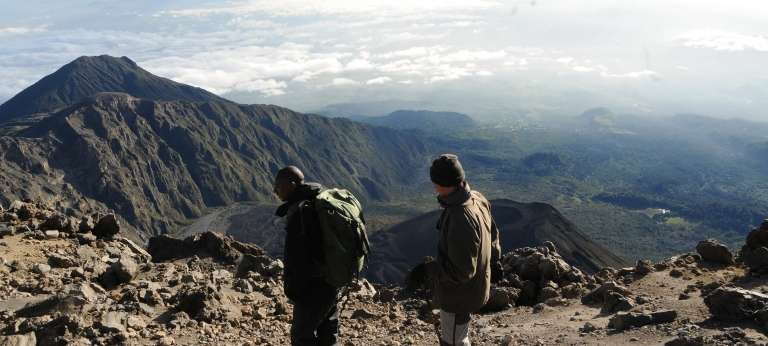
Aberdare National Park is best known as the site of the tree hotels Treetops and The Ark, stilted timber monoliths which double as overnight hides overlooking forest-fringed water holes that attract a steady stream of wildlife, including elephant and black rhino.
Historic Treetops gained overnight fame in 1952 when it hosted the young Princess Elizabeth on the very night that her father King George VI died, and she became the uncrowned Queen of the United Kingdom.
Conceptually similar to the tree hotels of the Aberdares, Serena Mountain Lodge , the only hotel set in Mount Kenya’s forest zone, provides an excellent introduction to highland fauna.
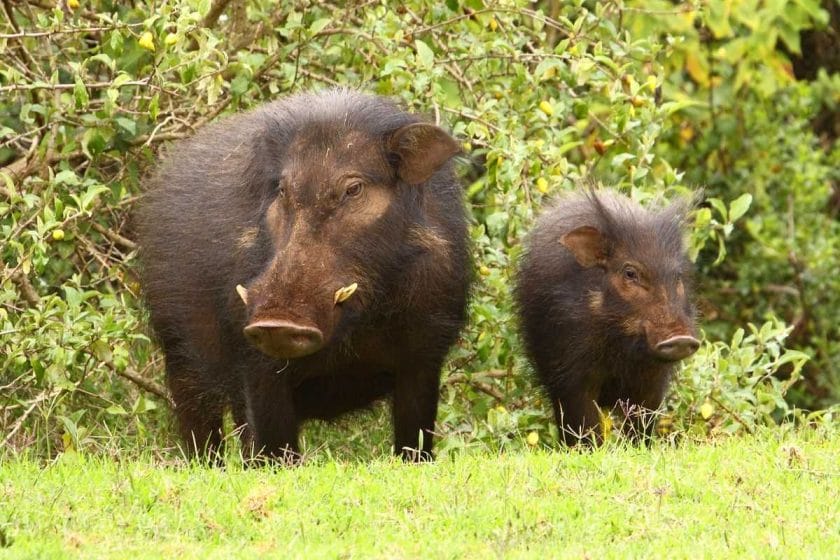
It overlooks a waterhole that occasionally attracts all the Big Five, as well as forest specialists such as giant forest hog, bushpig, Sykes monkey, black-and-white colobus monkeys, silvery-cheeked hornbill and Hartlaub’s turaco.
Game drives in Aberdare National Park follow little-used network of rough 4×4-only roads from the forest zone into an Afro-montane moorland punctuate with lovely waterfalls.
Wildlife includes black rhino, elephant, buffalo, giant forest hog and various monkeys. The Aberdares is one of the few places in Africa where melanistic (all black) leopards are regular.
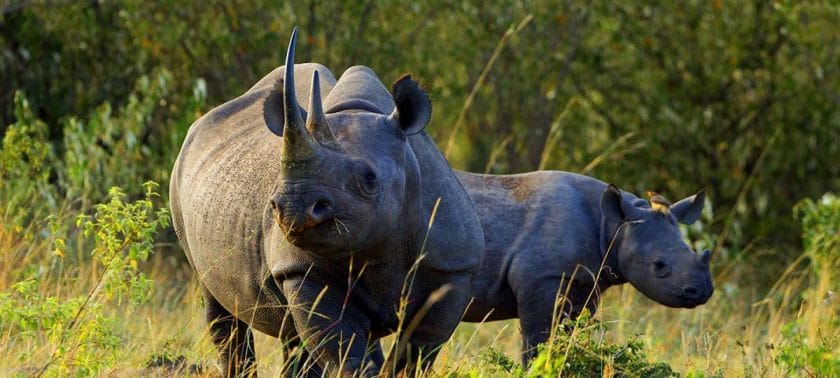
The forests support one of only two remaining wild populations of the mountain bongo Tragelaphus eurycerus isaaci – a beautifully marked and Critically Endangered large forest antelope that is now effectively endemic to Kenya having become extinct elsewhere in its range.
Kenya’s highest town, Nyahururu is perched at 2,360m on the edge of the Laikipia Plateau alongside the attractive Thomson’s Falls, which plummet 75m over a volcanic ledge into a forested gorge inhabited by black and white colobus monkeys and a varied selection of birds.
The private Mount Kenya Wildlife Conservancy is a wildlife orphanage that operates several important conservation projects, none more so than rehabilitation of a herd of captive-born mountain bongos for release into the forests of Mount Kenya, where it was last seen in the wild in 1994.

Founded in 1970 as a breeding centre for rhinos, Solio Game Ranch is a private conservancy situated on the grassy highland saddle that links Mount Kenya to the Aberdares.
Starting with a combined introduced population of 39, it now hosts at least 50 black and 85 white rhino. In addition, more than 100 individuals born at Solio have been translocated to other locations in Kenya.
Travel Tips for Mount Kenya and Aberdares
- All the sites listed above can be reached in up to four hours from Nairobi along well surfaced roads through Thika. Regular domestic charter flights connect Nairobi and the Masai Mara to Nanyuki Airport, from where it is a short drive to most sites of interest in the vicinity of Mount Kenya and the Aberdares.
- Hikes on Mount Kenya are best arranged with specialist operators who know the mountain well and employs experienced guides and porters. The shortest option for a a round hike is three days, but it is advisable to spend at least three nights on the mountain before ascending Lenana to minimise the effects of altitude.
- Any of the region’s three tree hotels – Treetops, The Ark or Serena Mountain Lodge – makes for a great overnight stop on road safaris between the Masai Mara or Rift Valley and Laikipia, Samburu-Buffalo Springs, Shaba or Meru.
- In addition to these upmarket lodges, medium-large highland towns such as Nyeri, Nanyuki, Nyahururu, Meru and Embu all have a few adequate restaurants and hotels. They also offer the opportunity to draw money or do some last-minute grocery shopping before heading out on safari.
The vast swathe of Kenya that runs north from Nairobi towards the remote border with Ethiopia is characterized by geographic extremes. On the one hand, the cool and fertile central highland rise towards the 5,199m (17,057ft) peak of Mount Kenya, not only Africa’s second-tallest mountain but sufficiently lofty to actually support glaciers less than 15km (9,3mi) south of the equator.
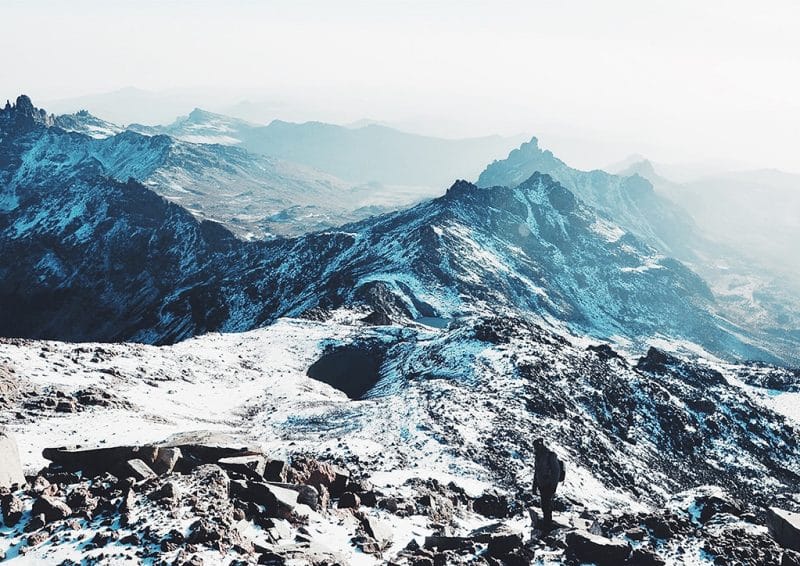
By contrast, the hostile plains that stretch north from Mount Kenya rank among the most arid and barren of sub-Sahelian landscapes, supporting a thin population of nomadic peoples who eke out a living as traditional pastoralists.
These contrasting landscapes offer some of Kenya’s most nuanced and varied game viewing. Admittedly, there’s nothing quite on the scale of the Masai Mara.
Still, the remote and rugged likes of Meru National Park, Samburu-Buffalo Springs National Reserve, and the private ranches of Laikipia support a fascinating array of dry-country wildlife. At the same time, the highlands around Mount Kenya are rich in forest wildlife.
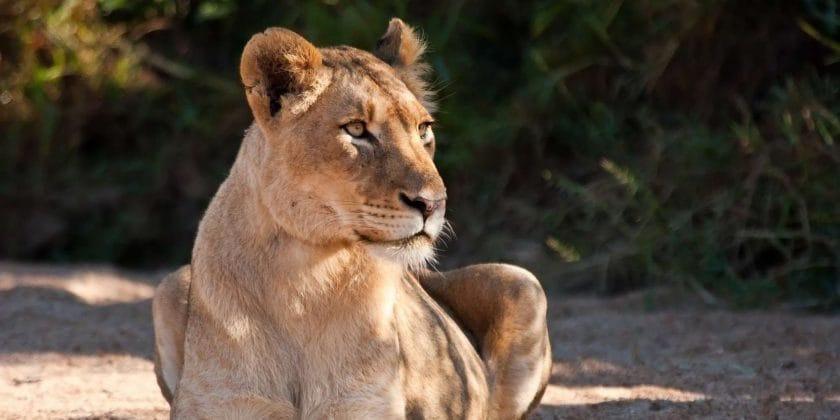
Overall, the northwest will perhaps be less rewarding to first-time Kenya safari goers than the more famous southern circuit. Still, it arguably has more to offer repeat African visitors when it comes to unusual wildlife encounters and a genuine wilderness experience.
Highlights of the Northwest Kenya Safari Circuit
Protecting Africa’s second-tallest mountain, Mount Kenya National Park is also Kenya’s most popular destination for multi-day hikes . For ordinary hikers, the usual goal is the 4,985m (16,355ft) high point Lenana, but peak-baggers with suitable climbing experience and gear can head all the way up to the 5,199m (17,057ft) Batian Peak.
Weather permitting, the landscapes – from lush rainforest to stark equatorial glaciers – are stunning. Set in the forest zones of Mount Kenya and nearby Aberdare National Park , a trio of hide-like tree hotels such as Serena Mountain Lodge, Treetops, and The Ark offer a unique overnight game-viewing experience.
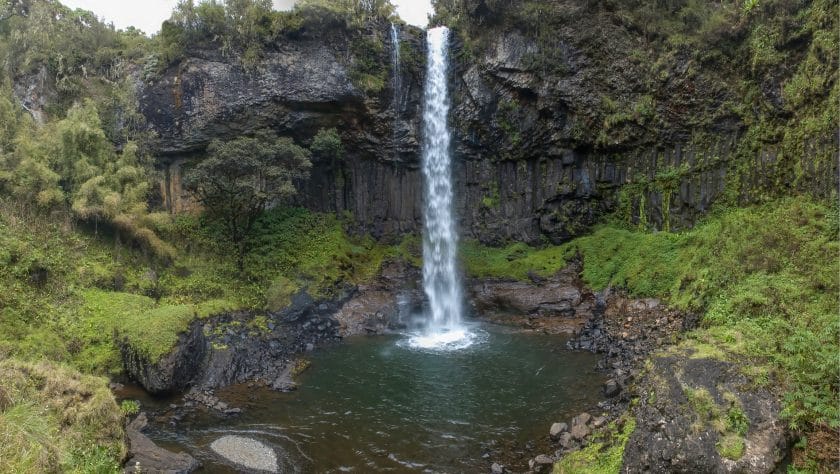
These lodges overlook water holes that regularly attract some or all of the Big Five and a host of secretive forest dwellers. The attractive Thomson’s Falls stands alongside Kenya’s highest town Nyahururu.
Solio Game Ranch, set on the grassy highland saddle between Mount Kenya and the Aberdares, operates Kenya’s most important breeding program for Black and White rhinos.
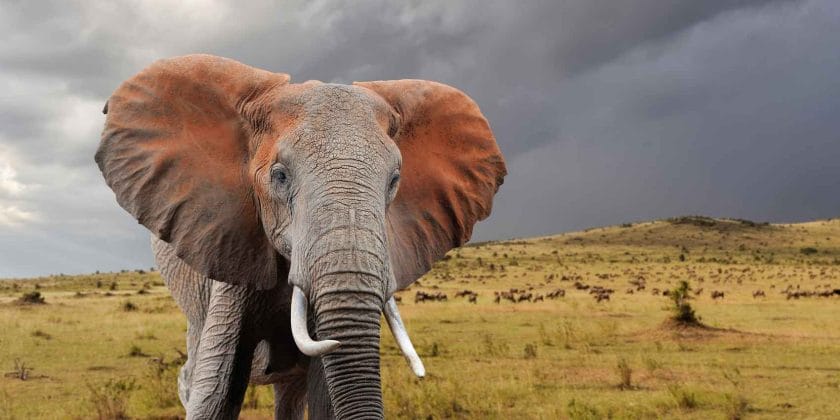
The vast Laikipia Plateau protects a patchwork of private and community-owned sanctuaries that offer exclusive all-inclusive safari packages focussing not only on the Big Five but also on rarities such as Grevy’s zebra and Black rhino.
At many ranches, game drives are supplemented by a more varied menu of night drives, guided walks, and horseback safaris .
Set on the arid plains north of Mount Kenya, the Samburu-Buffalo Springs-Shaba complex of national reserves protects a harsh environment alleviated by the forest-fringed waters of the perennial Ewaso Nyiro River.
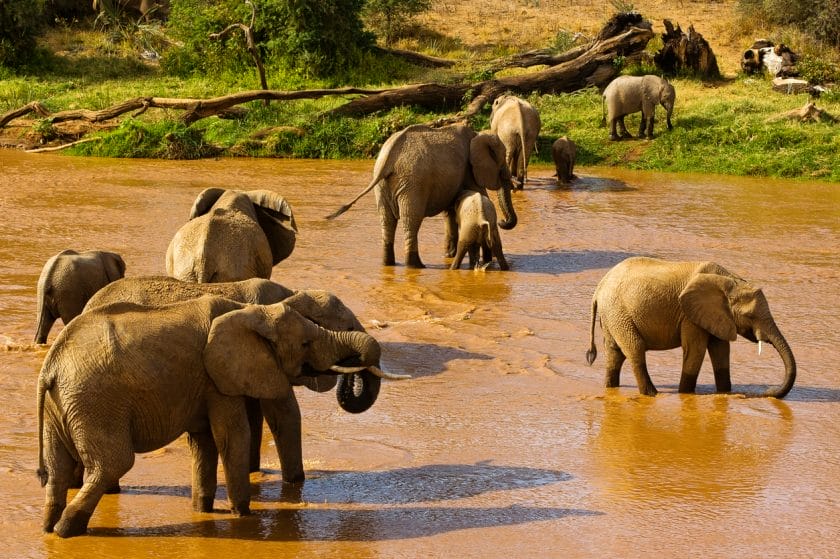
It’s the best place to see a long list of localized dry-country mammals and birds whose range is limited to northern Kenya and bordering parts of Ethiopia and Somalia.
The Namunyak Wildlife Conservancy north of Samburu can be explored on exclusive multi-day camelback and walking safaris .
Arguably a safari in Kenya’s best-kept game-viewing secret, Meru National Park, holds out the possibility of seeing all the Big Five in an unrestrained and little-visited wilderness of grassy plains and babbling jungle-lined streams.
Now accessible along a newly asphalted road running north all the way to the Ethiopian border, the underrated Marsabit National Park protects a volcanic massif that rises in verdant isolation from the surrounding arid plains.
Supporting a cover of lush forest and studded with pretty crater lakes, the park is also home to a good variety of wildlife, including some impressive tuskers.
One of Kenya’s most alluring off-the-beaten-track destinations, Lake Turkana is the world’s largest desert lake, its deep jade waters submerging the Rift Valley floor for 300km (186mi) from north to south.
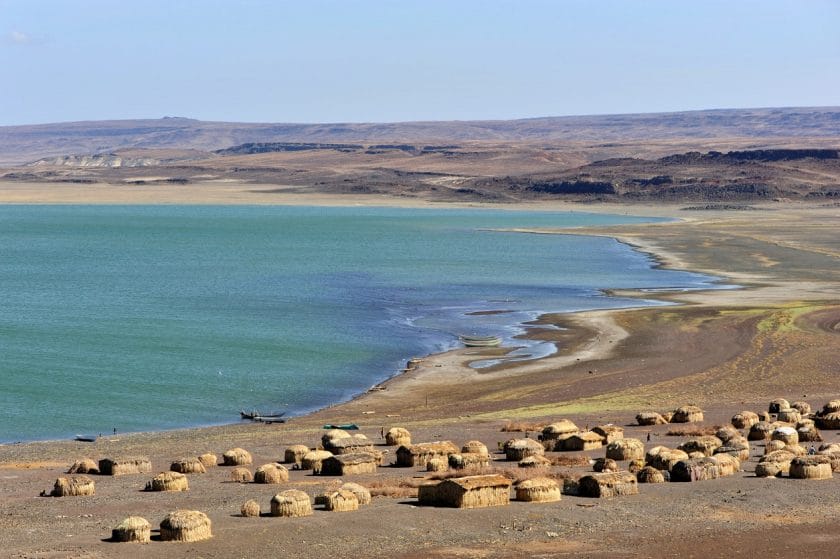
Set in an ancient landscape of extinct volcanoes and naked lava flows, this forbidding lake supports the world’s largest concentration of Nile crocodiles.
It is also where several of the world’s oldest and most important hominid fossils have been unearthed.
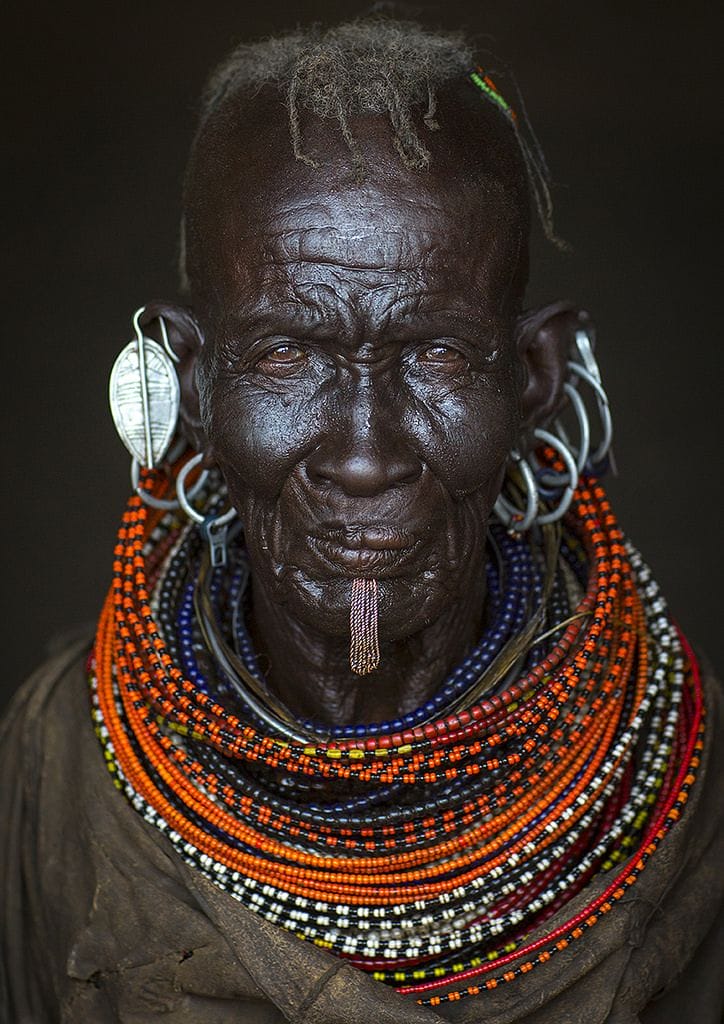
The lake hinterland is of great cultural interest thanks to the presence of traditional and colorfully-attired ethnic groups: the Rendille, Samburu, Turkana, and El Molo.
Practical Advice for a Northwest Kenya Safari Circuit
- The main airport in the region is Nanyuki Airport, which stands close to the eponymous town and is serviced by daily flights from the Masai Mara and Nairobi.
- Nanyuki is a short drive from most sites of interest in the region. Still, those heading on to more remote parts of Laikipia or Namunyak may need to charter an additional flight.
- Public reserves and parks are best visited on an organised safari, which can be arranged through any operator. Self-drive out of Nairobi is also a possibility.
- It’s pretty common to tag a visit to one or more of Laikipia, Meru, and/or Samburu-Buffalo Springs onto a southern safari taking in the likes of Masai Mara and Lake Nakuru.
- Any of the region’s three tree hotels – Treetops, The Ark, or Serena Mountain Lodge – would make for a great overnight break en route.
- Hikes on Mount Kenya are best arranged with specialist operators who know the mountain well.
- Upmarket lodges and tented camps can be found in all national parks and listed conservancies. Private lodges in Laikipia mainly cater to the top end of the safari market.
- Their standard offering is an all-inclusive package that covers transportation, meals, activities, and, in some cases, drinks. Most lodges in public reserves operate more like conventional hotels.
The sheer basaltic cliffs of the Rift Valley northwest of Nairobi hem in a classic East African landscape of open savannah studded with jagged volcanic outcrops and strung with beautiful lakes.
Large mammals are less prolific than in the Masai Mara or Amboseli, but the area is renowned for its prolific birdlife.
The main attention-grabbers are the million-strong flocks of flamingos that frequently amass at saline lakes Nakuru and Bogoria.
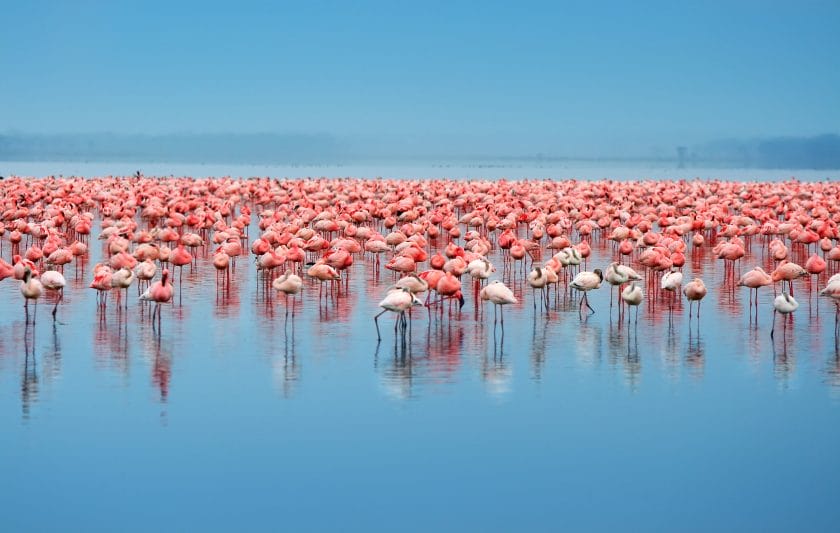
Then again, the freshwater lakes Naivasha and Baringo vie with each other for the accolade of ‘ top general birding hotspot outside the national park system’.
Lake Nakuru National Park is one of the best places in East Africa to look for both Black and White rhinos, while the likes of Crescent Island, Hell’s Gate National Park, and Green Crater Lake Sanctuary offer fantastic opportunities to see large wildlife on foot.
Highlights of Rift Valley Lakes
Fringed by fever-tree forests and low mountains, freshwater Lake Naivasha, only 90km (56mi) northwest of Nairobi, provides a superb ornithological primer for East Africa. Resident birders talk glibly about ticking off 100 species before breakfast.
The shallows host large numbers of hippos, while Crescent Island offers the opportunity to walk amongst giraffes, buffalo, and waterbuck.
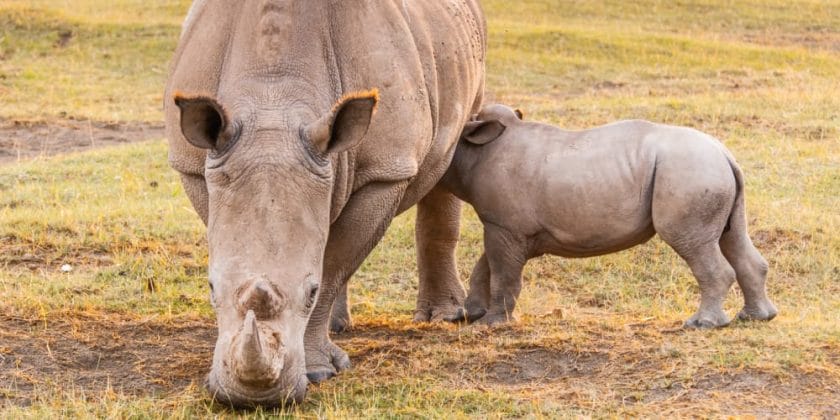
A popular afternoon treat is high tea at Elsamere Field Study Centre, which boasts a small museum dedicated to its former owner Joy Adamson of Born Free fame, and lovely lakeshore gardens frequented by black-and-white Colobus monkeys.
Named after the twin basaltic cliffs that guard its northern entrance, Hell’s Gate National Park protects a dramatic volcanic landscape of ancient lava plugs, sulphuric water vents, and obsidian outcrops.
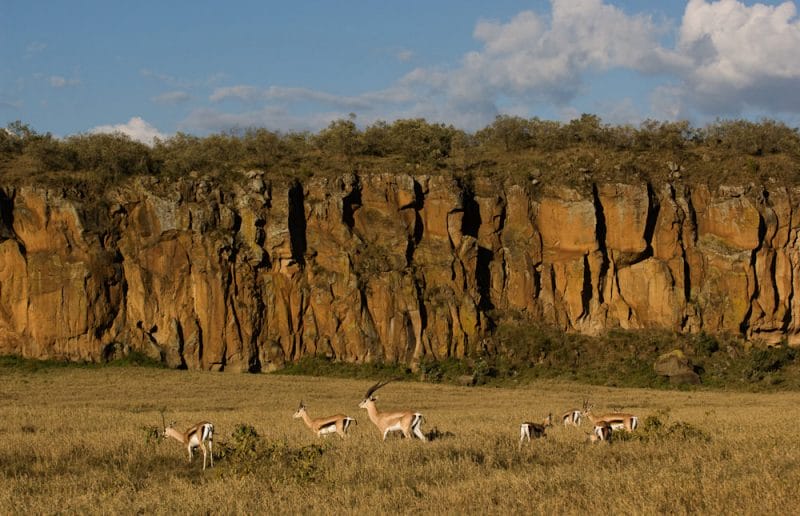
It’s also one of the last places in East Africa where one can walk or bicycle unguided through herds of plains wildlife. Buffalo, giraffe, zebra, wildebeest, gazelle, and eland are resident, and elephant, lion, and cheetah pass through occasionally.
The Green Crater Lake Sanctuary is a private reserve centered on the hyper-alkaline Lake Songasoi, which owes its verdant cast to a dense concentration of Spirulina algae.
Nestled in a forested volcanic crater, the scenic lake often attracts large flocks of flamingos. Guided game walks or horseback excursions come with a good chance of spotting black-and-white Colobus monkeys, buffalo, and various antelope.
The cluster of national parks and reserves set in the semi-arid lowlands running broadly northeast from Mount Kenya includes some of the country’s most rewarding safari destinations .
In part, this is because they protect a very different fauna from their more southerly counterparts: not only an intriguing selection of localised dry-country large mammals, including reticulated giraffe, Grevy’s zebra, and gerenuk but also a long list of birds whose range is more-or-less confined to the north of Kenya and far south of Ethiopia.
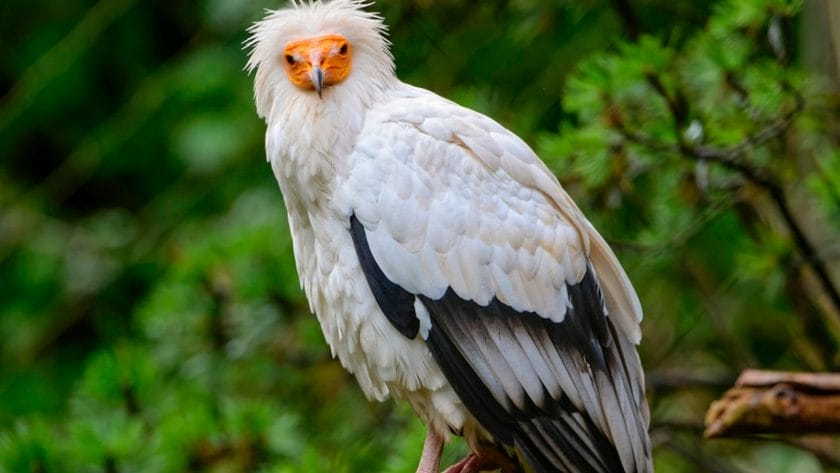
The region’s best-known attraction is the near-contiguous trio of Samburu, Buffalo Springs, and Shaba National Reserves, which protect a combined area of 440km2 (170 square miles) flanking the perennial Ewaso Nyiro River as it flows through an otherwise austere landscape of scrubby rocky plains and bare termite mounds.
Less famous is the 870km2 (336 square mile) Meru National Park, whose cover of tropical grassland and savanna is bisected by a series of narrow perennial streams that rise in the central highlands and empty into the Tana River – Kenya’s longest waterway – as it runs along the park’s southern boundary.
Highlights of Samburu Springs and Mount Meru National Park
Named after the red-robed pastoralist people who inhabit the surrounding plains, Samburu National Reserve, set on the north bank of the Ewaso Nyiro, protects a relatively hilly tract of dry thornbush that rises to 1,250m (4,100ft) at Ol Doinyo Koitogorr.
Characteristic wildlife of the open plains includes the endangered Grevy’s zebra, which is far bulkier and more narrowly striped than the familiar common zebra, and the handsome reticulated giraffe, distinguished by its geometrically-marked coat.
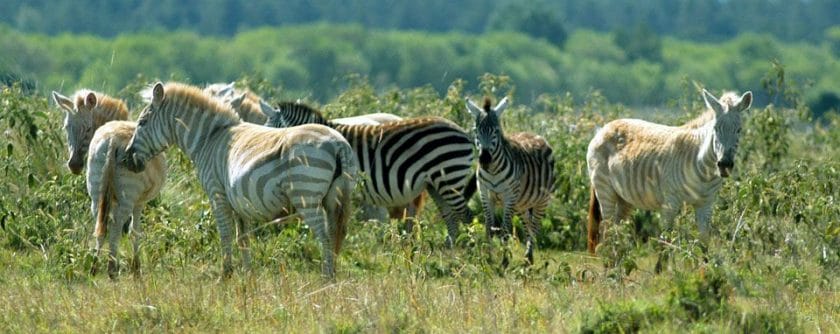
Dry-country antelope include Beisa oryx, Lesser kudu, Guenther’s dik-dik, and the bizarre stretch-necked gerenuk, which habitually stands erect on its hind legs to reach the leaves that most other antelope can’t.
Buffalo Springs National Reserve , set on the south bank of the Ewaso Nyiro, supports a similar range of wildlife to facing Samburu. It’s one of the more reliable places on a Kenya safari for leopard sightings, and the springs for which it’s named – a perennial marsh fed by underground water – attract plenty of wildlife in the dry season.
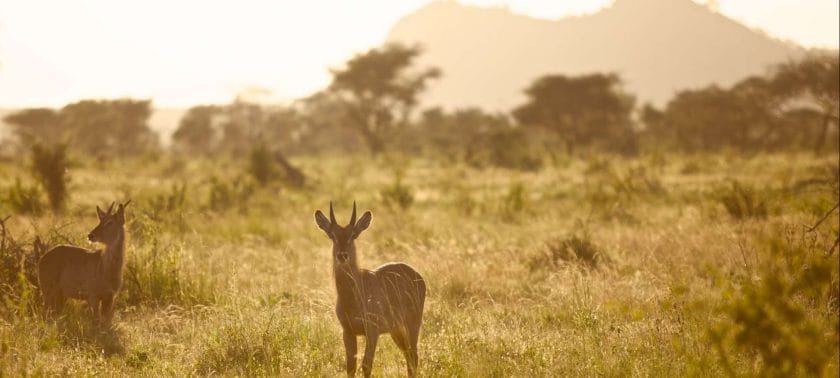
Situated on the south bank of the Ewaso Nyiro, only 5km (3,1mi) east of Buffalo Springs, the little-visited Shaba National Reserve is, if anything, even drier and more sparsely vegetated than its neighbors, but the range of wildlife is similar.
The main game-viewing loop runs through a mosaic of lava-strewn plains, parched grassland, and acacia woodland, offering glimpses of the river and passing by several hot springs.
In the far east, a spring-fed waterhole once used as a campsite by Joy Adamson now attracts a steady trickle of elephants, buffalo, lions, reticulated giraffes, Grevy’s zebra, and antelope.
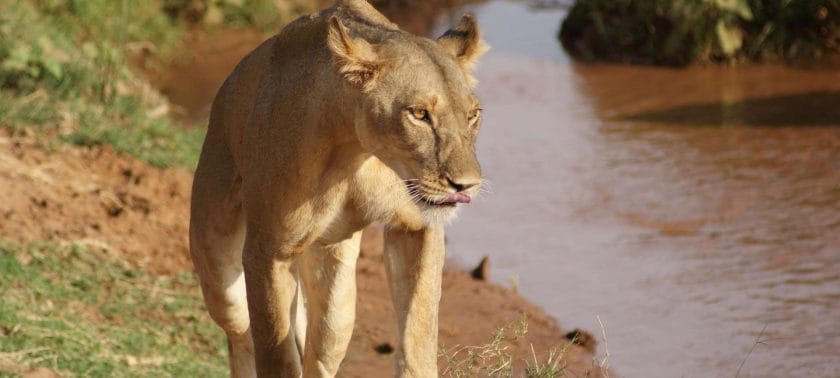
A long list of avian specials whose range is largely restricted to northern Kenya and bordering parts of Somalia and/or Ethiopia makes Samburu-Buffalo Springs-Shaba a key site for bird-watching safaris in Kenya.
Literal heavyweights on this list include the Somali ostrich, Abyssinian ground hornbill, and the spectacular vulturine guinea fowl, and it’s the most reliable site in East Africa for Egyptian vultures.
Other specials include white-headed mousebird, Somali bee-eater, Golden pipit, Rufous chatterer, Bare-eyed thrush, Bristle-crowned starling, and Black-capped social weavers.
Running north from Samburu-Buffalo Springs, the 3,940km2 (1,521 square mile) Namunyak Wildlife Conservancy protects an area of arid northern plains surrounding the Mathews Range, whose forested slopes host plenty of wildlife and several rare plant species. The main attractions here are multi-day camelback and walking safaris .
More lush and moist in feel than Samburu-Buffalo Springs-Shaba, Meru National Park possesses a genuine wilderness atmosphere that makes it a favorite with repeat Kenya safari-goers.

All the Big Five are here. You can be pretty confident of seeing elephants, buffalo, and rhinos, but big cats are generally quite challenging to spot on the tall grassland.
The reticulated giraffe is very common, but other dry-country ungulates, such as Lesser kudu, Grevy’s zebra, Beisa oryx, and Gerenuk are relatively scarce.
The largest of 13 waterways running through Meru National Park, the palm-lined Rojewero River flows through an excellent hippo pool. It is also a good place to look for African finfoot, Pel’s fishing owl, Giant kingfisher, and the endemic Golden palm weaver.
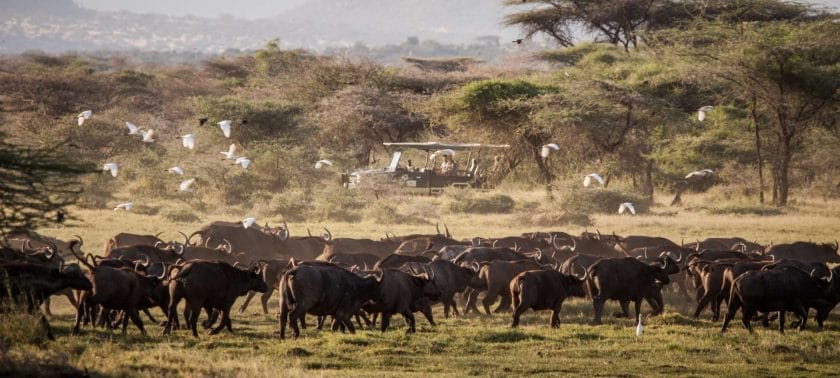
The boundary between Meru National Park and the remote Mwingi National Reserve is a lushly-forested stretch of the Tana River. Here, the rapids known as Adamson’s Falls (after George Adamson) are the most accessible point anywhere along the course of what is Kenya’s largest waterway.
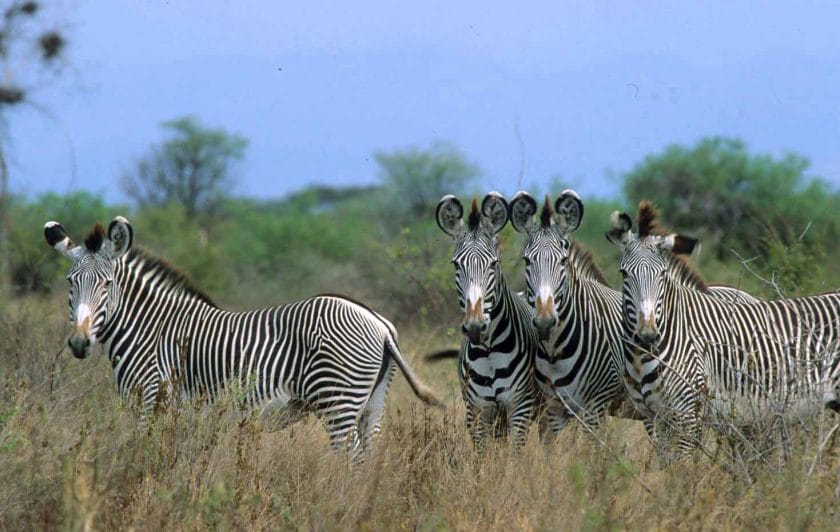
Meru National Park’s Ura River is the site of Elsa’s Grave , the burial place of the lioness subject of the film Born Free. Hand-reared as a pet by Joy and George Adamson, Elsa was released into Meru National Park in 1958 and successfully reared three cubs there before dying of a tick-borne fever at age five.
Practical Advice for Samburu Springs and Mount Meru National Park
- All the reserves and parks described above are best visited on an organised safari in Kenya, though self-drive is also a possibility. They can be reached in a long half-day drive from Nairobi via the frontier town of Isiolo or appended onto a safari, also taking in the likes of Masai Mara, Lake Nakuru, and the tree hotels of Aberdares and Mount Kenya.
- The closest airport for scheduled flights is Nanyuki, but charter flights directly to the reserves are available.
- Samburu-Buffalo Springs is serviced by a good range of lodges, tented camps, and campsites. There are also lodges and camps in Shaba and Meru, but fewer, which only adds to these reserves’ aura of exclusivity.
Southern Kenya offers some of the country’s finest wildlife viewing. The region is a showcase for three of East Africa’s most thrilling safari highlights: the migratory wildebeest that flood into the Masai Mara , the equally prolific flamingos, and the elephant herds that sweep across the Amboseli Plains below the snow-capped peak of Kilimanjaro .
While this region forms the core of most safari itineraries through Kenya , it also offers some great destinations for independent travel and off-the-beaten-track safaris in Kenya.
Lake Naivasha, Lake Baringo, Hell’s Gate, Kakamega Forest, and Saiwa are all perfectly accessible to self-drivers or those using public transport.
Highlights of a Southern Safari Circuit in Kenya
Renowned for its dense population of well-habituated elephants, Amboseli National Park, above the Tanzanian border at the northern base of Mount Kilimanjaro, is the best place to photograph plains wildlife below its majestic and photogenic snow-capped peak.
Kenya’s most prominent safari destination is the Masai Mara National Reserve , the most northerly component in an immense cross-border ecosystem that incorporates Tanzania’s Serengeti Plains and forms the arena for the spectacular annual migration of two million migratory wildebeest.
The Masai Mara peaks in popularity between August and November, when the wildebeest cross over from Tanzania, but offers fabulous Big Five safaris and predator-viewing all year round.
A superb base for keen walkers, birdwatchers, and independent budget travelers, scenic Lake Naivasha offers enough activities to keep you busy for a week.
You can walk amongst big game on Crescent Island or in the nearby – and wonderfully scenic – Hell’s Gate National Park and Green Crater Lake Sanctuary.
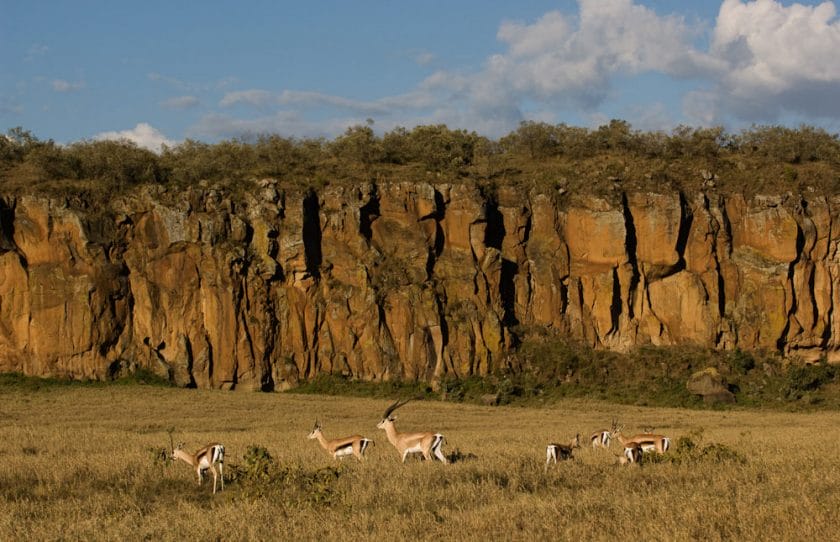
More challenging is the hike up the barely vegetated slopes of Mount Longonot, a 2,776m (9,108ft) high volcano that last erupted in the 1860s and whose summit offers fine views in all directions.
Although it’s no longer a reliable site for the flamingos that used to amass in its shallows, peri-urban Lake Nakuru is set within a small national park that offers a good chance of spotting both Black and White rhinos in the course of one game drive.
Often home to hundreds of thousands of flamingos, Lake Bogoria National Reserve is also noteworthy for the dramatic hot geysers that erupt close to its western shore.
A top-notch birding destination , freshwater Lake Baringo is also home to plenty of hippos and crocs and has a refreshingly off-the-beaten-track feel.
The southwest of Kenya is occupied by Lake Victoria , which it shares with Uganda and Tanzania. This is the largest lake in Africa at 66,800 km2 (2579 square miles), but its Kenyan portion is poorly developed for tourism and suited only to fans of genuinely off-the-beaten-track travel.
A contender for Kenya’s most underrated attraction, Kakamega Forest National Reserve protects the country’s largest stand of the equatorial rainforest. It’s easily explored on foot, and its diverse fauna possesses strong affiliations to Central Africa.
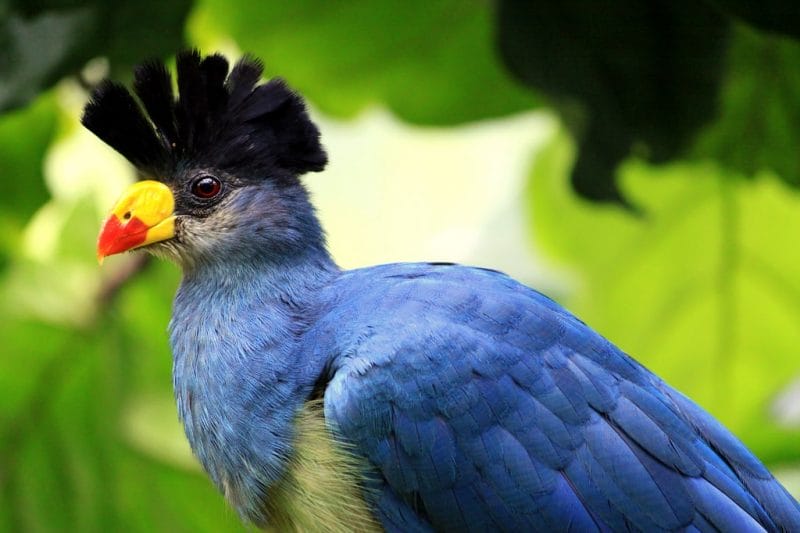
A tally of seven primate species includes black-and-white Colobus, Blue and red-tailed monkeys, and the nocturnal Potto.
The checklist of 360 bird species has more than 30 forest-dwellers found nowhere else in Kenya, among them the spectacular Great blue turaco.

Another underrated pedestrian-friendly gem is the tiny Saiwa Swamp National Park. Traversed by a walking trail that leads to a series of wooden viewing platforms, it’s possibly the best place in Africa to observe the semi-aquatic Sitatunga antelope and white-bearded DeBrazza’s monkey. A long list of forest and swamp birds includes the gorgeous Ross’s turaco.
Practical Advice for a Southern Safari Circuit in Kenya
- The most straightforward way to explore the Masai Mara , Amboseli, and to a lesser extent, Lake Nakuru is on a fly-in safari combining one or all of these destinations with other national parks and reserves elsewhere in Kenya.
- It’s also possible to drive into and between reserves, a more affordable option that will entail a lot of time spent on dusty roads getting from A to B. Most other destinations within this region are less remote and quite easily reached by car or by using public transport.
- Accommodations to suit most tastes and budgets can be found throughout the region. These range from exclusive tented camps and larger hotel-like lodges in and around the national parks and reserves to agreeable budget lodgings in more accessible destinations.
Kenya’s gorgeous Indian Ocean coastline is the ideal place to chill out on the beach after a few days on a dusty safari. It is lined with a seemingly endless succession of white sandy beaches that look like they’ve leaped straight out of the pages of a travel brochure.
Indeed, for a country often billed as the ultimate home of the safari, Kenya can also claim to be one of the world’s great beach destinations. Better still, there is much more to the Kenyan coast than a stock tropical beach holiday .
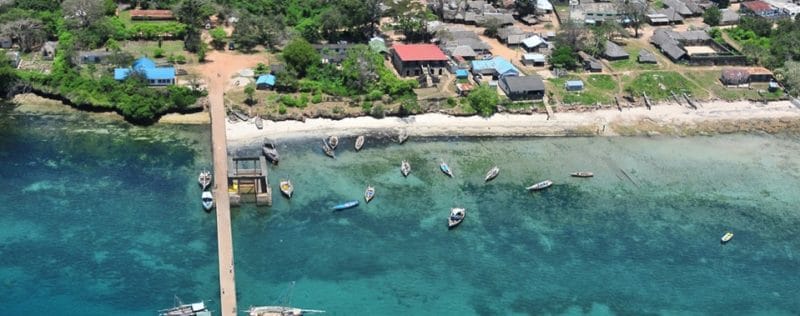
Most coastal towns and villages possess a strong sense of place, determined both by the cultural cohesion of the Swahili people who inhabit them and the antiquity of medieval trade ports such as Mombasa, Malindi, and the jungle-bound ruins of Gedi.
The offshore reefs, alive with colorful fish, offer world-class snorkeling and diving. At the same time, coastal forests protected in the likes of Shimba Hills National Reserve and endemic-rich Arabuko-Sokoke National Park are rich in terrestrial birds and mammals.
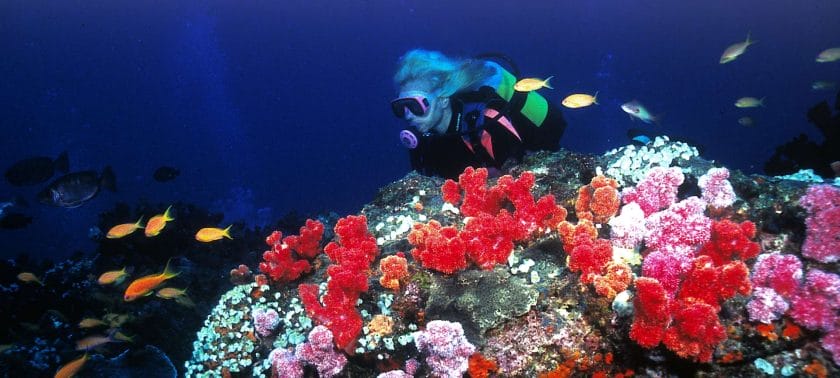
Deeper inland, the vast plains of Tsavo East and West National Parks – which together form the country’s largest contiguous protected area – offer fine Big Five game-viewing in a classic African safari setting .
Highlights of The Coastal Belt of Kenya
The historic island port of Mombasa is Kenya’s second-largest city and the central air, rail, and road gateway to the coast. Its atmospheric old town is capped by the 16m (52ft) high Fort Jesus, which has stood sentinel over the old harbor since the Portuguese constructed it in the 1590s.
Arguably the most popular and best-equipped tourist destination on the Kenyan coast, Diani doubles as an idyllic palm-fringed beach resort and base for some fine marine and terrestrial wildlife viewing.

The rolling slopes of Shimba Hills National Reserve, inland of Diani, support giraffes, zebra, warthog, elephant, buffalo, and sable antelope.
Situated to the south of Diani, only 10km (6,2mi) from the Tanzanian border, Shimoni is a low-key fishing village whose name – “Place of the Hole” – alludes to a gloomy beachfront cave that once served as a holding pen for slaves before they were shipped to Zanzibar. Chains and hooks dating to the cave’s ignominious past are still embedded in the walls.
Kenya’s most overt resort town, Malindi, has a delightful beach and lively Italian-influenced culinary scene, but it’s also scattered with landmarks that recall its long history as a medieval Swahili port and 16th-century Portuguese stronghold.
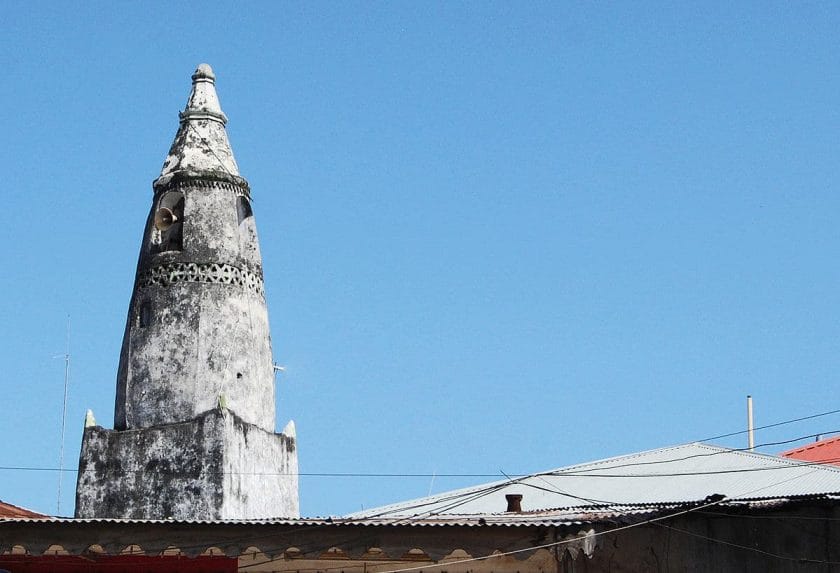
Arguably the most beautiful beach resort in Kenya, low-key Watamu is known for its superb offshore snorkeling and proximity to the jungle-bound Gedi National Monument and endemic-rich Arabuko-Sokoke National Park.
The remote and little-visited 28km2 (11 square mile) Tana River Primate Reserve protects an isolated stretch of riverine forest that supports the only known populations of two critically endangered species of endemic monkey: Tana River red colobus and Tana mangabey.
The sleepy and remote Lamu Archipelago is liberally endowed with idyllic beaches and snorkel sites, but its main attraction is Lamu Town, a traditional Swahili enclave whose unique architectural and cultural integrity has led to it being inscribed as a UNESCO World Heritage Site. Visits are not currently recommended due to security concerns relating to its proximity to Somalia.
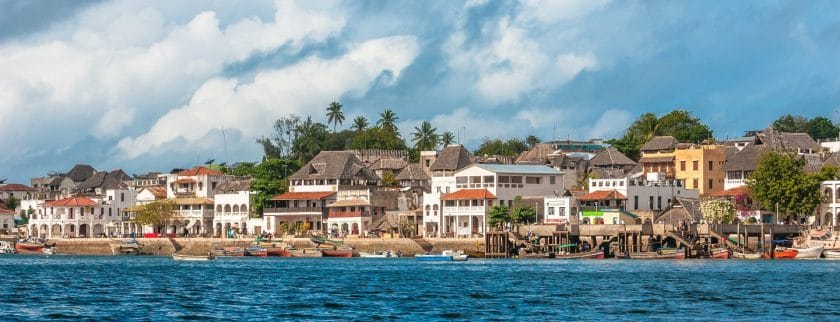
The vast Tsavo West National Park, bounded by the main road between Nairobi and Mombasa, is an untrammeled Big Five destination notable for its wilderness atmosphere, dramatic volcanic landscapes, and dense population of Black rhino protected within the well-guarded Ngulia Rhino Sanctuary .
Larger even than the eastern namesake it borders, Tsavo East National Park protects a wonderfully remote habitat of red-earth plains bisected by the perennial Galana River and inhabited by plentiful elephants, along with an alluring variety of localized dry-country birds and mammals.
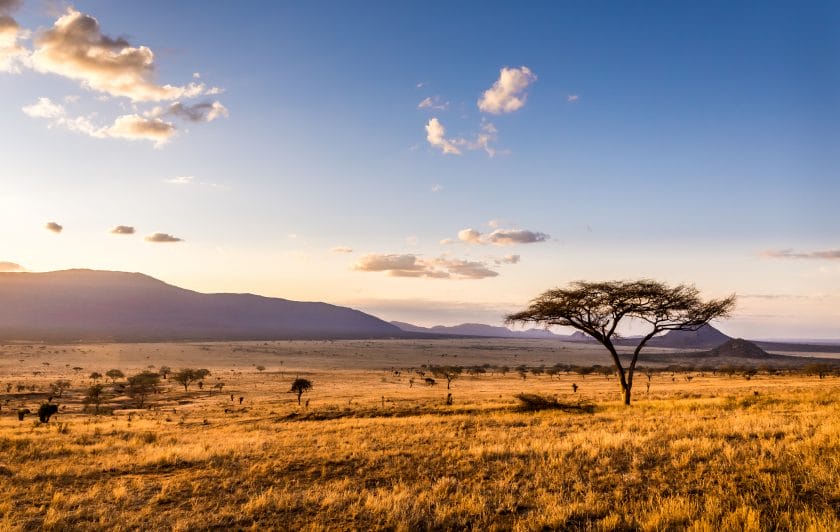
Ideal for beach holidaymakers seeking a one-night safari break, the Taita Hills Wildlife Sanctuary, which borders Tsavo West, offers stellar elephant viewing, as well as a good range of other plains wildlife, including lion and leopard.
Practical Advice for The Coastal Belt of Kenya
- The main gateway to the region is Mombasa, whose Moi International Airport is serviced by a steady stream of domestic and international flights. Mombasa is also connected to Nairobi by a direct 480km (298mi) road flanked by Tsavo West and East National Parks and a historic railway line that started operating in the 1890s.
- There are also regular flights to Malindi and Lamu, or you can travel by road between Mombasa and Diani, Malindi, or Watamu. Visits to Tsavo West and East National Parks, Shimba Hills National Reserve and Taita Hills Wildlife Sanctuary are best arranged with operators, though self-drive is a possibility for the intrepid.
- Accommodation is plentiful throughout the region, though it tends to be pricey in the national parks and more exclusive beach resorts. Good budget accommodation is available in Mombasa and Malindi.
Extending over 21,812km2 (8421 square miles), both Tsavo East and West form the largest conservation area in Kenya, protecting significant populations of all the Big Five.
Despite this, the parks are less popular than the Masai Mara and Amboseli due to the relatively low wildlife densities and difficulty spotting animals in the dense acacia woodland.
Separated somewhat arbitrarily by the main road between Nairobi and Mombasa, the two parks are nevertheless quite different in character.
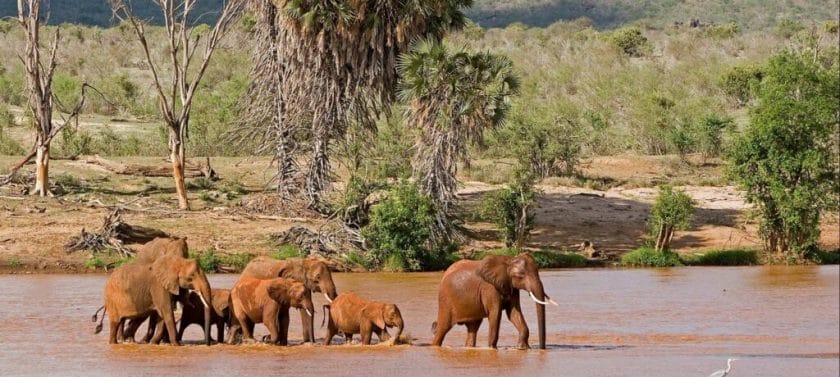
Tsavo West protects a volcanic landscape of jagged black outcrops, solidified lava flows, and tangled acacia woodland overshadowed by Kilimanjaro on the southwest horizon.
The red-earth plains of the larger and less developed Tsavo East have stronger affiliations with the semi-arid badlands of northern Kenya, despite being alleviated by the presence of the perennial Galana River.
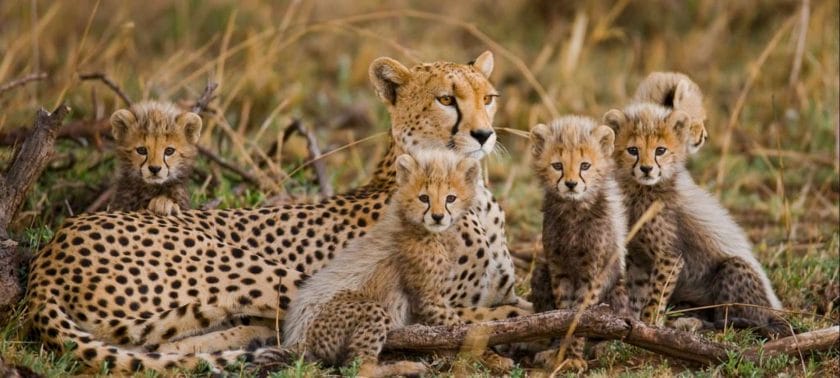
Both parks have a limitless wilderness atmosphere that will appeal to repeat safari-goers, with the western component being marginally better for conventional Big Five viewing. At the same time, its eastern counterpart ranks higher for localized antelope and bird species associated with northern Kenya.
Highlights of Tsavo East and West in Kenya
The Shetani Lava Flow is the most spectacular of the many stark volcanic landmarks that scar the northern circuit of Tsavo West.
A 200-year-old stream of jagged tar-coloured solidified magma, its Swahili name means ‘Devil’. It’s avoided by locals, whose oral traditions recall that many people and animals were buried alive beneath the fast-flowing fiery lava when it erupted from the nearby Chyulu Hills.
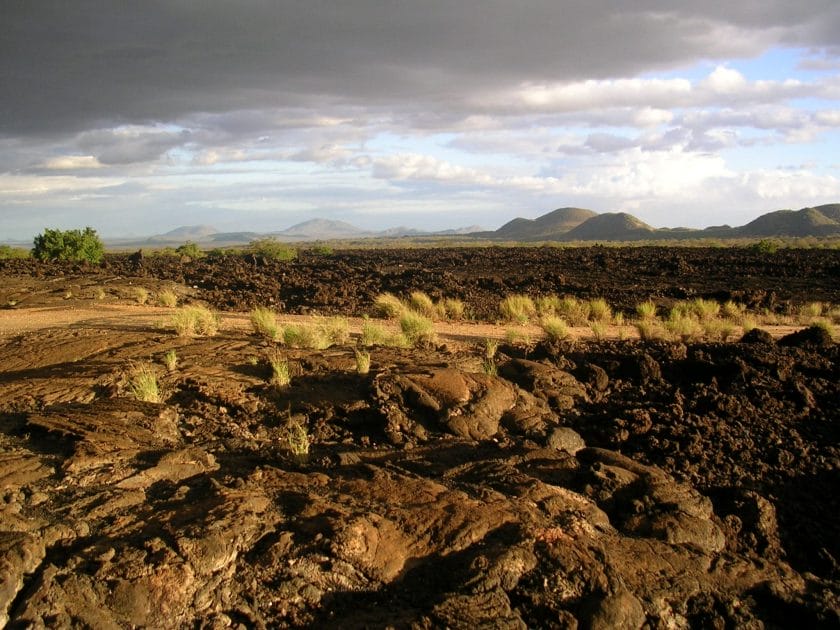
At once immensely beautiful and a fascinating geological phenomenon, the oasis-like Mzima Springs is fed by a sparkling clear subterranean stream that rises on Kilimanjaro before being filtered through the porous volcanic rocks of the Chyulu Hills.
The primary source of water for Mombasa, Mzima supports a lush groundwater forest of palms and fever trees, plenty of woodland and aquatic birds, and a few pods of hippos that can sometimes be observed underwater from a submerged observation chamber.
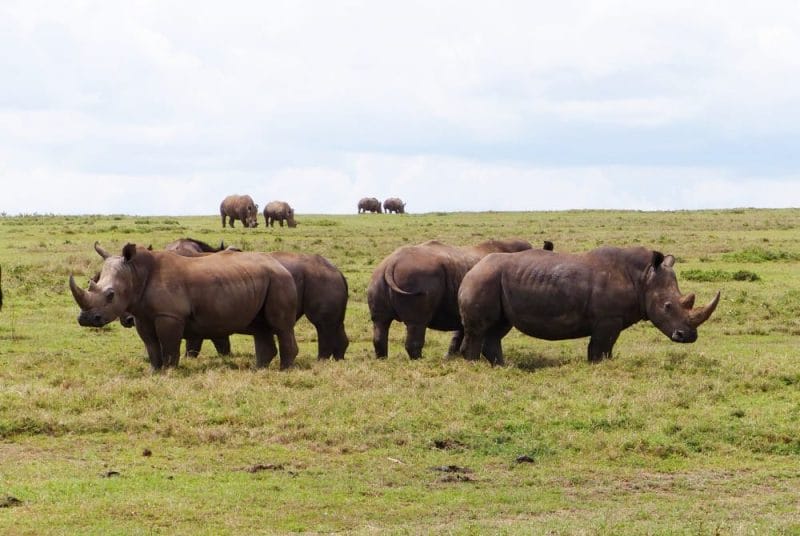
Created in 1986 to protect the Tsavo West’s last few Black rhinos, Ngulia Rhino Sanctuary is enclosed by a tall electric fence and guarded by a dedicated anti-poaching unit.
The sanctuary has five waterholes and now supports a population of around 70 Black rhinos (roughly one per square kilometer), which means the chances of spotting this elusive creature are excellent.
A shallow sump-like waterbody set in the far south of Tsavo West below Tanzania’s North Pare Mountains, Lake Jipe attracts plenty of elephants and supports large numbers of hippos and crocodiles. Boat trips offer an opportunity to see localized aquatic birds such as Lesser jacana, Pygmy goose, and Black coucal.
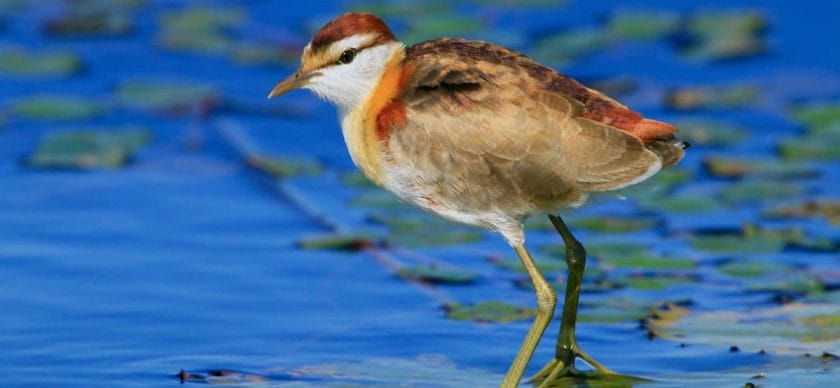
Lake Chala is a translucent crater lake situated on the southern foot slopes of Kilimanjaro bordering Tanzania. Almost 3km (1.9mi) in diameter, yet practically invisible until you topple over the caldera’s rim, wherein it nestles, the lake is gorgeous when Kilimanjaro emerges from the clouds on the northern horizon.
Rising to 2,208m (7,244ft) on the border of Tsavo West, the isolated Taita Hills is the only Kenyan component of the Eastern Arc Mountains, a series of 13 massifs whose ancient forests are known for their high level of endemism.
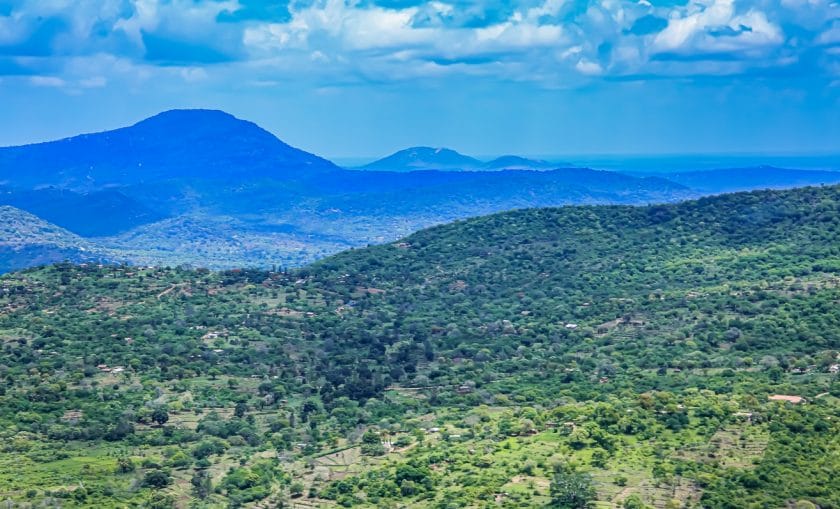
It is renowned among birdwatchers as the only place to see the Critically Endangered Taita thrush, along with Taita apalis, Taita white-eye, and Taita falcon.
Sharing an unfenced border with Tsavo West, Taita Hills Wildlife Sanctuary lies on the scrubby plains below the mountains after which it is misleadingly named.
It’s most often visited on a standalone overnight safari package from the coast, inclusive of day and night drives – the latter offering a good chance of spotting secretive nocturnal species such as leopard, White-tailed mongoose, Honey badger, and Genet. The quirkily stilted Salt Lick Lodge is wonderfully positioned for in-house elephant viewing.
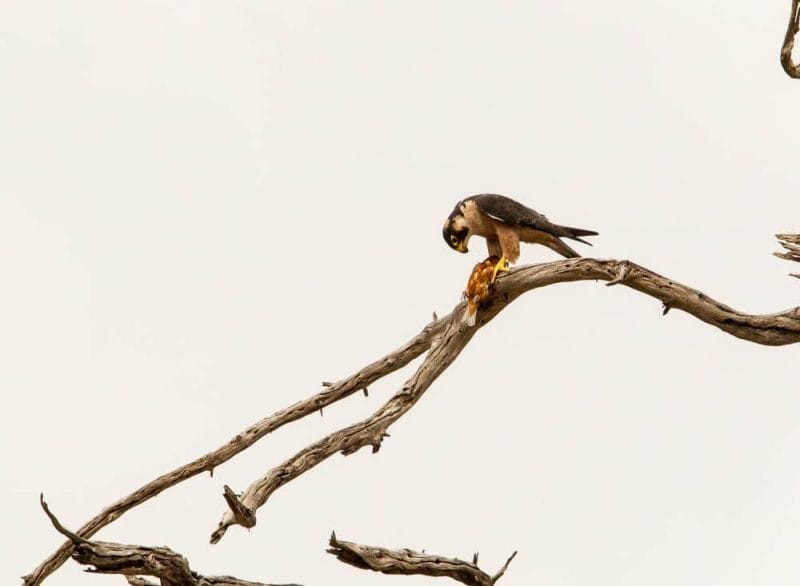
A significant focal point for game-viewing in Tsavo East is Aruba Dam, which was constructed on the Voi River in 1951 and is the only permanent water source in the vicinity.
Lions are often seen resting below the trees around the dam, while the road running west towards Voi Gate is an excellent place to look for cheetahs, impala, Coke’s hartebeest, zebra, and gazelle.
The arid plains running north towards the Galana River pass through scrubby plains that support several localized dry-country creatures, notably Gerenuk, Fringe-eared oryx, Somali ostrich, Golden pipit, Vulturine guineafowl, and Golden-breasted starling.
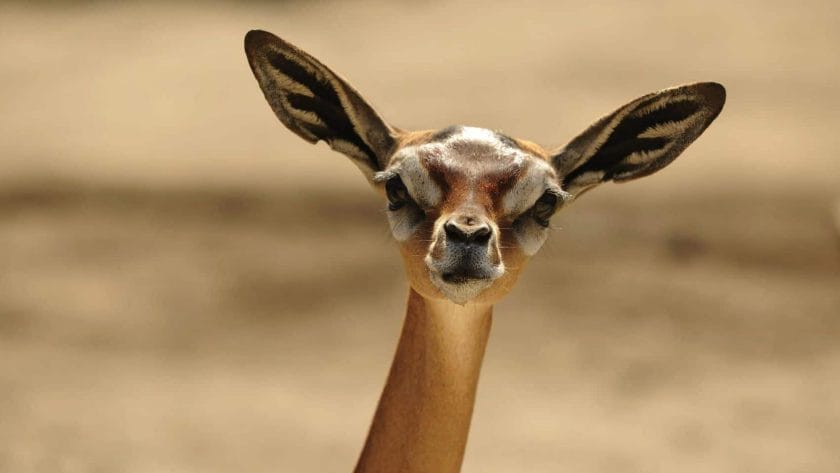
The most significant landmark on the Galana River as it runs through Tsavo East is Lugard Falls, a series of rapids that flows across a bed of black dolomite striated with white quartzite rocks. A good hippo pool stands a short way downriver of the falls.
A significant landmark in Tsavo East, the 1.5km (0,93mi) long Mudanda Rock – East Africa’s answer to Ayer’s Rock – overlooks a waterhole where elephant and buffalo gather to drink and wallow, and leopards sometimes emerge towards dusk.
Practical Advice for Tsavo East and West in Kenya
- Road access to both Tsavo East and West is straightforward since the two parks are bisected by the Nairobi-Mombasa highway, which also forms the border between them.
- Tsavo West is often incorporated into a southern road safari out of Nairobi or running between Nairobi and the coast, together with Amboseli. Tsavo East is perhaps more often visited as a standalone road excursion from coastal resorts such as Malindi or Mombasa, as is the Taita Hills Wildlife Sanctuary.
- In all instances, it’s best to make arrangements with an experienced safari company, though self-drive out of Nairobi or Mombasa is a possibility too, and charter flights service both national parks.
- Tsavo East and West and Taita Hills Wildlife Sanctuary are all served by a selection of upmarket lodges and tented camps . Budget accommodation can be found in the towns of Voi or Mtito Andei, which stand alongside the Nairobi-Mombasa highway close to the main gates for Tsavo East and West, respectively.
Like Mombasa, Malindi is an ancient Swahili trading port that fell under Portuguese influence in the 16th century. It is far smaller and more low-rise than Mombasa and has a less conspicuous sense of antiquity, though the old town is scattered with a few important historical landmarks.
These days, Malindi, more than any other comparably large town in Kenya, functions mainly as a beach resort. It offers a good choice of midrange lodges aimed at the European package market, as well as a lively beachfront restaurant scene and a host of other urban distractions, from nightclubs to supermarkets.
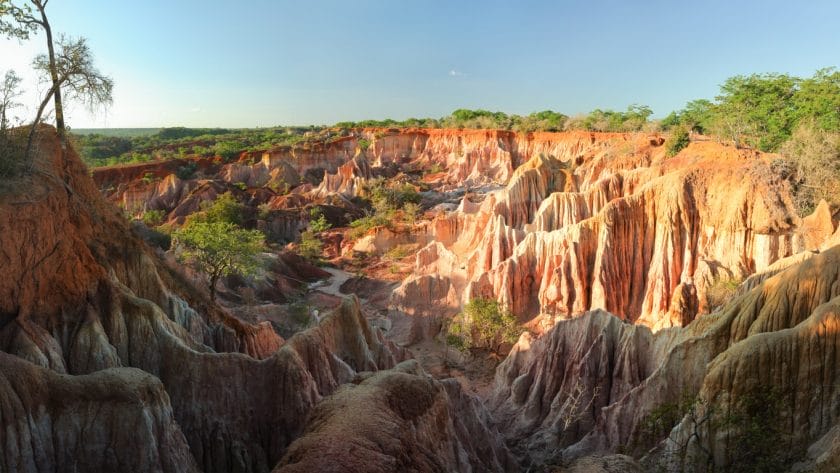
Separated from Malindi by 15km (9,3mi) of Indian Ocean frontage, Watamu feels less like a resort town than an overgrown fishing village and is all the better for it.
Boasting arguably the most gorgeous beach in Kenya, Watamu also offers superb offshore snorkeling in the calm, transparent waters of Turtle Bay. It stands practically within walking distance of the jungle-bound ruined medieval city of Gedi and forest wildlife of Arabuko-Sokoke National Park.
Highlights of Watamu and Malinda
The most significant monuments in Malindi Old Town are a pair of 15th-century pillar tombs standing in front of the seafront Friday Mosque and a small thatched chapel built by the Portuguese in the early 16th century.
The limestone Da Gama Cross, erected by the pioneering Portuguese navigator Vasco Da Gama after he landed at Malindi in 1499, stands on a windswept coral peninsula a short walk south of the town center.
The National Museum of Malindi is housed in the three-story waterfront ‘House of Columns’ built by an Indian trader circa 1890. Displays include a stuffed 77kg (170lb) coelacanth and a collection of engraved Gohu burial totems.
Malindi and Watamu have good sandy swimming beaches, but the latter’s Turtle Bay stands out scenically, thanks to a distinctive forest of ragged coral formations that rise out of the preposterously clear water like giant mushrooms.
Africa’s oldest marine reserve, Malindi Marine National Reserve, protects 213km2 (82 square miles) of offshore reefs and open water, running south from Malindi to Mida Creek. It offers some of East Africa’s finest marine wildlife viewing, with the tranquil coral gardens of Watamu’s Turtle Bay ideal for snorkeling, while diving is usually undertaken on the more extensive barrier reefs further out to sea.
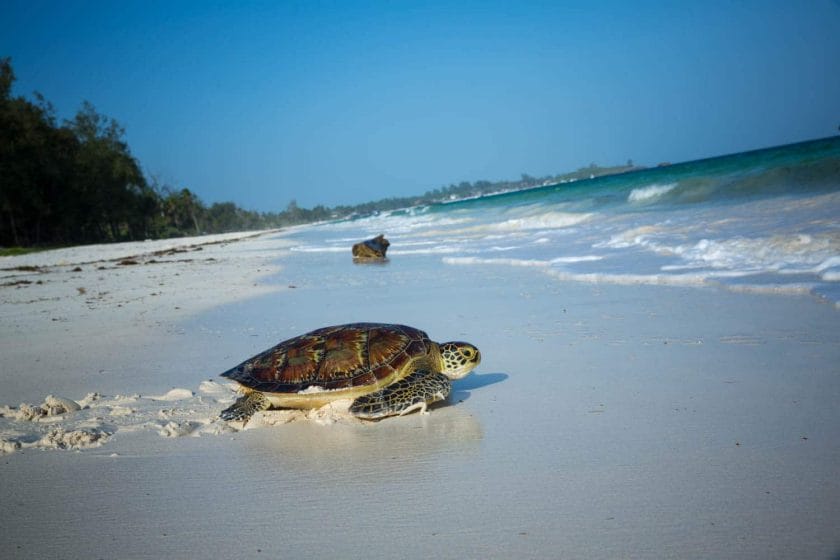
Separated from the open sea by the Watamu Peninsula, Mida Creek is an essential marine bird-watching site that can be explored on a stilted boardwalk and small hide constructed as part of a community-based ecotourism project.
A vital wintering site for Palaearctic migrants such as Crab plover and Grey plover, it is also a good place for Mangrove kingfisher and Greater flamingo. The surrounding coastal scrub hosts the less striking, but very rare, Sokoke pipit.
The 420km2 (162 square mile) Arabuko-Sokoke National Park protects East Africa’s largest remaining tract of coastal forest and a host of globally threatened and near-endemic mammals and birds, including Ader’s duiker, Sokoke dog mongoose, Yellow-rumped elephant-shrew, Chestnut-fronted helmetshrike, Clarke’s weaver and Sokoke scops owl.
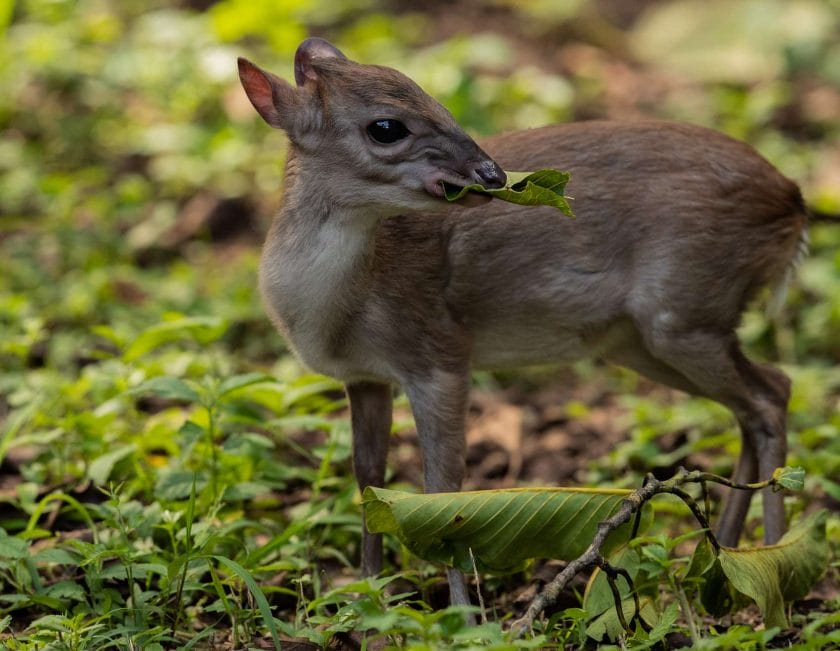
Large fresh paths often seen on the park’s extensive network of roads and walking trails serve to remind that it’s also home to a furtive and seldom-seen population of 120 elephants.
The most impressive and atmospheric of the many medieval ruins along the Kenyan coast, Gedi National Monument protects the remains of a 20-hectare walled Swahili city-state that flourished as a cabinet of maritime trade between the 11th and 13th centuries.

The museum displays artifacts found on site but manufactured from as far afield as India, Egypt, Arabia, and Spain, and the jungle-bound ruins include a 900m2 (9,688 square foot) Sultan’s Palace and eight mosques. A birdwatching platform high in a baobab tree between the palace and the largest mosque offers a superb monkey’s-eye overview of the site.
Also known as Hell’s Kitchen, the Marafa Depression, 35km (22mi) northwest of Malindi, is studded with spectacular sandstone pillars that stand up to 30m (98ft) tall and come across like a miniature version of the Grand Canyon. It is most impressive in the early morning when the layered columns glow pink.
Practical Advice for Watamu and Malinda in Kenya
- Watamu and Malindi lie about a 90-minute drive north of Mombasa. There are also scheduled flights from Mombasa, Lamu, and Nairobi to Malindi, whose airport lies 3km (1,9mi) from the town centre and less than 20km (12mi) from Watamu.
- Both towns have plenty of accommodation. Malindi is stronger on package hotels and budget accommodations aimed at backpackers, while Watamu’s hotels tend to have a more individualistic feel.
- Any hotel or local operator can set up diving and snorkeling excursions or day trips to Gedi, Arabuko-Sokoke, or the Marafa Depression.
Kenya’s many national parks and reserves, each have their own unique attractions and wildlife experiences.
Here’s a detailed guide to the key regions across this East African country and what you should consider them for your next Kenya safari:
1. Maasai Mara National Reserve

Overview: The Maasai Mara is arguably Kenya’s most famous safari destination, renowned for the spectacular Great Migration, which showcases its expansive wildlife diversity.
Key Highlights:
- Great Migration: Witness the awe-inspiring spectacle of over 1.5 million wildebeest, zebras, and gazelles migrating from the Serengeti to the Maasai Mara, usually between July and October. The dramatic river crossings of the Mara River are a highlight.
- Big Cats: The Maasai Mara is one of the best places in Africa to see big cats, including lions, cheetahs, and leopards. The reserve’s open plains make it easier to spot these predators in action.
Unique Facts:
- The Maasai Mara is named in honor of the Maasai people, who inhabit the region, and the Mara River, which runs through it.
- The reserve covers an area of approximately 1,510 square kilometers (580 square miles) and is contiguous with the Serengeti National Park in Tanzania
2. Amboseli National Park

Overview: Amboseli National Park is famous for its stunning views of Mount Kilimanjaro, Africa’s highest peak. The park’s name is taken from the Maasai word meaning “salty dusty”, referring to its arid conditions.
- Elephants: Amboseli is known for its large free-roaming elephant herds, which can be seen against the backdrop of Mount Kilimanjaro.
- Bird Watching: The park is a birdwatcher’s paradise, with over 400 bird species recorded.
- Amboseli covers an area of 392 square kilometers (151 square miles) and features a mix of wetlands, savannah, and woodlands.
- The park is a protected area for elephants, Cape buffalo, impala, lion, cheetah, spotted hyena, Masai giraffe, Grant’s zebra, and blue wildebeest.
3. Samburu National Reserve

Overview: Located in the northern part of Kenya, Samburu National Reserve is known for its unique wildlife species and arid landscapes.
- Unique Species: Samburu is home to species that are rare in other parts of Kenya, including Grevy’s zebra, Somali ostrich, reticulated giraffe, gerenuk, and Beisa oryx.
- Ewaso Ng’iro River: The reserve is centered around the Ewaso Ng’iro River, which attracts a variety of wildlife, especially during the dry season.
- Samburu’s arid conditions and unique wildlife make it a fascinating destination for safari enthusiasts.
- The reserve covers an area of 165 square kilometers (64 square miles) and is part of a larger ecosystem that includes Buffalo Springs and Shaba reserves.
4. Tsavo National Parks (East and West)
Overview: Tsavo East and Tsavo West together form one of the largest national park areas in the world, offering vast, unspoiled wilderness and diverse wildlife.
- Tsavo East: Well-known for its red elephants (coated in the park’s red dust) and the Yatta Plateau, the longest lava flow in the world, formed through successive eruptions of the nearby Ol Doinyo Sabuk and Kilimambogo volcanoes thousands of years ago.
- Tsavo West: Famous for its dramatic landscapes, including the Mzima Springs, Shetani Lava Flows, and the Chyulu Hills.
- Tsavo National Park covers an area of approximately 22,000 square kilometers (8,494 square miles), making it one of the largest protected areas in Kenya.
- The parks are named after the Tsavo River, which flows from west to east through the parks.
5. Lake Nakuru National Park

Overview: Lake Nakuru National Park is famous for its flamingo populations and is a sanctuary for both black and white rhinos.
- Flamingos: The park is renowned for its large flocks of flamingos that feed on the algae in the lake.
- Rhino Sanctuary: Lake Nakuru is one of the best places in Kenya to see both black and white rhinos.
- The park covers an area of 188 square kilometers (73 square miles) and is centered around Lake Nakuru, one of the Rift Valley soda lakes.
- Besides flamingos, the park is home to over 450 bird species and a variety of other wildlife, including lions, leopards, and Rothschild giraffes.
Start Planning Your Safari
Kenya’s diverse regions each offer unique wildlife experiences and opportunities. Whether you want to witness the dramatic river crossings in the Maasai Mara, marvel at the large elephant herds in Amboseli, or explore the unique species in Samburu, Kenya has something for every safari enthusiast.
Travel with Confidence
With over 20 years of experience, our team will help you tailor your itinerary to your perfect adventure., 24/7 support, personalised, popular kenya safaris.
Kenya offers a variety of safari experiences to suit every traveller. The classic Maasai Mara safari is a highlight, featuring the Great Migration and close encounters with the Big Five. Amboseli safaris provide stunning views of Mount Kilimanjaro and opportunities to see large elephant herds. Tsavo safaris are perfect for those seeking adventure in vast, diverse landscapes, while Samburu safaris highlight unique species and dramatic scenery. Whether you prefer a luxury lodge or a mobile tented camp, Kenya’s popular safaris cater to all preferences, ensuring an immersive wildlife experience.
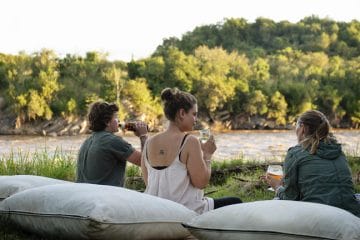
Unplugged Safari in the Mara
East Africa Kenya Maasai Mara
From $ 7880 /USD
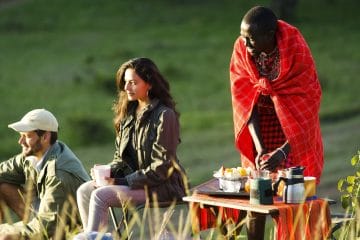
Herdtracker and Kicheche Camps
From $ 4550 /USD
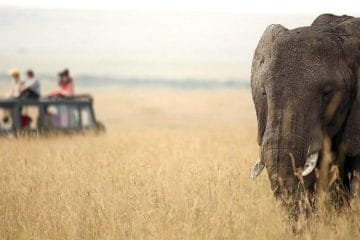
- Masai Mara and Serengeti Combo
East Africa Kenya Maasai Mara Tanzania Safaris Serengeti
From $ 11850 /USD
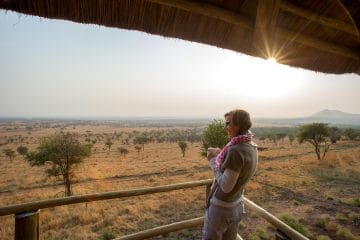
Migration Safari Kenya & Tanzania
East Africa Kenya Maasai Mara Tanzania Safaris Ngorongoro Crater Serengeti
From $ 8350 /USD
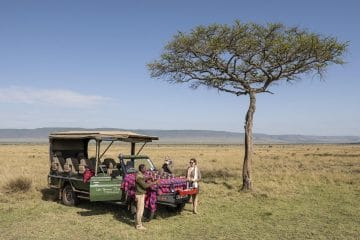
Migration River Crossings Safari with Governors...
From $ 4440 /USD
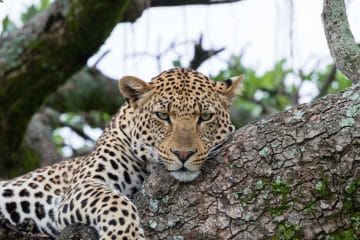
Governors Camp Collection Safari
East Africa Kenya Lake Naivasha Lake Nakuru National Park Laikipia, Lewa and Ol Pejeta Conservancy Maasai Mara
From $ 11800 /USD
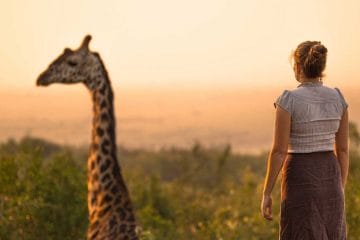
21 Kenya Safaris to choose from
Stay for 4 - 17 days
Experience our Tailor-made Tours in Kenya
When is the best month to travel to kenya.
The best time to visit Kenya depends on your interests. For wildlife enthusiasts, the dry season from June to October is ideal, with the Great Migration peaking in the Maasai Mara between July and October. Birdwatchers and those interested in lush landscapes will enjoy the wet season from November to May, particularly the short rains in November and the long rains from March to May. Each season offers unique opportunities, from witnessing newborn animals to enjoying fewer crowds and vibrant scenery.
- Kenya in January
- Kenya in February
- Kenya in March
- Kenya in April
- Kenya in May
- Kenya in June
- Kenya in July
- Kenya in August
- Kenya in September
- Kenya in October
- Kenya in November
- Kenya in December
Our Recommended Tours in Kenya
Discover Africa’s recommended Kenya safari tours offer a perfect blend of adventure, comfort, and cultural immersion. Our Maasai Mara tour ensures you witness the Great Migration and encounter the Big Five, while our Amboseli tour provides stunning views of Mount Kilimanjaro and close encounters with elephants. Tsavo tours offer a taste of Kenya’s vast wilderness, and Samburu tours highlight unique wildlife and dramatic landscapes. Each tour is carefully curated to provide an unforgettable safari experience.
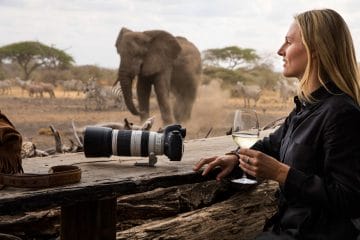
Luxury Amboseli and Masai Mara Safari
East Africa Kenya Chyulu Hills Maasai Mara
From $ 8900 /USD
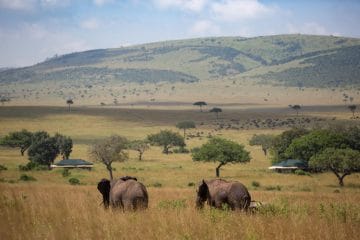
Highlights of Kenya Luxury Fly-In Safari
East Africa Kenya Nairobi Chyulu Hills Maasai Mara
From $ 10068 /USD
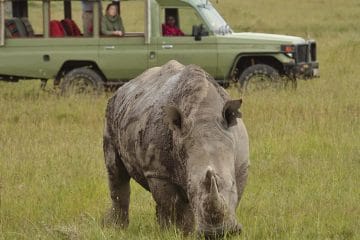
- Family Safari in Kenya
East Africa Kenya Laikipia, Lewa and Ol Pejeta Conservancy Maasai Mara
From $ 15300 /USD
Looking for Something Unique?
Kenya offers a variety of unique experiences that go beyond traditional safaris. Enjoy cultural interactions with the Maasai and Samburu people, hot air balloon rides over the Maasai Mara, and guided walking safaris that bring you closer to nature. Birdwatching, photographic safaris, and visits to local conservation projects provide deeper insights into Kenya’s rich natural heritage. These unique experiences ensure a diverse and enriching travel experience tailored to your interests.
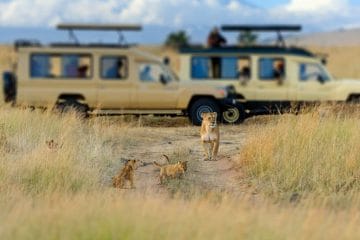
Big Cat Safaris
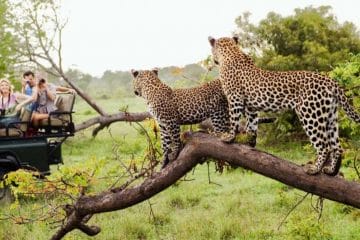
Beach Holidays in Africa
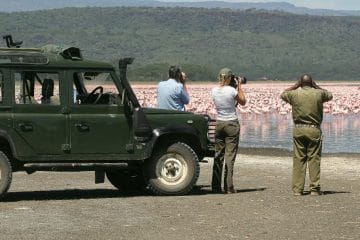
Family and Kid-Friendly Safaris
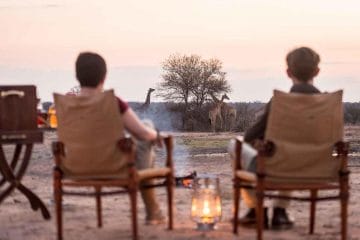
Honeymoons in Africa
Kenya Safari Reviews
Hear from our guests who have experienced the wonders of a Kenya safari. Their stories of exceptional trip planning, life-changing adventures, and memorable experiences reflect the magic of our safaris and the unmatched beauty of Kenya. Visitors have marveled at the sight of the Great Migration, thrilled at close encounters with the Big Five, and enjoyed the serene beauty of Kenya’s landscapes. Cultural interactions with the Maasai and Samburu people, combined with the luxury and comfort of our lodges, have turned their safaris into unforgettable adventures. Come and experience the awe-inspiring wildlife, stunning scenery, and unique cultural heritage that our guests rave about.
They listen, care and adapt to meet our dream experience
Victoria Falls & Botswana Review
Thomas, France 13 May 2024
Amazing trip.
Kruger, Mozambique & Cape Town Holiday Review
Renee, United States 26 Jan 2024
South africa and namibia safari. megan is knowledgeable, attentive, providing a top....
20 Day Cape Town, Kruger and Namibia Adventure Review
Gita Gandhi, Canada 05 Nov 2023
Perfect honeymoon.
Honeymoon Safari in Cape Town, Victoria Falls and Botswana Review
Catia, Portugal 02 Oct 2023
One stop shop with good recommendations for activities, transport and stay..
Los Angeles to South Africa
Ram Reddy, United States 09 Aug 2023
Megan and steve are professional well informed and went out of their....
A Safari holiday in Namibia Review
Jenny, South Africa 01 Nov 2021
Ready to plan your tailor-made safari.

Adelle Bell, Safari Travel Planner
Free safari planning advice from destination experts
Our recommended activities in kenya.
Kenya is a land of unparalleled wildlife experiences and breathtaking landscapes. Whether you’re an adventure seeker, a nature lover, or a culture enthusiast, Kenya has something for everyone. Discover the beauty of its vast plains, the excitement of its wildlife safaris, and the depth of its cultural heritage to make your visit unforgettable. From witnessing the Great Migration to engaging in traditional Maasai village tours, Kenya offers a diverse array of activities that promise an unforgettable adventure.
- Camel Safaris
- Walking safaris – short walks, 2 – 3 hours
A fairly new activity on safari, camelback riding is an incredible experience.
Camelback safaris take place in northern Kenya’s Laikipia county. This mode of transport was (and still is) used by the Arab traders and has filtered down to northern Kenya’s Samburu and Turkana tribes. These gentle creatures have a soft nature as they quietly stroll through the arid landscape. Just like horseback riding, there is no disturbance to the wildlife on a camel safari. It’s a great way to get closer to the animals.
There are a few lodges and camps that offer camelback safaris and they are traditionally found close to the northern frontier in Kenya’s Samburu country. Camels have slowly moved further south and places as far as Cape Town also offer camel rides. Bear in mind that these won’t be safaris, just rides through a nature reserve or park. Arusha in Tanzania is another place offering travellers camel rides.
An area that’s starting to thrive with camel rides is the regions close to the Sahara Desert and will be available soon is Chad’s Zakouma National Park.
It’s easy to include a camelback ride or safari to an African itinerary – merely a question of picking the right accommodation options where they are offered. It’s a brilliant way of exploring the area in a traditionally north African way and a great new perspective on wildlife and landscape.
Hone your senses to the African bush, see the small things that you miss from the vehicle and get the chance to see the Big Five on foot.
Walking Safaris bring the bush alive and the thought that a lion, elephant or buffalo may be just on the other side of a bush is absolutely thrilling. Seeing the African savanna on foot gives it an entirely different beauty, with sights and smells that are easy to miss from an elevated safari vehicle.
There are many camps throughout Africa that offer short or half day walks beyond the camp or along a designated walking route. All the walks take place within a controlled environment and the routes are safe. Travellers are accompanied by trained guides, making it a secure and gentle way to walk in the wild.
Walking through the Masai Mara, Loita Hills, Tsavo, Amboseli, Lake Natron or Serengeti with a traditional Masai must be one of the best walks to do in Africa as he shows travellers his childhood village, the land beyond and shares local wisdom acquired by these tribes over centuries. Things like scorpion catching, bow hunting and herding cattle in these vast lands is just part of everyday life for the Masai and they invite safari goers to try their hand at these skills and have a peak into a life lived as nomads of the East Africa plains.
These walks should not be confused with multiday walking safaris where travellers walk for three or four full days, sleeping in bush camps. The day walks are ideal for bringing the kids along as it’s easy, educational and loads of fun.
There are many accommodation options, and consequently many walking safaris, within and far beyond the Masai Mara. Many camps in Africa offer bush walks as an activity, so it’s simply about booking the perfect accommodation that will take you on one of these memorable walks.
See Kenya in Your Comfort
Kenya caters to all travel styles, offering a range of accommodation and transport options to suit your preferences. From luxurious safari lodges and tented camps to budget-friendly guesthouses and self-catering chalets, Discover Africa ensures you’ll find the perfect place to stay. Travel at your own pace with self-drive safaris, expertly guided tours, or exclusive private charters, providing a comfortable and personalised experience throughout your journey. Enjoy the freedom to explore this iconic destination in a way that suits you best, whether it’s an intimate bush escape, a family adventure, or an exhilarating self-drive safari in Kenya.
- Affordable Safari Holiday in Kenya
- Budget Safari Holiday in Kenya
- Luxury Safari Kenya
Visitors who want to explore the major attractions without spending too much money should consider joining a set departure or group safari tour in Kenya , either with a safari company or an overland truck. You could also consider traveling out of season.
The set group safari departures in Kenya have different accommodation options, starting from mid-range and going up.
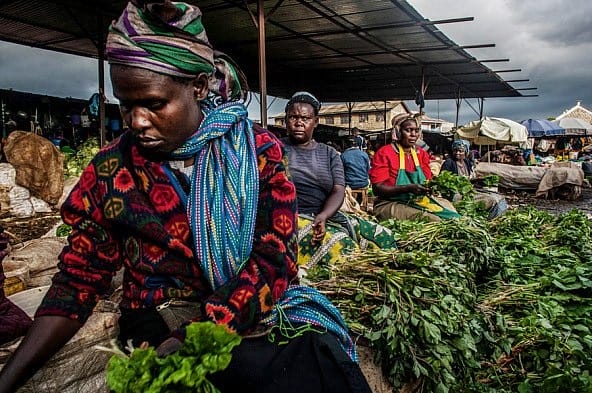
Eating out is generally quite inexpensive unless you actively seek out top-of-the-range restaurants aimed at upmarket tourists and ex-pats.
Wine is almost all imported and tends to be disproportionately expensive compared to the cheap and refreshing local beers.
Kenya is relatively easy to travel through on a tight- budget safari holiday tour , with two main provisos. The first is that high daily entrance fees at game parks, and the need for a 4×4, make most safari-oriented reserves difficult to explore cheaply, so you would need to focus on other attractions.
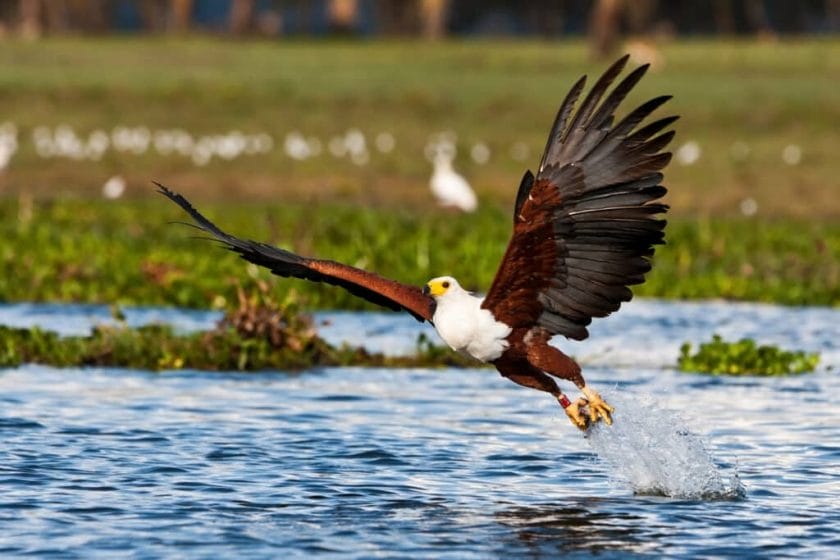
The second is that, wherever possible, you’ll need to use amenities geared towards the local economy (buses, guesthouses, and small restaurants catering mainly to Kenyans) rather than those charging inflated prices to tourists and ex-pats.
Attractions particularly well-suited to budget Kenya safari travelers include Lake Naivasha, Lake Baringo, most parts of the far west and central highlands, and the entire coast.
Kenya is a country of contrasts; everywhere you look, you’ll see different tribes, all dressed up in their finest. The culture here is incredible, but regions like the Masai Mara, when paired with the north (Samburu, Laikipia, or Meru), feel like you’ve been transported to another country.
Kenya’s coastline is equally beautiful, with white beaches and a turquoise sea, not to mention Lamu, one of the world’s most distinctive islands and a quiet refuge. Kenya is also home to the Great Rift Valley , whose lakes will provide a peaceful break from your luxury safari in Kenya.
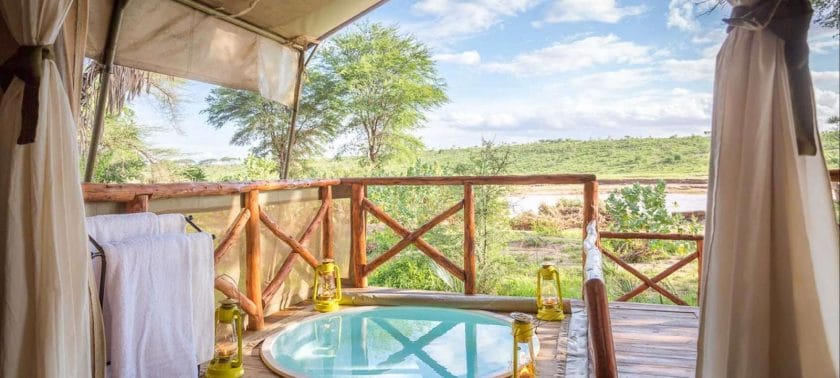
Overcrowding isn’t a concern for visitors who intend to travel to Kenya’s most isolated and luxury safari properties . It’s typically the Kenyan people who make your luxury Kenya safari so memorable – they are fascinating, engaging, and have a great sense of fun.
Your luxury Kenya Safari may include everything you choose, from the wilderness to the beach, leisure to action. Travel to two distinct locations and feel as if you’ve visited two different nations.
Those seeking luxury in the bush can pick from a variety of premium tented camps located on community or private concessions abutting the Masai Mara and Amboseli, as well as on the Laikipia Plateau.
Holiday Styles and Options in Kenya
Kenya offers a variety of holiday styles to suit every traveller. Whether you seek adventure, relaxation, or cultural immersion, options abound. Enjoy thrilling game drives, serene bush walks, vibrant cultural tours, or luxurious retreats. Customise your trip with activities like guided safaris, bird watching, local community visits, and wildlife photography. Discover Africa’s tailored packages ensure a memorable and personalised experience in Kenya.
- A Relaxed Safari Holiday in Kenya
- Adventure Holidays in Kenya
- An Active Holiday in Kenya
- Beach and Bush Safari Holidays in Kenya
- Big Five Safari Holidays in Kenya
- Birding Safari Holidays in Kenya
- Foodie Holidays in Kenya
- Kenya Honeymoon Safari
- Kenya Photographic Safari
- Malaria Free Holidays in Kenya
- Walking Safari Holidays in Kenya
Kenya’s Indian Ocean coastline offers ideal conditions for relaxation. The most popular resorts are Diana, Malindi, and Watamu. These resorts also boast a fine array of restaurants specializing in seafood and other international cuisines.
The interior of Kenya is suited to a feet-up kind of holiday. The best way to keep a safari in Kenya relatively relaxed is to visit fewer places and stay at least three nights at each of them to truly immerse yourself in the environment and engage fully with the wildlife.
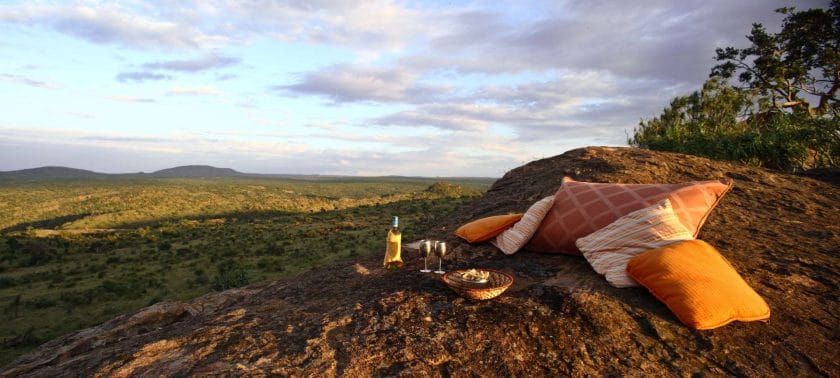
The tree hotels of Mount Kenya and the Aberdares offer possibly the most passive and relaxing safari experience in Africa, the idea being that you wait for the wildlife to come to the lodge rather than chasing it on game drives or walks.
Witness the annual Great Wildebeest Migration as it passes through the Masai Mara, the world’s eighth natural wonder . Observe lions, leopards, and cheetahs as they chase down unwitting victims before retiring to the tempting turquoise waters of the Indian Ocean, learn the Masai and Samburu traditions, and dance around the campfire.
Kenya offers many options to adventurous travelers. For budget-conscious travelers, exploring the country on public transport can be an adventure in itself.
Rift Valley lakes such as Naivasha and Baringo offer plenty of opportunities for visiting wildlife-rich areas on foot or by boat, as do Kakamega and Saiwa Swamp National Park in the far west and parts of the coast.
For a more curated budget Kenya safari, join an overland truck safari to the major reserves or one of the occasional departures to remote Lake Turkana, set in the northern deserts bordering Ethiopia.
An excellent option for those with fewer budget restrictions is a camelback safari through the little-visited Mathews Range in the vast Namunyak Wildlife Conservancy.
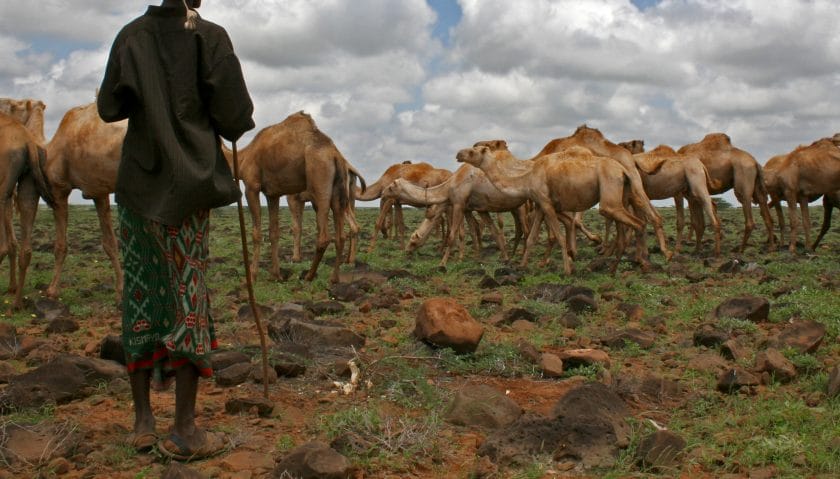
Horseback safaris and walking safaris are conducted in several individual conservancies on the Laikipia Plateau. The premier hiking destination is Mount Kenya, whose glacial peak is the second-highest in Africa after Kilimanjaro.
A trip to Kenya that includes hiking Mount Kenya would be a true Kenya adventure holiday for any adrenaline junkie. Diving and snorkeling can also be done on most Kenya Adventure tours .
Safaris and beach holidays are the two most popular activities for an active holiday in Kenya. Since the safaris in Kenya generally involve long hours being driven through the bush in search of animals, and the beaches are all about chilling out and doing as little as possible, neither is inherently well suited to active travelers on safari.
That said, except during the long rains, Kenya’s climate makes it ideal for outdoor activities. There are many ways of keeping yourself physically active, whether on the beach or on safari.

Of Kenya’s leading beach resorts, the best suited to active travelers is Watamu. Here you can take long walks in the coastal forests of Arabuko-Sokoke, explore the mysterious ruined city of Gedi, and spend long hours snorkeling offshore in lovely Turtle Bay.
When it comes to active safaris in Kenya, the private concessions of Northern Laikipia are also well-suited to active travelers since guided walks take precedence over game drives.
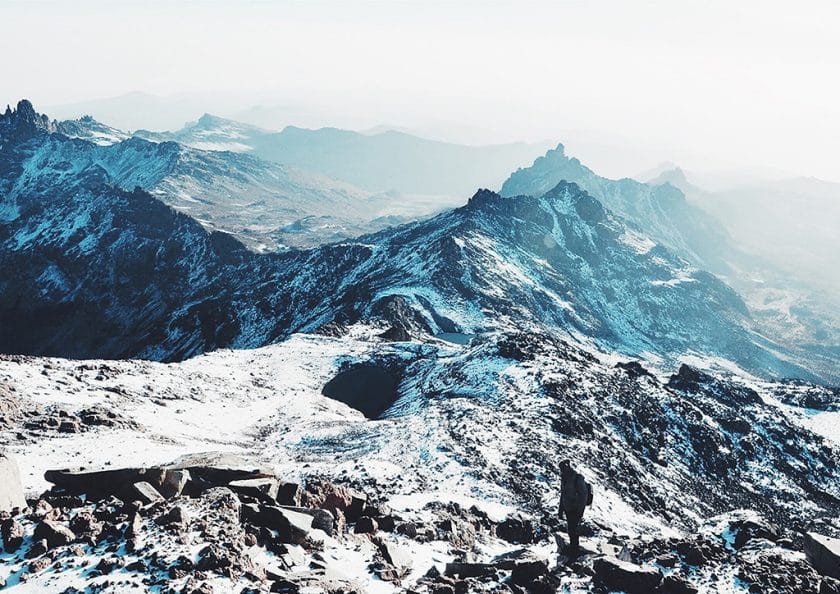
Another excellent destination for active travelers is Mount Kenya , whose thrilling landscapes make it the country’s premier hiking destination.
Bring suitable footwear and a few pairs of thick socks if you plan on walking a lot. A walking stick can be useful in hilly areas or trails with loose rocks underfoot. Binoculars will significantly enhance bird and other wildlife sightings on the trail.
Kenya is ideally suited to a beach and bush holiday. Indeed, you could say that it is tailor-made for this combination of activities. Kenya Safari tour options are covered in detail elsewhere on this website.
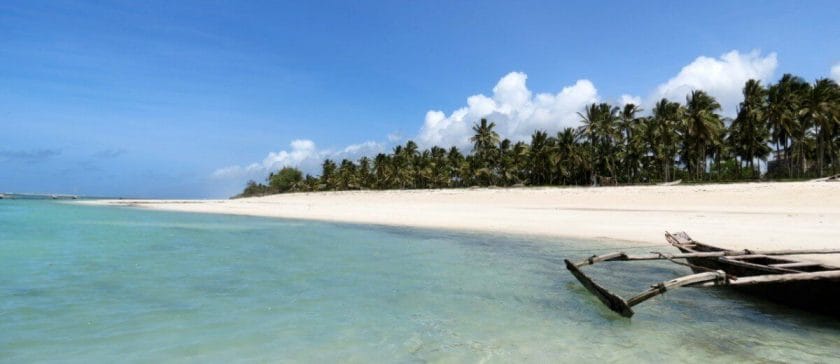
Still, we would broadly recommend 7-10 days on safari, ideally split between two or three major reserves, broken up with overnight stays at Lake Nakuru and/or one of the Tree Hotels of the Aberdares and Mount Kenya. This could be followed with 4-7 days at a beach resort such as Diani, Malindi, or Watamu.
Kenya is one of the best places in Africa for ticking off the Big Five: lion, leopard, buffalo, elephant, and rhino. An excellent short safari combination tour for Kenya for those hoping to see all these charismatic creatures (and much more besides) would be Masai Mara (for lion, leopard, buffalo, and elephant) and Lake Nakuru (for black and white rhino).
Other top safari destinations that host all or most Big Five safaris in Kenya include Tsavo East, Tsavo West, Amboseli, Laikipia Plateau, Samburu-Buffalo Springs-Shaba, Meru, and to a lesser extent Shimba Hills.
It’s important to note Kenya’s ongoing conservation efforts to protect some of its greater and lesser species – one of which is the elephant population.
The David Sheldrick Wildlife Trust is today the most successful orphan-elephant rescue and rehabilitation program in the world and one of the pioneering conservation organizations for wildlife and habitat protection in East Africa.
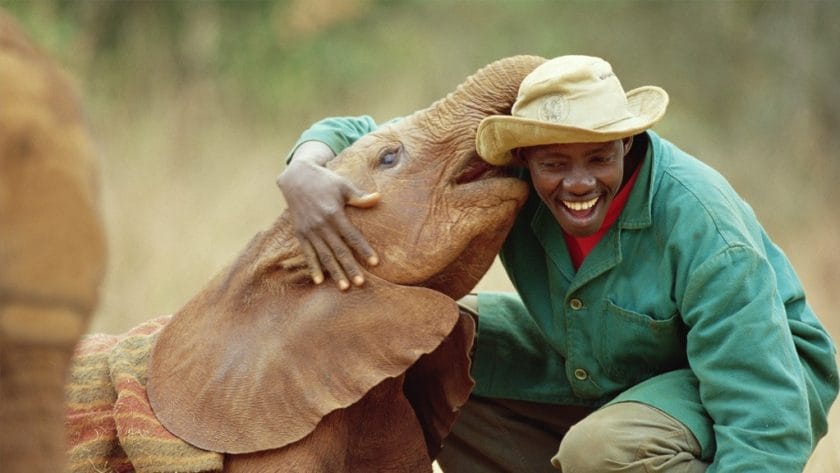
Founded in 1977 by Dr. Dame Daphne Sheldrick D.B.E, in honor of the memory of her late husband, famous naturalist and founding Warden of Tsavo East National Park, David Leslie William Sheldrick MBE, the DSWT claims a rich and deeply rooted family history in wildlife and conservation. The DSWT has remained true to its principles and ideals, remaining a sustainable and flexible organization.
Guided by experienced and dedicated trustees and assisted by an Advisory Committee of proactive naturalists with a lifetime of wildlife and environmental experience, the Trust takes effective action and achieves long-lasting results.
Kenya is one of only 15 countries globally where more than 1,000 bird species have been recorded, and it lies third on the African avian diversity list after DR Congo and Tanzania.
This list includes the world’s two largest birds (Common and Somali ostrich, now regarded as separate species) and its bulkiest flying creature (Kori bustard), along with a wealth of raptors and a dazzling array of colorful bee-eaters, turacos, parrots, rollers, and passerines.
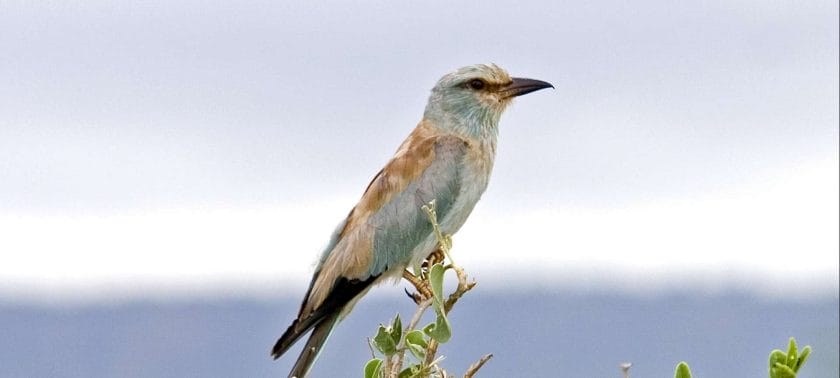
Birding Safaris are rewarding everywhere in Kenya. For dedicated birdwatching on a safari in Kenya, a well-planned two-week itinerary is likely to result in a trip list of 350–400 species, a figure that compares favorably with anywhere in the world.
The open savannah of southern Kenyan reserves such as Amboseli and the Masai Mara provides an excellent introduction to East Africa’s more common birds, with Superb starling, Purple grenadier, Lilac-breasted roller, and African grey hornbill all conspicuous.
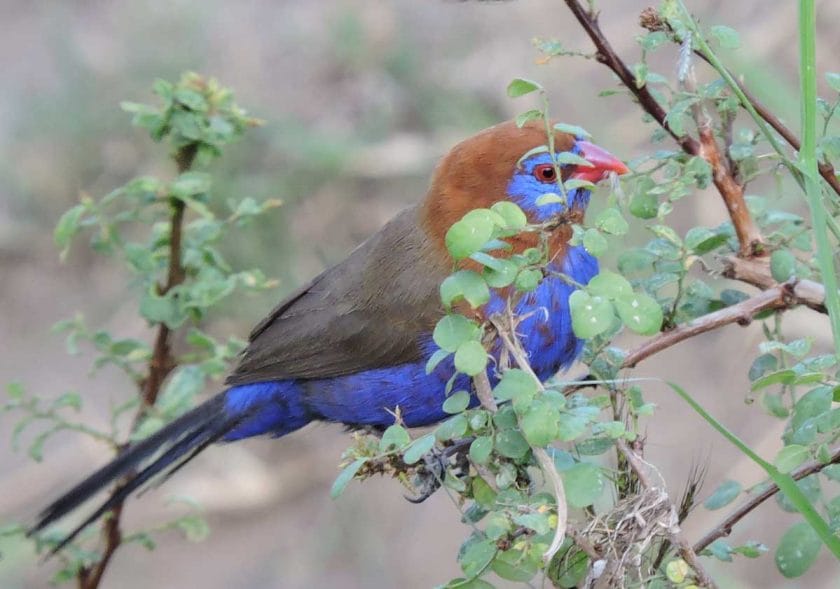
The Rift Valley lakes are also superb: Nakuru and Bogoria are rightly famed for their mind-boggling flamingo aggregations, but the less celebrated Naivasha and Baringo are arguably even better for general birding.
For regular bird-watching safari goers, a region of particular interest is the arid north, where Samburu-Buffalo Springs-Shaba hosts a high quotient of dry-country species whose range is otherwise restricted to less accessible parts of Ethiopia and Somalia.
For visitors with limited exposure to the rainforests of west-central Africa, Kakamega Forest and Saiwa Swamp protect dozens of forest species at the very eastern extreme of their range.
For coastal birds endemic or near-endemic to Kenya, Arabuko-Sokoke National Park near Watamu is home to Clarke’s weaver, Sokoke scops owl, Grey-crested helmet-shrike, Sokoke pipit, and Amani Sunbird. The central highlands also host several endemics, notably Sharpe’s longclaw, Aberdare cisticola, and Hinde’s babbler.
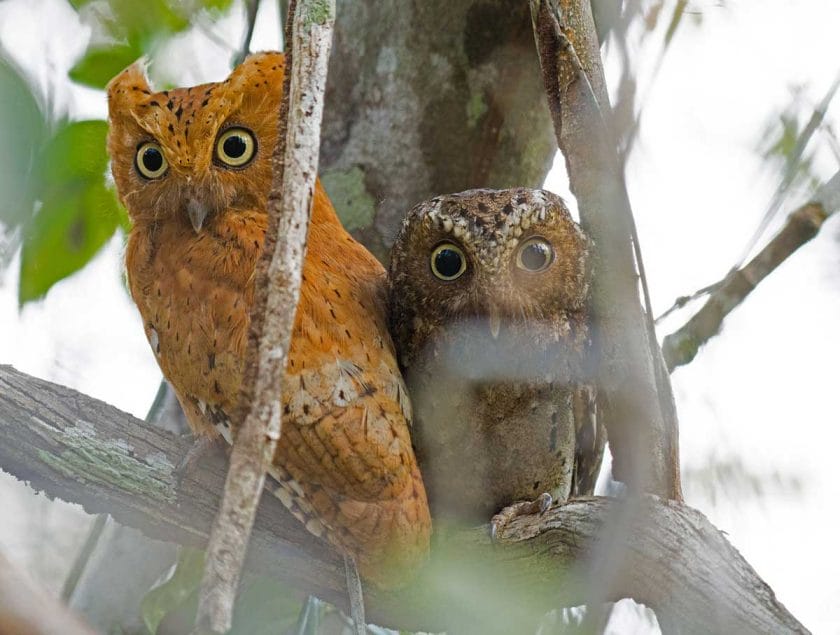
Kenya offers excellent birdwatching safaris throughout the year, but the prime season runs from October to March when Palearctic migrants boost resident populations. This also broadly coincides with Kenya’s rainy season, when several resident species shed their drab eclipse plumage in favor of bright breeding colors.
Kenya doesn’t really qualify as a dedicated foodie destination. Still, there are plenty of opportunities to eat well. Nairobi hosts a wide variety of restaurants representing a cosmopolitan selection of cuisines, as do Mombasa and the various coastal resorts (but to a lesser extent).
Seafood is particularly recommended on the coast, while Nairobi excels when it comes to meat dishes and Indian restaurants, the latter usually offering an excellent vegetarian selection. On a Kenya safari holiday, it’s customary to eat all meals at your lodge or camp. This is because most such places offer full-board packages, and there is generally no alternative within a reasonable driving distance.
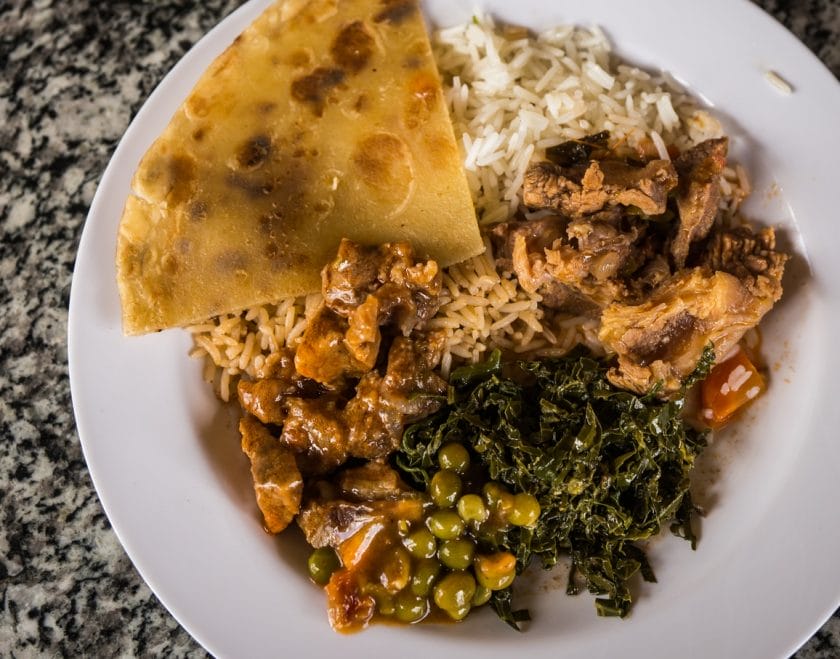
Larger lodges typically serve expansive buffet meals, while smaller lodges and tented camps generally offer three- or four-course set menus. Standards vary from mediocre at more package-like places to exceptional at certain more exclusive Kenya lodges .
The local cuisine usually consists of a lightly-spiced meat-based stew eaten with rice, ugali (stiff maize porridge), or chapati, a flat Indian-style bread. Whole fried or grilled fish is often available in coastal towns and around the great lakes. The distinctive Swahili cuisine of the coast makes generous use of coconut milk and is far spicier than other Kenyan food.
Generally, Africa is a top choice for nature-loving couples. A Kenya honeymoon safari especially has long been a choice destination for couples wanting spectacular safari experiences .

Kenya is a country where falling in love all over again is as easy as spotting a wildebeest. The rustic surroundings and soft-sand beaches with their azure waters make Kenya a timeless destination for romantics.
Coupled with the excitement of seeing the Big Five, climbing Mount Kilimanjaro , the Great Wildebeest Migration , and some of the world’s most exclusive and romantic secluded private wildlife conservancies, it’s no wonder that a Kenya honeymoon safari is a popular choice.
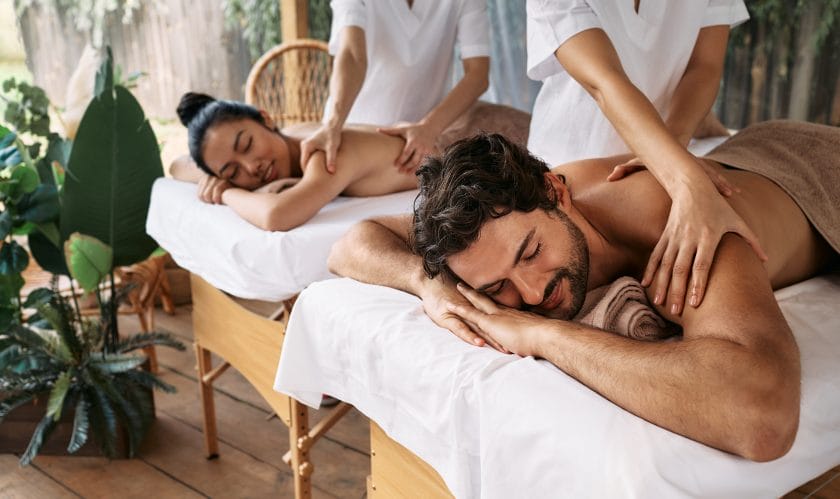
A great Kenya honeymoon safari itinerary would be to start with a few days at one of the exclusive camps that stud the conservancies bordering the Masai Mara or Amboseli, then maybe head to a similar camp on the Laikipia Plateau.
This could be followed by a few days of relaxing at a ‘barefoot luxury’ style beach resort near Diana, Watamu, or Malindi.
Kenya is a highly photogenic country. The main point of interest for most people that want to go on a Kenya photography safari is the prodigious wildlife that inhabits the national parks and other reserves.
Landscapes are greenest in the wet season, and the sky is least hazy then too, but this can be a difficult time to travel as game drives and other activities are washed out by frequent storms.
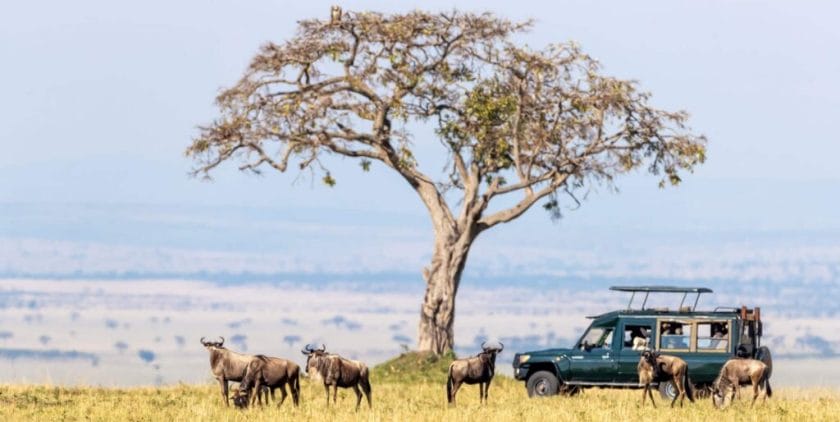
For dedicated Kenya photography safari-goers, there are several advantages to staying in private concessions or reserves, such as those on the Laikipia Plateau and bordering the Masai Mara. These private reserves are relatively costly to visit.
Still, they tend to have better and more sympathetic guides, and the ability to drive off-road, combined with the lack of other tourist traffic, means you can stick longer with a good photographic subject, and usually get far closer to it, and line up better for amazing shots.
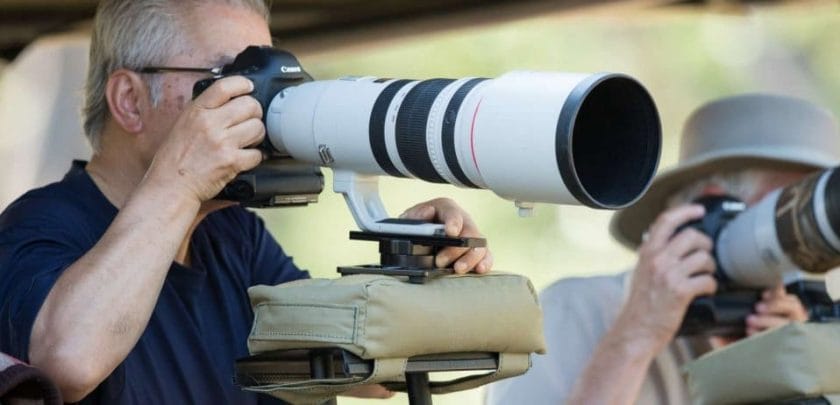
Wildlife photography requires faster and higher-magnification lenses than most other subjects. The ideal lens combination would be a zoom that goes up to 300 together with a fixed 400, with the fastest f-stop of 4, or better, 2.8.
Bring a beanbag upon which to rest your lens to minimize the risk of camera shake; to save weight, you can carry it empty to Kenya and fill it up with rice, beans, or similar after you arrive.

Colourful traditional ethnic groups such as the Maasai, Samburu, and Turkana make for great subjects, but it’s essential to ask permission before photographing them on your photography safari holiday in Kenya.
Many people will refuse, while others will expect to be paid. A good option for photographing traditionally-attired people is to arrange a paid visit to a traditional village bordering the Maasai Mara or Samburu-Buffalo Springs. The Swahili people of the coast are also sensitive about being photographed, particularly the women, whose Islamic culture perceives it to be immodest.
Malaria is prevalent in most parts of Kenya. This includes the entire coast and most safari destinations: Masai Mara, Amboseli, Tsavo, Samburu-Buffalo Springs, Lake Nakuru, and Meru.
Exceptions are parts of the Laikipia Plateau (much of which sits at too high an altitude for the malaria parasite) and the tree hotels of the Aberdares and Mount Kenya .
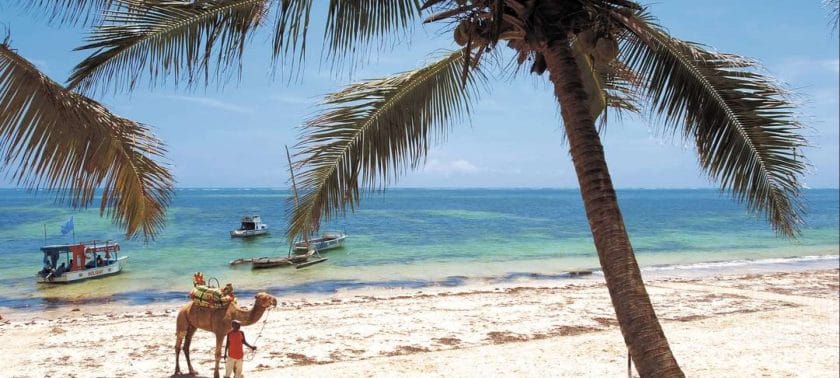
The risk of catching malaria in highland Nairobi is minimal. However, there are occasional incidents thought to be attributed to infected mosquitoes that arrive there on a bus from a lower-lying destination.
A Kenya safari focussing solely on Nairobi, the tree hotels, and Laikipia would thus be borderline malaria-free, but a slight risk would still exist. It’s therefore advisable to take necessary precautions before traveling and check with your local healthcare provider what prophylactics are best suited for a Kenya safari holiday.
Kenya is especially well suited to walking safaris . Climbing Mount Kenya offers more than enough to keep you going for a week, but this suits more dedicated hikers than casual ramblers.
Other destinations that offer some great opportunities include Lake Naivasha (a good base for day hikes to Hell’s Gate and Mount Longonot), Kakamega Forest, Saiwa Swamp, and Watamu. However, the options are better suited to independent travelers with a DIY approach than to organized safari tours .

For tourists looking to see wildlife on foot and be immersed in the environment, there are some concessions that arrange walking (guided) safaris if you are feeling more adventurous.
This offers the unique experience of seeing wildlife in a different light – where the sounds, sights, and smells will play a more prominent role in your Kenya safari experience.
Who is Travelling to Kenya with you?
Planning your Kenya safari adventure? Tailor your journey with experiences designed for every type of traveller. Whether you’re exploring with a loved one, embarking on a family adventure, discovering solo, celebrating a honeymoon, or enjoying a trip with friends, Kenya offers unique and unforgettable experiences for all. Select your travel type to find the perfect itinerary and make the most of your safari holiday.
- Couple Holiday in Kenya
- Solo Travelling Through Kenya
Most parts of Kenya are suited to couples. The coast of Kenya is ideal for romantic getaways, while more active couples looking for quality time together might consider booking a private safari or renting a self-drive 4×4 for your Kenya safari.
Highlights on a Couple Holiday in Kenya
Kenya’s beaches are among the most romantic in the world, with all white sand, shady palms, and lovely sunrises.
As with solo travelers or families, a highlight for most couples on safari in Kenya will be the opportunity to spend a few days on this safari, watching the Big Five and other creatures in the iconic Masai Mara , Amboseli, and Lake Nakuru.
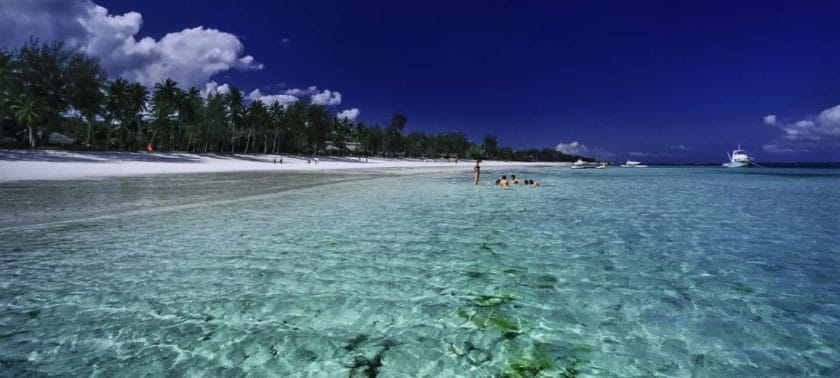
Try self-driving or traveling by public transport through the Rift Valley for something more offbeat.
Travel Tips on a Couple Holiday in Kenya
- Although most couples on holiday in Kenya are happy to spend plenty of time alone together, it can be fun to break things up with the odd night at a more sociable venue such as a backpacker hostel or intimate private lodge.
Kenya is a reasonably family-friendly safari destination, but it boasts few attractions that cater specifically to youngsters, and the threat of malaria might be a deterrent for families with young children. Most children will enjoy a few days on their family safari in Kenya but be warned that youngsters often become bored on long hot game drives.
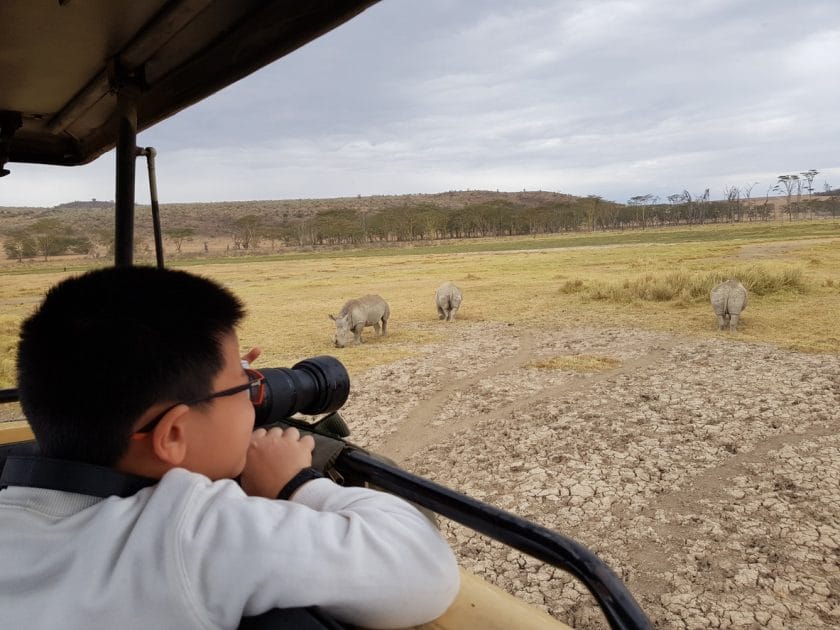
For this reason, smaller and more contained safari destinations such as Lake Nakuru and Nairobi National Park might be preferable for families than the vast expanses of Tsavo, Masai Mara, and the like.
Highlights of a Family Safari in Kenya
The highlights of a family safari in Kenya are much the same as for solo travelers or couples in Kenya: the thrilling volume and variety of wildlife present in the Masai Mara, Amboseli, and Lake Nakuru.
Of the beach resorts, Diani is probably the most family-friendly since its large package hotels tend to have an excellent range of on-site activities and amenities suited to all age groups, and offer plenty of excursions.
Travel Tips for a Family Safari in Kenya
- It’s not advisable to enter malarial areas with children not yet old enough to safely take prophylactic drugs or be able to clearly communicate any malarial symptoms to their parents. Parents of younger children should check whether their hotel offers babysitting services.
- Some private game lodges place a lower-end age restriction on children, while others specifically cater to younger children and provide them with alternative activities when adults are on game drives. Check this when you make a booking.
- Self-drivers with children should avoid overambitious itineraries. Distances in Kenya are far longer than you might be used to at home, and roads tend to be rougher, so children might quickly become bored or carsick.
Most parts of Kenya are suited to solo travel. Independent travelers using public transport will find that locals are very friendly and keen to converse with single foreigners.
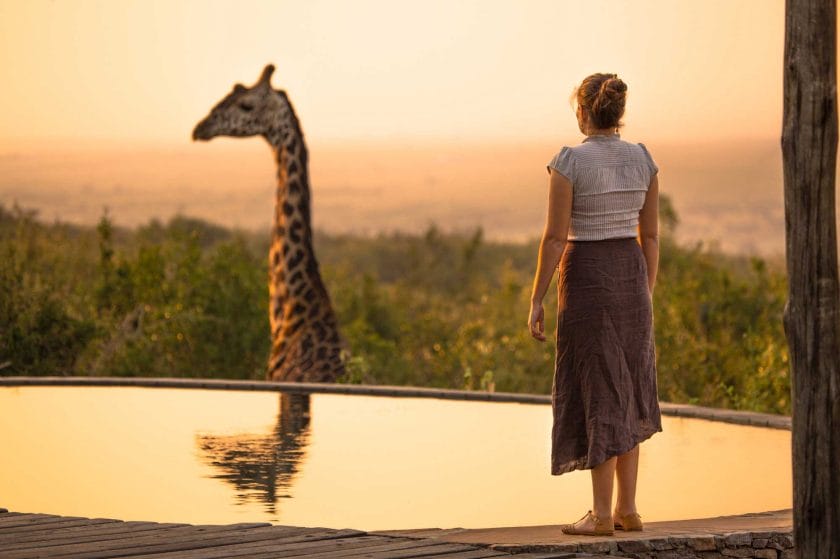
During a solo Kenya safari, small tented camps and private concessions’ reserves are probably better suited to single travelers than larger lodges in public sanctuaries since they tend to offer a more hands-on, personalized service.
Highlights on a Solo Safari in Kenya
Most solo travelers on a Kenya safari also want to visit the coast. The highlights are the same as for other travelers: the thrill of being in the bush and the range of wild animals to be seen in famous reserves such as Masai Mara , Amboseli, and Laikipia.

Of the coastal resorts, Malindi has the most inherently sociable and integrated atmosphere, making it perhaps better suited to friendly solo travelers than rustic Watamu or spread-out Diani. The Rift Valley lakes are a worthwhile destination for solo travelers interested in local cultures.
Travel Tips for Solo Safari in Kenya
Sociable solo travelers in Kenya might be keener to join group safari tours in Kenya or to stay at lodges that offer all-inclusive packages with group game drives and customarily encourage guests to mingle by dining together at one large table.
There are no risks specific to solo travel in Kenya. Still, single women, in particular, should apply the usual common-sense precautions such as not walking alone at night in cities, particularly Nairobi, and avoiding deserted beaches.
What You Need To Know
Planning a trip to Kenya involves considering several important factors to ensure a smooth and enjoyable experience. From understanding visa requirements and health precautions to knowing the best times to visit and local customs, having the right information will help you make the most of your journey. Discover Africa provides essential tips and insights to help you prepare for an unforgettable adventure in this iconic wildlife destination.
- Kenya vs South Africa
- Kenya vs Uganda
- Wildlife in Kenya
- Kenya Visa Requirements and Fees
- Getting Around in Kenya
- Changing Money in Kenya
- Is Kenya Safe?
- Kenya Food and Tipping
- Languages in Kenya
- Medical Requirements for Kenya
- Packing List for a Kenya Holiday
- What Vaccinations do I Need for Kenya?
- Medical Emergencies in Kenya
- Health Care in Kenya
- Medical Insurance in Kenya
- Lodges in Kenya: The Do’s and Don’ts
- Cultural Practices of Kenya
- When to Go to Kenya
Kenya is more of a dedicated wildlife destination than South Africa. A far more significant proportion of the country is given over to national parks and other wildlife reserves. These tend to have a wilder and more limitless feel than their fenced-in South African counterparts with their asphalt roads and village-like rest camps.
Kenya would thus be a better destination for people seeking a safari-dominated wilderness itinerary . That said, Kenya’s safari circuit is far less suited to budget-conscious travelers, or to DIY self-drivers, than South Africa’s Kruger National Park or Pilanesberg.
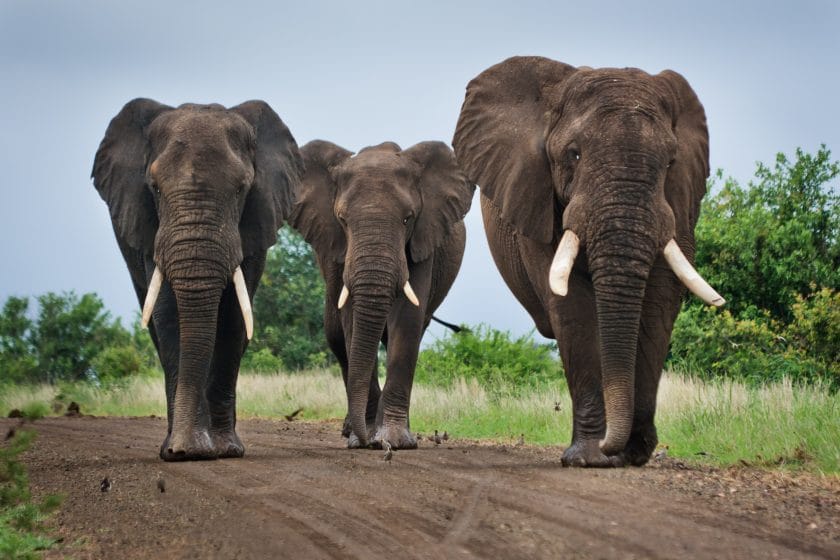
A safari in South Africa offers a far lower risk of contracting malaria, bilharzia, and other tropical diseases. This makes it a safer bet for families, first-time safari goers, and other health-conscious travelers. Indeed, South Africa is also the only country in Africa to boast several malaria-free safari destinations.
South Africa is a far more family-friendly safari destination compared to Kenya. Both countries boast superb coastlines, but South Africa’s beach resorts are notably well-developed for families and children. In contrast, Kenya’s ancient ports feature an intriguing cultural dimension shaped by the Swahili people and include fantastic ruins dating back to medieval times.
Kenya is a better destination than Uganda when it comes to quality Big Five sightings and plains wildlife in general. Its game reserves tend to be far more extensive than their counterparts in Uganda and offer a more varied selection of lodges and tented camps. Equally, a safari in Uganda offers several attractions not found in Kenya or, indeed, most other safari destinations.
Foremost among these is the opportunity to track mountain gorillas in Bwindi Impenetrable National Park and chimpanzees in Kibale National Park. Overall, Uganda offers far greater diversity when it comes to primate safaris, and it matches Kenya for general birdwatching safaris . However, it tends to be stronger on forest birds that are difficult to see elsewhere in eastern and southern Africa.
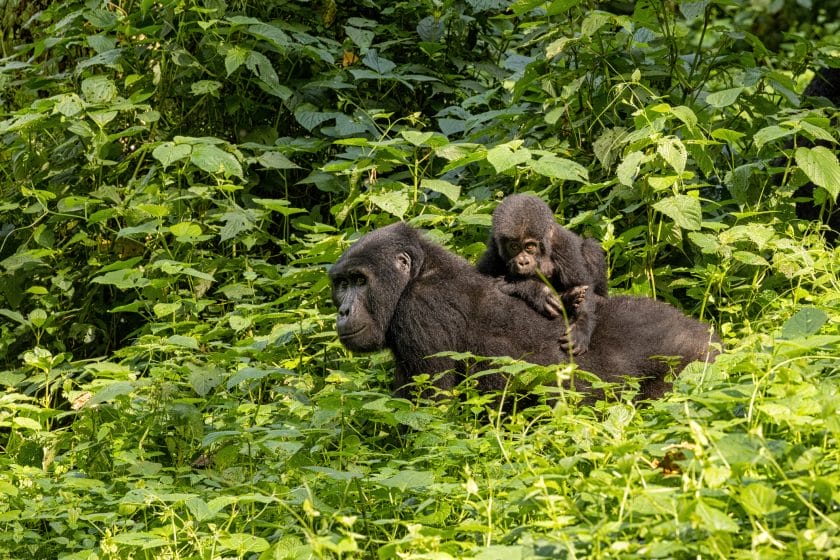
Uganda’s three main savannah reserves are also wonderfully scenic and offer the opportunity to explore thrilling tropical waterways by boat. There is nothing in landlocked Uganda to compare with the Indian Ocean beach resorts such as Diani and Watamu .
Kenya is also a more visibly diverse and fascinating country when it comes to traditional cultures, be it the pastoralist Maasai and Samburu or the Arab-influenced Swahili people of the coast.
Kenya’s geographic diversity means that it supports an extraordinary range of wildlife. The country’s premier national parks and reserves, including the Masai Mara, Amboseli, Tsavo East and West, Samburu-Buffalo Springs, Meru, and Laikipia, are all home to most or all of the Big Five, i.e., lion, leopard, elephant, buffalo and Black rhino.
We would rank the Masai Mara as one of the top five reserves in Africa for lion and cheetah sightings. It is also unusually reliable for leopards, along with other less glamorous carnivores such as spotted hyenas, jackals, and bat-eared foxes. Amboseli is one of the top places anywhere in Africa for watching elephant interactions at close quarters.
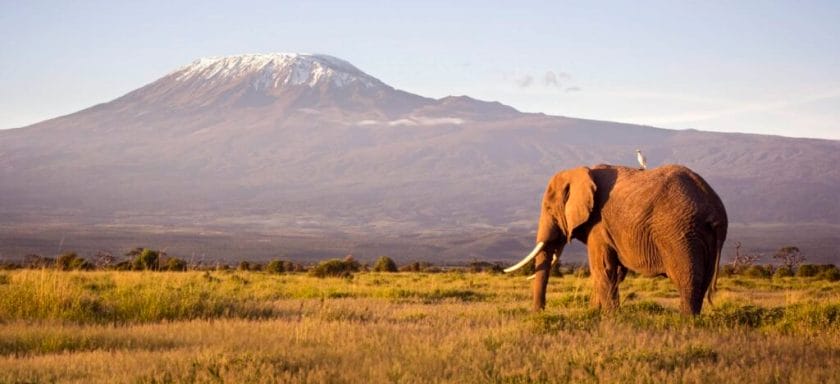
After a South African safari , a Kenya safari is the second-best choice to see both Black and White rhinos, with healthy and conspicuous populations of one or both to be found in Tsavo West, Meru, Lake Nakuru, and several of the reserves on the Laikipia Plateau .
Other wildlife tends to be more regional. The relatively moist southern savannah protected in Masai Mara and Amboseli is home to eland, Coke’s hartebeest, Topi, Grant’s and Thomson’s gazelle and impala, as well as Maasai giraffe, plains zebra, and warthog.
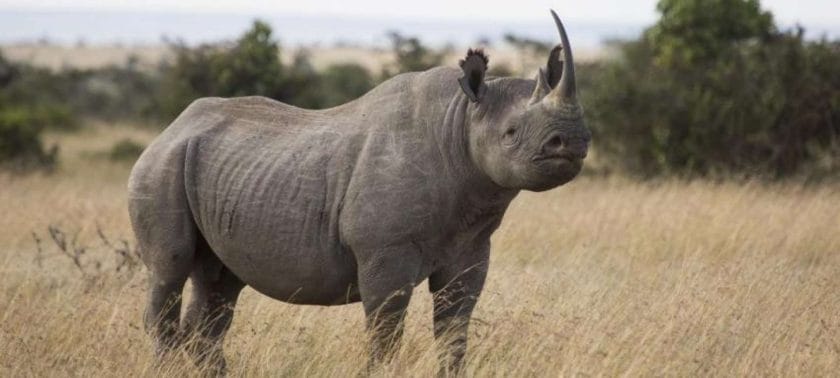
Wildebeest are resident in both reserves, but the Masai Mara is renowned for the migration of hundreds of thousands of these doleful-looking antelope from neighboring Tanzania between August and October.
The more arid northern reserves, most notably Samburu-Buffalo Springs, support a quite different set of grazers, for instance, Beisa oryx, Lesser kudu, Guenther’s dik-dik, and the unique Long-necked gerenuk.
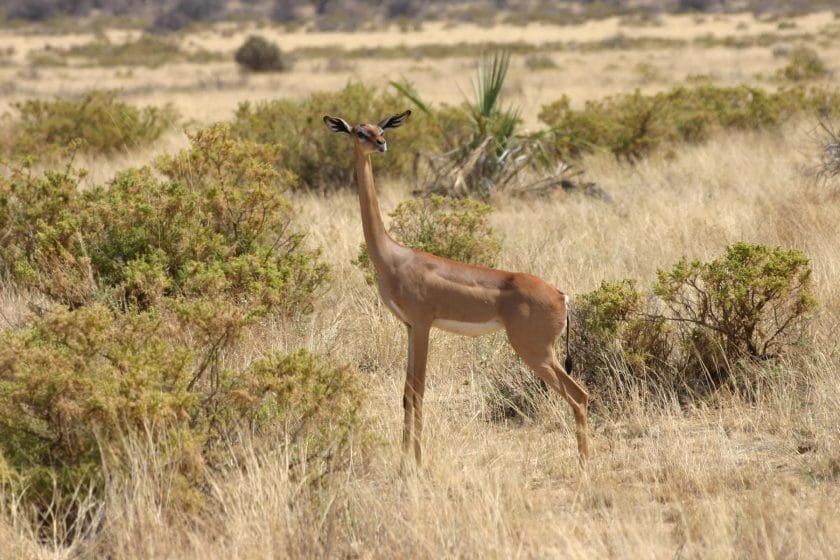
Here you will also see the critically endangered Grevy’s zebra, the world’s largest wild equid and far more narrowly striped than the more widespread plains zebra, which occurs alongside it in Samburu-Buffalo Springs. Another creature unique to the north is the reticulated giraffe, which has a more geometric and striking coat pattern than the Masai Giraffe.
Other major reserves such as Laikipia, Meru, and Tsavo East and West tend to support an intermediate selection of grazers. Very different again are the montane forests of the Aberdares and Central Highlands, coastal forests around Diani and Watamu, and tropical lowland forests in western sites such as Kakamega.

These tend to support a wide range of monkeys, most notably the striking black-and-white Colobus, small forest antelope known as duikers, and oddities like the Golden-rumped elephant shrew (coast only), mountain bongo (Aberdares only), and Giant forest hog.
Kenya is one of the world’s finest bird-watching destinations . A national checklist of more than 1,000 species places it among the world’s top 15 countries in terms of avian diversity. But even this figure doesn’t convey the variety of colorful and striking birds on display countrywide.
There are several places, most notably perhaps Lake Naivasha or Baringo, where a moderately skilled birder could tick off 100 species in a day. And for dedicated birdwatchers, a well-planned two-week itinerary taking in key ornithological sites such as Kakamega Forest, Samburu-Buffalo Springs, Mount Kenya, the Rift Valley Lakes, and the coastal forests around Watamu should result in a trip list of at least 350 species, quite possibly more.
Kenya also hosts diverse marine wildlife. A year-round attraction is the colorful reef fish that proliferate diving and snorkeling sites in the reefs offshore of Watamu, Malindi, Mombasa, and Diani. Other, more seasonal, marine wildlife includes dolphins, whale sharks, marine turtles, and manta rays.
All visitors must present a passport upon arrival at their port of entry. This must be valid until at least 6 months after the end of their intended stay, and must have at least two blank pages to accommodate entry and exit stamps.
Technically, visitors should also have a return or onward ticket, and be able to demonstrate access to sufficient funds to cover day-to-day expenses for the duration of their stay, but these requirements are seldom enforced.
Most visitors require a visa to enter Kenya. This includes nationals of practically all European, Asian, Middle Eastern, and North or South American countries, as well as Australia and New Zealand. For single-entry tourist visits of to 90 days, eVisas can be bought online, provided this is done at least two days prior to departure, and it is also usually possible to get a visa on arrival.
Multiple-entry and non-tourist visas must be applied for through a Kenyan embassy or high commission abroad.
Visas for stays of up to 90 days are not required by passport-holders of certain African and Caribbean countries, among them South Africa, Tanzania, Uganda, Ghana, Malawi and Zimbabwe.
An East Africa Tourist Visa allows multiple-entry visits to Kenya, Rwanda and Uganda, but not to Tanzania or Burundi.
- A good network of scheduled and charter flights connects Nairobi to other major cities in Kenya, for instance, Mombasa, Malindi, and Kisumu. Light aircraft flights connect all the main game reserves to Nairobi and to each other. Note that most (but not all) domestic flights to/from Nairobi depart and arrive not from Jomo Kenyatta Airport, but from the smaller Wilson Airport (WIL), so check your booking.
- Most people explore the country on an organized group or bespoke safari or tour, which can be arranged through innumerable international and local operators.
- Most trunk roads are surfaced and well maintained, so self-drive is an option, provided you have a valid license. Be aware that driving tends to be reckless by Western standards. Driving is on the left side of the road, as in the UK, which may require some adjustment for drivers accustomed to driving on the right.
- National parks and other safari destinations are not generally accessible on public transport, but it is easy enough to travel between towns by bus or local Matatu mini busses. Be warned that these are often poorly maintained, overcrowded and recklessly driven, and fatal accidents are commonplace. A notable exception is the historic train service that connects Nairobi to Mombasa, a trip that qualifies as an attraction in its own right.
The Kenyan shilling (KSh) trades against most international currencies at a favourable rate. There’s no need to bring large amounts of hard currency cash or to buy shillings in advance.
Major international credit/debit cards (for instance Master and Visa) can be used to draw local currency at 24-hour ATMs in most cities and beach resorts, but not in national parks and other safari destinations).
Many vendors do not accept cards, however, so it’s a good idea to carry a few hundred dollars’ worth of hard currency cash as a fall back.
Nairobi has a longstanding reputation as a bit of a crime hotspot, one that is largely justified but unlikely to affect those who stay at a suburban hotel since crime targeted at tourists is mainly associated with the city center.
The triangle of streets between Moi Avenue and River Road should be avoided at all times unless you have a trusted local escort, and it’s best to use a taxi if you leave your hotel after dark.
Crime is also a problem on some parts of the coast but far less so in small upcountry towns, game reserves, and other rural areas. However, the majority of visitors to Kenya have hassle-free holidays, and so should you if you follow the commonsense dos and don’ts below:
- Carry a scan or electronic version of all important travel documents in case they are lost or stolen. You might also want to email all such backups to a webmail address you can access anywhere on the road.
- Padlocking your luggage might not prevent a determined thief from slashing it open, but it’s a solid deterrent to casual light fingers.
- Never leave valuables (cash, mobile phones, electronic devices, etc.) lying around in your hotel room; where possible, stow your passport and other important documents, as well as spare cash and cards, in a hotel safe.
- Leave expensive jewelry at home.
- Avoid exposing cameras, laptops or large amounts of cash in urban areas.
- Avoid walking around towns after dark. If you must, do so as part of a group and stick to busy and well-lit streets.
Tip in local currency where possible; it may be difficult for locals to exchange small amounts of hard cash into Kenya shillings. Tipping is not standard at eateries or bars catering mainly to a local clientele, but that doesn’t mean a little something won’t be appreciated by the recipient.
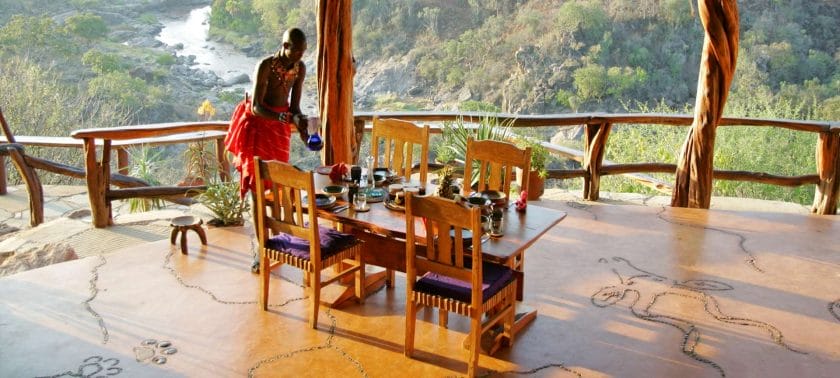
Tourist-oriented restaurants operate similarly to those in Europe or North America. A 10-15% tip to the waiter is standard, depending on the quality of service.
At hotels, it’s usually easier to sign drinks and meals to the room than to pay cash, but you could still leave a tip for an individual waiter or bartender or add one to the bill before you sign it. Hotel porters usually expect a tip equivalent to around US$1 per luggage item.
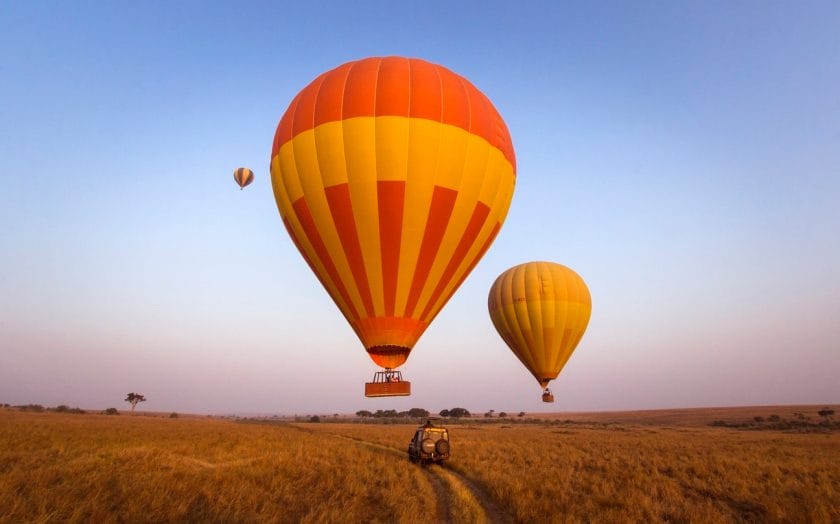
On organized tours in Kenya , it’s customary to tip the guide and/or driver and/or cook at the end, usually as a group rather than individually.
Upmarket lodges and camps in Kenya that operate on a full-board basis generally have a tip box at reception. Tips will usually be distributed between all the staff, a system that seems fairest to backroom workers in a country where hotel staff is very poorly paid.
In game lodges that offer guided game drives, any guides, drivers, and trackers should be tipped. Many such lodges have guidelines in the rooms; failing that, ask management for a directive.
More than 60 different languages are indigenous to Kenya. The official languages are English, which is widely spoken to a high standard in the tourist industry, and KiSwahili. This East African lingua franca originates from the coast and spread inland along trade routes in the early 19th century.
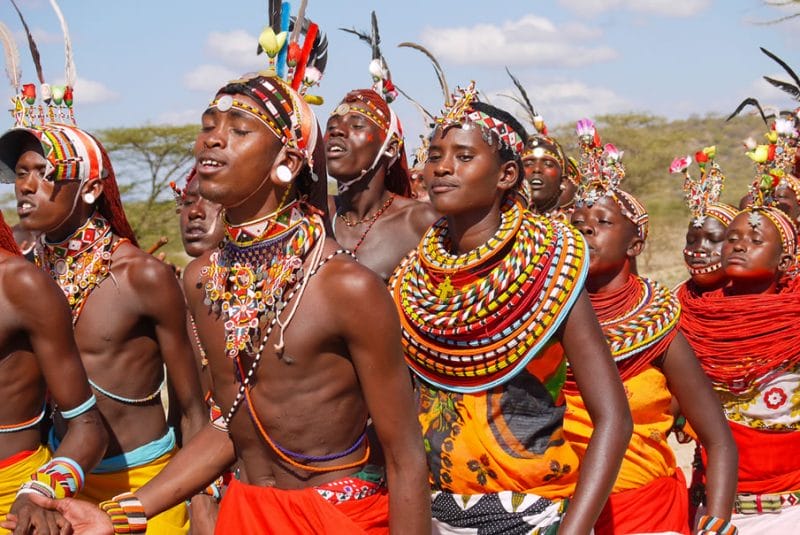
Other major languages include Kikuyu, Luo, Akamba, and Maa. Most languages spoken locally belong to two broad languages: Niger-Congo and Nilo-Saharan, spoken by the country’s Bantu and Nilotic populations, respectively. The Cushitic and Arab ethnic minorities speak languages belonging to the separate Afroasiatic family, with the Hindustani and British residents speaking languages from the Indo-European family.
Kenya’s various ethnic groups speak their mother tongues within their communities. The two official languages are used with varying degrees of fluency for communication with other populations. English is widely spoken in commerce, schooling, and government. Peri-urban and rural dwellers are less multilingual, with many in rural areas speaking only their native languages.
Kenya is a culturally rich country with over 60 languages spoken. The official languages are English and Kiswahili, used widely in commerce, education, and government. Learn to say hello, goodbye and even a few common phrases with us.
The national language and lingua franca of East Africa.
- Greeting: “Hujambo” (hoo-JAHM-boh) – Hello
- Goodbye: “Kwaheri” (kwah-HEH-ree) – Goodbye
- Common Phrases:
- “Asante” (ah-SAHN-teh) – Thank you
- “Tafadhali” (tah-fah-DHA-lee) – Please
- “Samahani” (sah-mah-HAH-nee) – Excuse me/Sorry
- “Jina lako nani?” (JEE-nah LAH-koh NAH-nee) – What is your name?
- “Habari gani?” (hah-BAH-ree GAH-nee) – How are you?
- “Sawa sawa” (Sah-wa Sah-wa) – Okay or All good!
Spoken by the Kikuyu people, the largest ethnic group in Kenya.
- Greeting: “Wi mwega” (wee m-WEH-gah) – Hello
- Goodbye: “Naki ngwendete” (nah-KEE ng-wen-DEH-teh) – Goodbye
- “Niwega” (nee-WEH-gah) – Thank you
- “Ndiaga” (n-DEE-ah-gah) – Please
- “Wina wira?” (WEE-nah WEE-rah) – How are you?
- “Thenge itagwo?” (THEN-geh ee-TAH-gwoh) – What is your name?
- “Nake?” (NAH-keh) – Excuse me
Spoken by the Luo people, mainly around Lake Victoria.
- Greeting: “Nya’tho” (nyah-THOH) – Hello
- Goodbye: “Odhi maber” (OH-dhee mah-BER) – Go well
- “Erokamano” (eh-roh-kah-MAH-noh) – Thank you
- “Kwayoni” (kwah-YOH-nee) – Please
- “Ang’o?” (AHNG-oh) – What?
- “Nyingi ng’a?” (NYING-ghee ng-AH) – What is your name?
- “Ber ahinya” (BER ah-HEE-n-yah) – Very good
Spoken by the Kamba people, primarily in the eastern region.
- Greeting: “Wìkàla” (WEE-kah-lah) – Hello
- Goodbye: “Koma na kwìkàla” (KOH-mah nah KWEE-kah-lah) – Goodbye
- “Nìngìyíe” (nee-NGEE-yee-eh) – Please
- “Twààsìsìa” (TWAAH-see-see-ah) – Thank you
- “Nìkwata” (nee-KWAH-tah) – Hold on
- “Àtũ nĩkĩ?” (ah-TOO nee-KEE) – How are you?
- “Nĩkũĩta” (nee-KWEE-tah) – Excuse me
Maa (Maasai):
Spoken by the Maasai people, renowned for their distinct culture.
- Greeting: “Supa” (SOO-pah) – Hello
- Goodbye: “Orkuma” (or-KOO-mah) – Goodbye
- “Ashe oleng” (ah-SHEH oh-LENG) – Thank you
- “Kashana” (kah-SHAH-nah) – Please
- “Baku” (BAH-koo) – Sorry
- “Sidai?” (SEE-dah-ee) – How are you?
- “Ning’ai” (ning-AH-ee) – What is your name?
Widely used in urban areas and the official business language.
- Greeting: “Hello” (heh-LOH) – Hello
- Goodbye: “Goodbye” (good-BYE) – Goodbye
- “Thank you” (THANGK yoo) – Thank you
- “Please” (pleez) – Please
- “How are you?” (how ar yoo) – How are you?
- “Excuse me” (ehks-KYOOZ mee) – Excuse me
- “What’s your name?” (wots yor naym) – What is your name?
Embracing the local languages can significantly enhance your Kenya safari experience. Learning and using phrases like “Hujambo” and “Asante” not only enriches your interactions but also shows respect for the culture.
As you traverse the stunning landscapes, from the Maasai Mara to the shores of Lake Victoria, surprising your guide with a few local words can create memorable connections and deeper cultural insights.
Malaria is the biggest single medical threat to visitors to Kenya. It is present in most parts of the country throughout the year, though the risk of transmission is generally far higher at low altitudes and during the rainy season. There is no vaccine, but several different oral prophylactics are available, and it is advisable to visit a travel clinic or other suitably qualified medical professional for up-to-date advice about the option best suited to your requirements. No prophylactic is 100% effective, so take all reasonable precautions against being bitten by the nocturnal Anopheles mosquitoes that transmits the disease.
These include donning a long-sleeved shirt, trousers and socks in the evening, and applying a DEET-based insect repellent clothes to any exposed flesh. Always sleep under a net, or failing that in and air-conditioned room, under a fan, or with a mosquito coil burning. Malaria normally manifests within two weeks of being bitten, but it can take months, so if you display possible symptoms after you get home, get to a doctor immediately, and ask to be tested. Travellers with young children or who prefer not to take medication might consider visiting a malaria-free safari destinations elsewhere in Africa in preference to Kenya.
Anti-malarial drugs are as good as essential and advice should be sought at least a few weeks in advance to be sure you use suitable medication. At the same time, check which (if any) vaccinations require updating. All over-the-counter medications are available at pharmacies in the larger cities, but not in game reserves or more isolated beach destinations, so best to buy any prescription drugs or others that you use regularly before you travel, along with essentials such as sunblock and insect repellent. People who wear contact lenses often find that their eyes are more irritable in the dry heat typical of many safari destinations, so it is a good idea to bring glasses as a backup.
A yellow fever vaccination and certificate is not mandatory for those entering Kenya from Europe or North America. You may be asked for one if you enter arrive from elsewhere in the yellow fever belt of Africa or South America.
It’s important to be up-to-date on tetanus, polio and diphtheria, and you might consider immunisation against hepatitis A and B, diphtheria, rabies, typhoid, cholera and tuberculosis.
A public healthcare system exists, but it’s underfunded and rudimentary by international standards. Private medical facilities compare favorably to most parts of Africa other than South Africa but are not always to the standard you’d expect in Europe or North America.
On the plus side, medical consultations are generally very cheap, and local doctors are highly experienced in recognizing symptoms of malaria (the most common threat to travelers) and prescribing appropriate medication.
A public healthcare system exists but it is underfunded and rudimentary by international standards. Private medical facilities compare favourable to most parts of Africa other than South Africa but are not always to the standard you’d expect in Europe or North America. On the plus side, medical consultations are generally very cheap, and local doctors are highly experienced when it comes to recognising symptoms of malaria (the most common threat to travellers) and prescribing appropriate medication.
It is recommended that you take comprehensive medical travel insurance, inclusive of air evacuation from remote areas. Be aware that some insurance policies may not cover paragliding or scuba diving other activities deemed to be hazardous, and it might also be null and void in areas subject to travel warnings by the British FCO or US state department.
- Never walk unaccompanied after dark in the bush or an unfenced camp or lodge.
- Don’t feed the wildlife – not only does it encourage a dependency on handouts to survive, but it may also foster problem animals.
- Don’t leave cash or other valuables lying around in the room.
- Do cover up in the evenings, spray exposed skin with repellent, and sleep under a net or fan to discourage mosquitos and other biting insects.
- Don’t freak out if you find lizards in your room or frogs in the basin – they are not vermin but rather harmless contributors towards insect control.
- Don’t make any unnecessary noise when wild animals are in the vicinity, or you might scare them off.
- Do take the opportunity to go on a guided bush walk if offered – it will be a wonderful opportunity to focus on plants, insects, birds and other creatures less glamorous than the Big Five.
- Do carry sunblock and a hat on all game drives.
- Do assume that any large animal that enters camp is wild – respect its space and give it a wide berth rather than walking up to it to be photographed with it and chasing it away or provoking attack.
Although the official languages are Swahili and English, Kenya is a multilingual country. There are 62 languages spoken throughout, which mainly consist of tribal African languages and a minority of Middle-Eastern and Asian languages spoken by descendants of foreign settlers (i.e., Arabic, Hindi, etc.).
The African languages come from three different language families – Bantu languages (spoken in the center and southeast), Nilotic languages (in the west), and Cushitic languages (in the northeast).
Kenya is not a homogeneous country ethnicity-wise. The make-up of Kenyans is primarily that of 13 ethnic groups with an additional 27 smaller groups. Most Kenyans belong to ‘Bantu’ tribes such as the Kikuyu, Luhya, and Kamba.
There are also the ‘Nilotic’ tribes such as the Luo, Kalenjin, Maasai, and Turkana. The ‘Hamitic’ people include the Turkana, Rendille, and Samburu. Around 13% of the population are of non-African descent, i.e., Indian, Arab and European.
Kenyans are group-orientated rather than individualistic. “Harambee” (coming from the Bantu word meaning “to pull together”) defines the people’s approach to others in life. The concept is essentially about mutual assistance, mutual effort, mutual responsibility, and community self-reliance.
Choosing the best time to visit Kenya can significantly enhance your safari and beach experiences. Here’s a detailed guide to help you decide when to go based on weather patterns, wildlife viewing, and overall conditions:
Dry Season ( June to October )
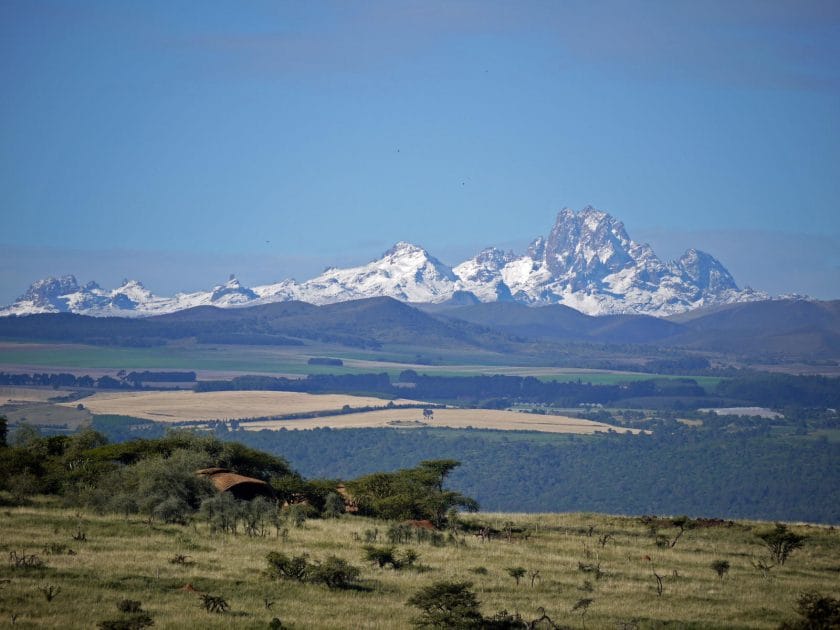
Overview: The dry season is the best time to visit Kenya for safaris and beach holidays. The weather is cool and dry, making it ideal for wildlife viewing and exploring the beautiful beaches along the Kenyan coast.
- Temperature: Daytime temperatures range from 20°C to 28°C (68°F to 82°F), while nighttime temperatures can drop to 10°C to 15°C (50°F to 59°F).
- Rainfall: This period sees very little rain, resulting in clear skies and excellent wildlife viewing conditions.
Activities:
- Safaris: Ideal for game drives in Maasai Mara, Amboseli, and Tsavo National Parks.
- Wildlife Viewing: Animals congregate around water sources, making it easier to spot the Big Five.
- Beach Holidays: Perfect for sunbathing, swimming, and water sports in Diani and Malindi.
- Cool, dry weather perfect for safaris.
- High wildlife concentrations around water sources.
- Clear skies and warm beaches.
- Higher visitor numbers due to peak tourist season.
- Prices for accommodation and tours may be higher.
Recommended Tours: Explore our Dry Season Kenya Safari Package for the best wildlife and beach experiences.
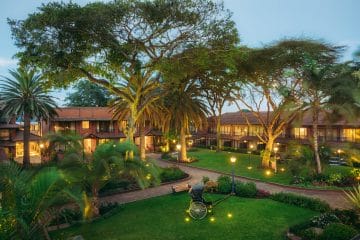
Kenya Nairobi
Fairmont, The Norfolk Hotel, has played a leading role in Kenya’s colourful history and is...
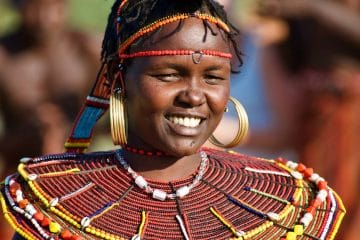
InterContinental Nairobi Hotel
Nairobi Kenya
This Nairobi hotel is a refuge in the city. It is conveniently positioned for business...
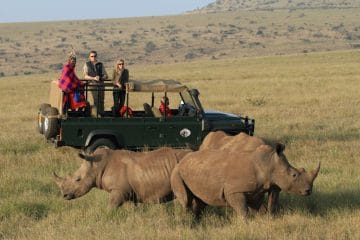
The House - Sirikoi
Sirikoi is located within the Lewa Wildlife Conservancy in Kenya, home to the endangered Grevy’s...
Short Rainy Season ( November to December )
Overview: The short rainy season features brief showers that quickly give way to sunny skies. This period is perfect for those looking to enjoy Kenya with fewer tourists and greener landscapes.
- Temperature: Daytime temperatures range from 24°C to 30°C (75°F to 86°F), with warm, humid conditions.
- Rainfall: Short, sporadic showers with plenty of sunshine in between.
- Bird Watching: Migratory birds arrive, making it a great time for bird enthusiasts.
- Quieter Safaris: Enjoy less crowded parks and attractions.
- Cultural Tours: Explore local villages and experience Kenyan culture.
- Lush, green landscapes.
- Fewer tourists and lower prices.
- Excellent time for bird watching.
- Occasional rain showers may interrupt outdoor activities.
- Higher humidity.
Recommended Tours: Check out our Short Rainy Season Kenya Package for a quieter, more intimate safari experience.
Long Rainy Season ( March to May )
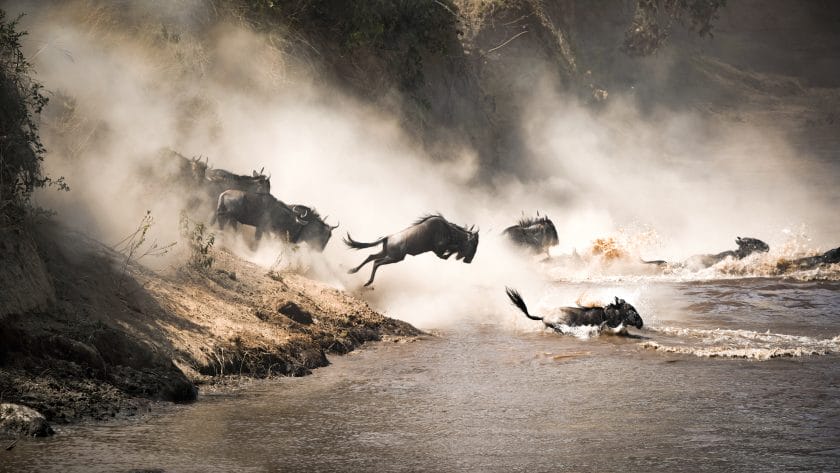
Overview: The long rainy season is characterized by heavy and consistent rainfall. This period is best for budget travelers and those who enjoy lush, green landscapes.
- Temperature: Daytime temperatures range from 22°C to 28°C (72°F to 82°F), with warm, humid conditions.
- Rainfall: Expect heavy and frequent showers, often lasting for several hours.
- Lush Scenery: The parks’ vegetation flourishes, making them incredibly green and beautiful.
- Low Tourist Numbers: Enjoy a more peaceful and intimate experience with fewer visitors.
- Affordable Rates: Lower prices on accommodation and tours.
- Vibrant, lush landscapes.
- Fewer tourists, offering a more exclusive experience.
- Lower prices for accommodation and activities.
- Heavy rainfall may disrupt outdoor plans.
- Higher humidity and increased mosquito activity.
Recommended Tours: Discover our Long Rainy Season Kenya Package for a budget-friendly, lush safari experience.
Hot Season ( January to March )

Overview: The hot season is the warmest time of the year in Kenya, with high temperatures and occasional short showers. This period is perfect for beach lovers and watersport enthusiasts.
- Temperature: Daytime temperatures range from 28°C to 35°C (82°F to 95°F), with warm nights.
- Rainfall: Mostly dry with occasional short showers.
- Warm Waters: Ideal for swimming, diving, and snorkeling along the Kenyan coast.
- Marine Excursions: Excellent time for dolphin watching and exploring coral reefs.
- Festivals: The Lamu Cultural Festival in February is a vibrant cultural event.
- Perfect for beach activities and water sports.
- Warm, sunny days with occasional rain for a refreshing break.
- Vibrant cultural festivals.
- High temperatures and humidity can be intense.
- Higher prices and more tourists compared to the long rainy season.
Recommended Tours: Experience our Hot Season Kenya Package for a sun-soaked adventure.
Key Considerations for Each Month:

June to October (Dry Season):
- June : The start of the dry season; perfect for safaris and beach holidays.
- July to September : Peak safari season with excellent wildlife viewing.
- October : End of the dry season; great for beach activities and wildlife spotting.
November to May (Wet Season):
- November : Short rains begin; greener landscapes and fewer tourists.
- December to February : Warm temperatures with occasional rains; ideal for birdwatching and water sports.
- March to May : Long rains; lush landscapes and fewer tourists.
Each season in Kenya offers unique experiences and opportunities for visitors. Whether you’re looking to witness the Great Migration, relax on stunning beaches, or explore vibrant cultural festivals, there’s a perfect time for every type of adventure in Kenya.

We have 5 rating for 447 reviews
We have 4.7 rating for 35 reviews
We have 4.9 rating for 73 reviews
Join our newsletter
Sign up to receive exclusive offers, safari inspiration, and expert tips straight to your inbox.
By proceeding you agree to our Privacy Policy and Terms & Conditions .
POPULAR DESTINATIONS
Popular tours.
- Luxury Explorers Safari in Botswana
- Romantic Cape Town & Luxury Safari
- Wildlife and Gorillas of Rwanda
- Luxury Honeymoon in Mauritius
POPULAR ACCOMMODATIONS
- Sabi Sabi Earth Lodge
- Chobe Game Lodge
- Khwai Lediba
- Camp Okavango
- Khwai Leadwood
QUICK LINKS
- Safari Cost Estimator Tool
- [email protected]
Deals of the Week Expedition to Egypt Up to 50% OFF
Six Day Best of Kenya and Tanzania Safari
Booking needs min. 2 travelers
- Great Migration
- Fully Guided
- Personalized
- Christmas & New Year
Traveled in June 2023
Places You’ll See

- Introduction
- Day 1 Nairobi - Maasai Mara
- Day 2 Maasai Mara
- Day 3 Maasai Mara - Serengeti
- Day 4 Serengeti National Park
- Day 5 Serengeti National Park - Ngorongoro
- Day 6 Ngorongoro - Arusha
Want to read it later?
Download this tour’s PDF brochure and start tour planning offline
What's Included
- Accommodation
- Additional Services
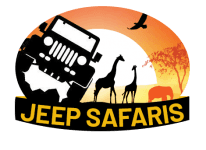
Operated by
Jeep Safaris and Tours
Number of tours
5 to 86 years old
Response time
Response rate
Jeep Safaris and Tours is one of the most reliable and affordable inbound premier Kenya and Tanzania tour operator, dedicated to provide comprehensive Tours & Safaris, Mount Kilimanjaro climbing tours - Mount Kenya trekking tours & travel services tailored to the specific needs of luxury and...
Your Peace of Mind Options
Cancellation policy.
A transparent overview of applicable fees.
Customer Reviews
- Overall Rating Good 4.0
- Itinerary Good 3.8
- Guide Excellent 4.3
- Transport Good 3.8
- Accommodation Excellent 4.3
- Food Good 4.0
- Tour Operator Jeep Safaris and Tours 4.6
- Most Recent
- Most Popular
- Highest First
- Lowest First

- EA Elizabeth · 15th July 2023 Great adventure with Jeep Safaris, I would highly recommend to anyone. Great customer service and accommodation. If you are looking for the right place to spend your holiday this is it. Look no more. Trip date: June 2023
- JB Josh · 12th July 2023 The best tours I have had Trip date: January 2023

- A AmosPeters · 24th May 2019 Carlos the Jackal was the best guide we would have asked for, he was very helpful and very very knowledgeable. Thank you Jeep Safari for this wonderful safari you helped organize for us. Trip date: May 2019

Dates & Availability
Pay-by-instalments
Take advantage of our 0% interest instalment plan on selected departures. Learn More
- Upcoming departures
- August 2024
- September 2024
- October 2024
- November 2024
- December 2024
- Get Instant Confirmation Wednesday 14 Aug, 2024 Monday 19 Aug, 2024 English Sharing a multi-bed room €3,112 Confirm Dates
- Get Instant Confirmation Thursday 15 Aug, 2024 Tuesday 20 Aug, 2024 English Sharing a multi-bed room €3,112 Confirm Dates
- Get Instant Confirmation Friday 16 Aug, 2024 Wednesday 21 Aug, 2024 English Sharing a multi-bed room €3,112 Confirm Dates
- Get Instant Confirmation Saturday 17 Aug, 2024 Thursday 22 Aug, 2024 English Sharing a multi-bed room €3,112 Confirm Dates
- Get Instant Confirmation Sunday 18 Aug, 2024 Friday 23 Aug, 2024 English Sharing a multi-bed room €3,112 Confirm Dates
- Get Instant Confirmation Monday 19 Aug, 2024 Saturday 24 Aug, 2024 English Sharing a multi-bed room €3,112 Confirm Dates
- Get Instant Confirmation Tuesday 20 Aug, 2024 Sunday 25 Aug, 2024 English Sharing a multi-bed room €3,112 Confirm Dates
- Get Instant Confirmation Wednesday 21 Aug, 2024 Monday 26 Aug, 2024 English Sharing a multi-bed room €3,112 Confirm Dates
- Get Instant Confirmation Thursday 22 Aug, 2024 Tuesday 27 Aug, 2024 English Sharing a multi-bed room €3,112 Confirm Dates
- Get Instant Confirmation Friday 23 Aug, 2024 Wednesday 28 Aug, 2024 English Sharing a multi-bed room €3,112 Confirm Dates
Good to Know
- Currencies Sh Kenyan Shilling Kenya Sh Tanzanian Shilling Tanzania
As a traveller from USA, Canada, Australia, New Zealand you will need an adaptor for types G, D, M. As a traveller from England you will need an adaptor for types D, M. As a traveller from South Africa you will need an adaptor for type G.
- These are only indications, so please visit your doctor before you travel to be 100% sure.
- Typhoid - Recommended for Kenya and Tanzania. Ideally 2 weeks before travel.
- Hepatitis A - Recommended for Kenya and Tanzania. Ideally 2 weeks before travel.
- Cholera - Recommended for Kenya and Tanzania. Ideally 2 weeks before travel.
- Tuberculosis - Recommended for Kenya and Tanzania. Ideally 3 months before travel.
- Hepatitis B - Recommended for Kenya and Tanzania. Ideally 2 months before travel.
- Rabies - Recommended for Kenya and Tanzania. Ideally 1 month before travel.
- Meningococcal meningitis - Recommended for Kenya and Tanzania. Ideally 3 weeks before travel.
- Yellow fever - Recommended for Kenya. Ideally 10 days before travel.
- Unfortunately we cannot offer you a visa application service. Whether you need a visa or not depends on your nationality and where you wish to travel. Assuming your home country does not have a visa agreement with the country you're planning to visit, you will need to apply for a visa in advance of your scheduled departure.
- Here is an indication for which countries you might need a visa. Please contact the local embassy for help applying for visas to these places.
- For any tour departing before 10th October 2024 a full payment is necessary. For tours departing after 10th October 2024, a minimum payment of €99 is required to confirm your booking with Jeep Safaris and Tours. The final payment will be automatically charged to your credit card on the designated due date. The final payment of the remaining balance is required at least 60 days prior to the departure date of your tour. TourRadar never charges you a booking fee and will charge you in the stated currency.
- Some departure dates and prices may vary and Jeep Safaris and Tours will contact you with any discrepancies before your booking is confirmed.
- The following cards are accepted for "Jeep Safaris and Tours" tours: Visa, Maestro, Mastercard, American Express or PayPal. TourRadar does NOT charge you an extra fee for using any of these payment methods.
- Your money is safe with TourRadar, as we only pay the tour operator after your tour has departed.
- TourRadar is an authorised Agent of Jeep Safaris and Tours. Please familiarise yourself with the Jeep Safaris and Tours payment, cancellation and refund conditions .
- Insurance Unless otherwise mentioned, TourRadar does not provide travel insurance. We do however recommend purchasing it through our tried and trusted partner, World Travel Nomads .
- Accessibility Some tours are not suitable for mobility-restricted traveller, however, some operators may be able to accommodate special requests. For any enquiries, you can contact our customer support team , who are ready and waiting to help you.
- Africa Tours
- Caribbean Sailing Vacations
- Rocky Mountains July 2025 tours
- Western Turkey Istanbul tours
- Egypt November 2024 tours
- Sri Lanka Budget tours
- Stunning Alberta - Canada's hidden treasure a…
Similar Tours
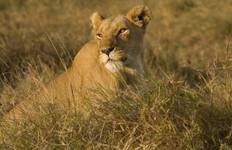
Keep Exploring Africa
- 10 Best African Wildlife Safari Deals 2024/2025
- Compare Hot Air Balloon Safaris in Africa 2022
- 10 Best Safaris in April 2024/2025
- Horseback Safari: Must Read For First Time Riders
- 10 Best Beach Safaris: Places & Packages 2022
- 10 Best Walking Safaris 2024/2025
- 10 Best African Camping Safari Vacations 2022
- 10 Best Luxury African Safari Tours 2024/2025
- 10 Best Safaris in February 2024/2025
- 10 Best Safaris in March 2024/2025
- 10 Best Safaris in December 2024/2025
- 10 Best Safaris in May 2024/2025
- 10 Best Safaris in June 2024/2025
- 10 Best Safaris in July 2024/2025
- 10 Best Safaris in September 2024/2025
- 10 Best Safaris in October 2024/2025
- 10 Best Safaris in November 2024/2025
- 10 Best Safaris in January 2024/2025
- 10 Best Safaris in August 2024/2025
- Africa from Nairobi
- Africa Safari
- Small group tour
- 6 days Africa
- From Nairobi to Arusha
- Operators in Africa
- Six Day Best of Kenya and Tanzania Safari Tours in Tanzania
- Safari Tours
- Tanzania Tours
- Family Tours
- Wildlife Tours
- Jeep & 4WD Tours
- Great Migration Tours
- Big Five Tours
- Private Tours
- Fully Guided Tours
- Personalized Tours
- Christmas & New Year Tours
- Kenya tours
- Tanzania tours

- Meet The Team
- Meet The Guides
- Traveller Reviews
- Sustainable Travel
- Kenya Safaris
- Kenya/Tanzania Safaris
- Masai Mara Safaris
- Nairobi safaris
- Malindi safaris
- Mombasa safaris
- Diani safaris
- Kilifi safaris
- Conservancies
- Tanzania Safaris
- Gorilla Trekking
- Jeep Safaris
- 3-Day Safaris
- Masai Mara safari
- Short Stay Safaris
- Kenya Honeymoon Safaris
- Tailor-Made Safaris
- Kenya By Air
- Cruise ship to Mombasa Safari
- Hot Air Balloon
- Maasai Village
- For Our Friends Over 50
- Tsavo East National Park
- Tsavo West National Park
- Amboseli National Park
- Nairobi National Park
- Samburu National Reserve
- Masai Mara Game Reserve
- Nyerere National Park
- Our new Nairobi Airport kiosk
- Important Travel Information
- East Africa
- Kenya Travel Guide
- Tanzania Travel Guide
- Uganda Travel Guide
- Rwanda Travel Guide
- Zanzibar Travel Guide
- Nairobi – Mombasa Train Schedule
- Wildlife of Kenya
- Masai Mara Lodges
- Amboseli Lodges
- Tanzania Lodges
- 4×4 Jeep Safaris
- Suggested Packing For a Safari
- Packing for Mountain Trekking
- Safari Gallery
- Booking Terms and Conditions
- Safari FAQs

- Travellers' Choice
- Exclusive Safaris
- Customised Excursions

2 DAY -1 NIGHT SAFARI TOUR WORLD FAMOUS MASAI MARA From Nairobi and return
DAILY SAFARI TOUR - PRIVATE 4X4 JEEP

See the Big Game Up Close
This is the big one – perhaps the most famous wildlife park in the world. Masai Mara National Reserve is known for its incredible density and variety of wildlife. Here you’ll find all of Africa’s Big Five – including an outstanding population of lion. The park is an undulating savannah of broad green horizons accented with iconic acacia trees. In just two days this short tour will bring you up close to an amazing assortment of wildlife. No long advance reservations needed – just say the word and we’ll have you out on your own private safari.
This is a serious tour and we’ll head out early – 05:00 hrs. – to give you the most viewing time at the Mara. As we begin our safari, you’ll enjoy the breaking sunrise lighting up the dramatic Rift Valley escarpment and the legendary Masai plains.
The park is an inspiring mix of large and small wildlife – predators and grazers, moving and hunting over the plains, the bush, and down at the Mara River, where hippos and crocodiles lie in their natural habitat. These are also the ancient lands for the Maasai people, and you’ll have an opportunity to learn about their lifestyle and culture.
Any special preferences? Let us know and Natural World Kenya Safaris will personalize your safari experience.
All-Inclusive. Your 2-day Masai Mara safari includes park entrance fees, game drives, accommodations and meals. Natural World Kenya Safaris always offers a choice of accommodations. Depending on your budget and style choose from economy, comfort or luxury safari lodges or tented camps.
Your Guide . For your 2-day Masai Mara journey, you’ll be guided, hosted and looked after by your own experienced driver/guide.
Transportation to the park and game viewing will be in a private 4 x 4 Land Cruiser Jeep – this vehicle is the safari standard with its higher seating and rugged all-wheel drive. Always included on our tours, the Land Cruiser Jeep is just another example of the value we offer you at Natural World Kenya Safaris.
Customize Your Holiday
If you’d like to customize your safari or have any special desires, please let us know. We’re here to make your safari wishes come true. Please check the guide below for your African Safari Costs.
Please read carefully
- This safari tour departs daily-you may set and book according to your own scheduled safari dates
- Safari tour price is indicated in US$ (you may also book and pay in any convertible currency on-line)
- Indicated driving time between Nairobi and Masai Mara are estimates and may vary due to prevailing road conditions, weather and traffic density
- If you are not keen on a driving safari, you can opt for a 2-day fly in safari (please insert link)
- This safari tour is private for your party and in own 4 x 4 Jeep and dedicated tour driver/ guide- (for both road travel & game viewing drives)
- You are free to choose your specific lodge / tented camp in economy, comfort or luxury accommodation options provided-(this is subject to availability)
- At some points during your safari tour ,you may encounter pressure souvenir sales at areas near washroom stops and Masai Mara park entry gates by locals (purchases for souvenirs is optional and a polite decline shall suffice)
- Your safari tour starts at 05.00AM and finish at appr.4.30PM (Pick up and drop offs are from your hotel, residence or Nairobi airport
- We realize that tour participants may wish to proceed to other holiday places after this 2 day Masai Mara safari ,we can customize your pick up / drop off to meet your specifications.
- If you prefer to extend to Zanzibar, or the Kenya coast beach resorts or simply fly to another location or home ,we shall drop you off at the Nairobi airport
- You may also choose to be dropped off at the Lake Naivasha areas or at Isebania (Kenya/ Tanzania) border (extra cost for this)
- You may look up these other optional (insert the 2 day Masai Mara fly-in safari)
- In case you may be interested in our Nairobi city tours and short excursions before or after your safari tour, please choose from our selection here
- More information on Masai Mara & safari tour options here
Tour Highlights:
- One stop shop for wildlife viewing including sights of Big five
- Tree studded typical savannah terrain and a multitude of Wild animal species.
- Unlimited game viewing drives with exclusive use of pop up top safari vehicle
- Colorful Masai tribesmen
- Unique Accommodation options in safari lodges / tented camps
- Masai village visit at Maasai Mara (arrange with your driver guide) = $ 20 per person - Optional
- Hot air balloon ride –enquire with us =$ 460 per person - Optional
Masai Mara 2 Day Safari Itinerary
NAIROBI – MASAI MARA (Appx: 265kms – 5hrs)
Meal plan: Breakfast, Lunch, Dinner.
05:00 hrs. – Your driver/guide will pick you up from your Nairobi hotel, residence or Nairobi airport. Hop into the 4 x 4 Jeep for your journey to the Masai Mara, Kenya’s most popular wildlife park.
Watch the dawn break over the fields from the comfort of your safari vehicle. We’ll make a stop at the town of Narok for breakfast
As we continue to the Mara, you’ll see local homesteads and perhaps Maasai herdsmen in their colorful wraps, tending to their cattle. We should arrive at the park at approximately 10:30 hrs.
The day is yours for unlimited game drives, lunch, relaxation or whatever you choose.
The park is well-known for its immense parade of wildlife and during the migration season (July – September), an unending stream of wildebeest and zebra.
We’ll be looking for lion, leopard, buffalo, rhino, and elephant, plus the more than 95 other mammals that inhabit this massive habitat.
We’ll enjoy a picnic lunch at the Mara River, site of the animal crossing during the migration. Here, crocodile lie in wait for the arriving hordes of wildlife, along with lion, cheetah and other hunters.
The Mara is alive with nature’s drama so this will be a very active day.
We’ll spend the night in the Mara at your choice of safari lodge or tented campground.
MASAI MARA – NAIROBI (265 kms – 5 hrs)
Meal plan.Breakfast.
After a leisurely breakfast at your lodge/camp, your dedicated driver guide will assist you with the checkout process and proceed to Nairobi – Kenya’s colorful capital city.
On the way, your guide will point out the Longonot extinct volcano which is a strato volcano located southeast of Lake Naivasha in the Great Rift Valley of Kenya. It is thought to have last erupted in the 1860s and its name is derived from the Maasai word Oloonong’ot, meaning “mountains of many spurs” or “steep ridges “. You can opt to drive via Naivasha for lunch/excursions at an extra cost or drive straight to Nairobi and pass by Kiambethu farm for the tea farm tour inclusive of a three-course buffet lunch (at an extra cost) OR drive straight back to the capital and later transfer to Jomo Kenyatta International airport for your back home.
We should arrive back in Nairobi toward the early evening and will bring you to your hotel, residence or the airport.
It’s been a wonderful and busy two days. We thank you for letting us show you the best of Africa. Hope to see you soon!
What you could see on a 2 Day Masai Mara Safari...
- Grant's Gazelle
- Hippopotamus
- Prolific Birdlife
SAFARI PRICE GUIDE BY SEASON,NUMBER OF PERSONS,LODGE/CAMP CATEGORY
Accommodation
ECONOMY LEVEL
COMFORT LEVEL
LUXURY LEVEL
SUPERIOR LUXURY LEVEL
Tour Price Includes
- Tour in our Standard Customized Pop-top 4WD Toyota Land cruiser Jeep.
- Services of experienced English/other language speaking safari tour guide/driver
- Stay in economy, comfort or luxury lodges / tented camps ( please choose)
- Game viewing drives
- Masai Mara game reserve entrance fees
- Meals on safari
- Bottled drinking water in safari vehicle
- The flying doctors emergency medical evacuation/ rescue insurance cover
- Pick up/drop off at Nairobi hotel or residence
- Government taxes and local levies
Not Included In the Tour Price: - Bottled & Soft Drinks - Items and services of a personal nature - Tips & Gratuities.
Additional Extras
Frequently Asked Questions
IMPORTANT So that you may know... click to view
Enquire/Book this excursion
Enquire/Book this Safari
What other visitors say about our Kenya safari tours
Testimonials, game reserve visited on this safari, masai mara game reserve , our accreditations and booking security, we are fully accredited by and proud members of the following industry organizations.
Natural World Kenya safaris is Member No.FA/440 - Kenya Association of Tour Operators (KATO) bonding scheme . The scheme is insured to guarantee your holiday safari in the unlikely event that a bonded KATO member ceases operating.
Natural World Kenya Safaris is Member No.FA/440 Kenya Association of Tour Operators (KATO) bonding scheme . The scheme is insured to guarantee your safari in the unlikely event that a bonded KATO member ceases operations.

Sign Up To Our Newsletter

- Nairobi Safari Center (Click here) ,
- 204 Sports Road,Westlands, Nairobi
- +254 704 00 11 22
- +254 758 499 507 (Operations)
- +254 720 894 288 (Emergency)
- Jomo Kenyatta International Airport (Click here) ,
- Parking Garage, Level 0
- +254 759 982 498 (24 Hours Hotline)
- +254800722208 (Nairobi Airport (Toll Free Line))
- Diamond Trust Bank Building
- Moi Avenue - Mombasa
- +254 412 226 715
- Natural.World1
- Galaxy Building / Chinese Restaurant
- Diani Beach Road, Ukunda
- +254 758 499 503

Book This Safari
Personal Information
All fields with an asterisk(*) are required
Telephone Number*:
Country Code*:
Email Address*:
Safari Information
Accommodation Category*: Please select accommodation category Luxury Superior Comfort Comfort Economy
Arrival Date*:
Start Date*:
Number of Adults:
Number of Children:
To serve you best, indicate here any additional information to help us create your perfect Safari
(e.g.Accommodation preferences, experiences, travel preferences, special occasions, travellers details e.t.c)
Yes, I agree to the Terms & Conditions Please leave this field empty.
Book This Excursion/Tour
Accommodation Category*: Please select accommodation category Luxury Comfort Economy
Arrival Date in Kenya*:
Safari Starting Date*:
Describe your dream safari, choice of lodges & special likes
Customize this Excursion
Do you wish to plan your safari within a specific budget (Please provide per-person guidelines in US$ if possible)?
Are there any special areas of interest you would like us to consider for your trip? Help us create your perfect Safari
(e.g.Accommodation preferences,additional experiences, special meals, travel preferences, special occasions, travellers details e.t.c)
Yes, I agree to the Terms & Conditions
Customize this Safari
- Kenya / Tanzania Safaris
- Tailor Made Safaris
- Group Safaris
- Booking Terms
- Safari Guides

Jeep's Easter Safari Builds Go All Retro For 2024
W ith the 58th annual Easter Jeep Safari well underway in Moab, Utah, Stellantis has pulled the cover off of four brand-new off-road concepts. The lineup includes two highly-modified Wranglers, a big-tired Gladiator pickup, and a seriously retro take on the Grand Wagoneer , all of which take a look back at some of the Jeep’s greatest work for inspiration. Here’s what you need to know about these factory-modified wheelers.
Wrangler Low Down Concept
Jeep has built more than 100 of these custom 4x4s since 2008, but only a select few have managed to stick in the minds of the Jeep faithful. The new Rubicon 392 -based Wrangler Low Down concept pays homage to one of the most famous Easter Jeep Safari builds, the Lower 40 concept from 2009. That early build featured a V-8 engine swap under the hood, and made use of gigantic 40-inch rubber despite a stock ride height. The new truck is a bit more extreme, trading that old-school 5.7-liter V-8 for the potent 6.4-liter engine provided by the Rubicon 392. The new build also retains the stock suspension package from the Rubicon 392 model, but swaps out the stock Dana 44 axle for more robust Dana 60s with 5.38 gears. Those beefier axles help support the truck’s massive 42-inch BFGoodrich Krawler mud-terrain tires, which come installed on a set of 20-inch beadlock wheels. The stock fenders have been replaced with a set of flared carbon units, which help give the truck a purposeful stance. A Poison Apple Red paint job and a red-tinted bikini top are a nice nod to the original concept as well.
Wrangler 4xe Willys Dispatcher Concept
The second Wrangler build looks even further back in brand history, paying respects to the early civilian model Jeep from the post-war era . Based on the 4xe hybrid model, this Willys Dispatcher Concept gets some old-school appearance tweaks, including custom steel bumpers at both ends. The hood also features stamped “Willys” branding, which it shares with the original seven-barred product. Upgraded Dana 50 axles with 4.70 gears help increase capability, as do the Super Traxion 36-inch tires. That rubber comes wrapped around retro-style steel wheels, which are finished in a cream hue. The SUV itself is finished in a bespoke shade of Element 115 Green paint, which is accented nicely by the blacked out windshield banner. The best looking part of this custom SUV is the interior, complete with distressed saddle leather and houndstooth inserts throughout. The headrests have been pulled from the seats to improve that retro appearance. It’s the sort of thing we’d love to see make its way to the production models, however unlikely. The throwback style Warn Winch is another nice touch and helps to round out the package.
Gladiator High Top Concept
The Gladiator High Top Concept is a bit less of an involved build, borrowing mostly from the Jeep Performance Parts catalog. Upgrades include items like an AccuAir air suspension system, which work with Dana 60 axles at both ends to support 4x4 endeavors. The suspension system is put to the ground via a gigantic set of 40-inch BFGoodrich All-Terrain T/A KO3s, which come wrapped around a set of 18-inch KMC Grenade Crawl beadlock wheels. A set of flat fender flares and AEV bumpers ensure that the large rubber is covered and ready for road-use, while giving the pickup some additional flair. Out back you’ll find a truck bed storage system by Decked, which brings a bit of overlanding capability to the build. A Warn Winch and some rock slider steps have also been added should any off-roading adventures take a turn for the worse.
Vacationeer Concept
Rounding out the 2024 Easter Jeep Safari lineup is the Grand Wagoneer-based Vacationeer Concept. The design is a clear nod to the original Wagoneer models, complete with the oh-so lovely wood grain graphics missing from the current production model. The woody look pairs very nicely with the Spearmint paint, which has slightly more white in the mix than the aforementioned Element 115 color. The wheel openings have also been massaged to make room for the larger 35-inch tires, which come wrapped around 18-inch Method Race wheels. A 1.5-inch suspension lift adds a bit of aggression to the stance, while bringing a bit more off-road capability to the table. The rear rows of seats have been removed in favor of a carbon-fiber RedTail Overland Skyloft, which serves as a passthrough rooftop tent for ideal camping conditions. Under the hood sits a high output variant of the Hurricane inline-six engine, which provides 510 hp and 500 lb-ft of torque. That said, the real highlight of this build is found on the interior, where Jeep enlisted the assistance of fashion designer Kiel James Patrick. The custom flannel seats feature famous Jeep models from years gone by, and fit with the theme perfectly. This is exactly how the Grand Wagoneer should have looked in production form, but we’ll settle for a concept like this one.
The Easter Jeep Safari runs through March 31st, 2024 in Moab, Utah. If you’re a diehard Jeeper, it might be worth the trek to lay eyes on these unique concept vehicles.
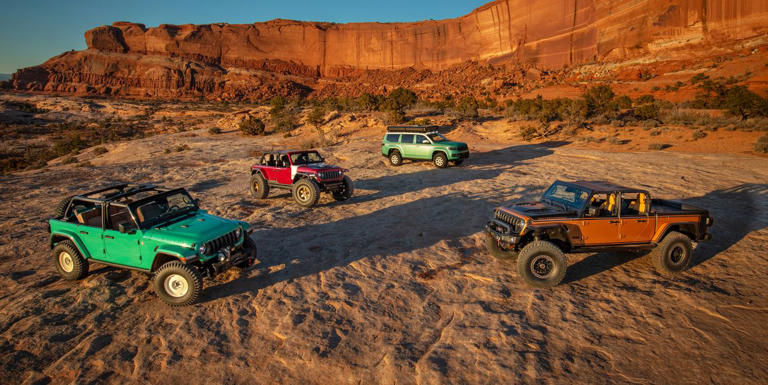

COMMENTS
Our African safari jeep is the best way to explore Kenya's iconic safari parks. Discover how our tours guarantee you a 4x4 pop-top jeep at no extra charge! Skip to content ... Nairobi Safari Center, 204 Sports Road, Westlands, Nairobi, P.O. Box 5036 - 00200 +254 743 422 867; [email protected];
10 best Jeep tours in Kenya. Compiled by. Nadine Kenya travel expert at TourRadar. 6 Days Kenya Budget Tours (with FREE NIGHT at Nairobi Hotel) Amboseli & Masai Mara Budget Safari By 4x4 Jeep. Journeys: Kenya Safari Experience National Geographic Journeys. 5 Days Masai Mara and Amboseli Wildlife Safari. 6 Days Kenya allround Safari - Mombasa.
Off-road Pop up Top 4 x 4 Jeeps were built for African road safaris! When you go on safari with Natural World Kenya Safaris , you'll journey to the savannah, through the bush and over the hills in a tough as nails off-road 4 x 4 Land Cruiser Jeep. Guaranteed. At Natural World - our Safari vehicle of choice is the off-road 4 x 4 Land Cruiser ...
10-Day Best Kenya Adventure Safari in 4 X 4 Private Jeep. Offered By: Morning Star Tours & Travel 4.9 /5 (228 Reviews) Overview Day by Day Rates Inclusions Getting There Offered By. Our 10-day Kenya safari adventure takes you to Kenya's top safari destinations to give you a complete overview of this fascinating country.
9-Day Thrilling Bush Safari with Private 4x4 Jeep. Offered By: Apodiformes Adventures 4.7 /5 (203 Reviews) Overview Day by Day Rates Inclusions Getting There Offered By. This safari to Kenya will give you an unimaginable experience of the wildlife of Africa. It covers the most fascinating parks, Tsavo West National Park, Amboseli National Park ...
Safari price (in USD) is per person in a private 4x4 pop-top Tour Jeep. (Click the arrows to view Safari Tour Seasons). Shoulder A Season. (1st Jan - 31st Mar) & (1st June - 31st June) Economy. Comfort. Luxury. 2-3 persons in a private tour. $800.
This is one of Natural World Kenya Safaris' most complete tours. 10 days of sighting giraffe, wildebeest, zebra, flamingos, elephants and the big cats! Listen to an audio version of this introduction. Just press the play button below. Enjoy this amazing safari in a customized pop-up roof Natural World 4×4 Safari Jeep that has: Portable ...
Mingle with other travelers and get a peek at Kenya's most iconic wildlife species during this three-day, small-group safari excursion to the Maasai Mara National Reserve. Enjoy multiple game drives in a four-wheel-drive Land Cruiser, all-inclusive buffets and picnic meals, and an optional visit to a Maasai village. Sleep comfortably at a tented campsite with ensuite bathrooms. Round-trip ...
46. $2,948.95. 9-Days Best of Kenya Wildlife Private 4X4 Jeep Safari. 3. $3,825.00. 7-Days Private Jeep Safari Tour in 5 Star Luxury Lodge from Nairobi. 3. $4,364.00. 8 Days Discover Kenya Safari with 4x4 Land Cruiser Jeep.
Start and end in Nairobi! With the Safari tour Amboseli & Masai Mara Budget Safari By 4x4 Jeep, you have a 5 days tour package taking you through Nairobi, Kenya and 3 other destinations in Kenya. Amboseli & Masai Mara Budget Safari By 4x4 Jeep includes accommodation in a hotel as well as an expert guide, meals, transport and more.
Jeep Safaris And Tours for travel to top holidays destinations. Adventures in Kenya and Tanzania national parks and game reserves. +254 742 608541. info[@]jeepsafaris.net. Greenspan Mall, Donholm, Off Jogoo Road. Search.
Experience Nairobi park safari in open jeep enjoy best game viewing in 360 degrees wildlife capture.Best and Most recommended safari in open jeep 4x4. Package Includes. Safari jeep transport,water,entrance fees of jeep and driver,guiding. Package Excludes. Pick up and entrance fees payable direct ( 35-43$0.
These folks have their act together and everything about our trip went perfectly - from the safari Jeep to the lodges to the game drives. We went to Amboseli and Masai Mara and saw lions, leopards and elephants, elephants, elephants! ... Nairobi Safari Center, 204 Sports Road, Westlands, Nairobi +254 712683442 +254 712683442 (Emergency Calls ...
10 best safari tours. Compiled by. Nadine Kenya travel expert at TourRadar. 6 Days Kenya Budget Tours (with FREE NIGHT at Nairobi Hotel) Amboseli & Masai Mara Budget Safari By 4x4 Jeep. Journeys: Kenya Safari Experience National Geographic Journeys. 5 Days Masai Mara and Amboseli Wildlife Safari. Kenya Camping Safari.
These multi-day Kenya safaris from Nairobi will set you upon the brilliant landscapes of several national parks and get close to Kenya's pulsing herds of lions, buffalo, elephants, wildebeests, and hundreds of other species. Choose from 2, 3, or 4-day African safaris to parks like Amboseli with its untold herds of free-ranging elephants.
00:00. 00:00. Enjoy this amazing safari in a customized pop-up roof Natural World 4×4 Safari Jeep that has: Portable fridge/Cooler Box, 4 Binoculars, long-range high-frequency radio, Sand bags, 4G/LTE broadband WIFI connectivity, Power Outlets AC 230V, First Aid Kit, Safari Guide Books, Baby Seats (on request), Side steps (on request) and ...
Kenya Jeep Safaris: Welcome to Ringo Tours & Adventure Safaris, a registered local tour company in Kenya, our trading name is Ringo Safaris to give our clients an ease of reference. Ringo Safaris is an owner managed business, With an aim of serving the yearning majority of individuals and group tourists, with a passion to visit various parts of East Africa within a flexible schedule in 2024.
African lion couple and safari jeep in the Masai Mara in Kenya. Most offer an all-inclusive tour package similar to those associated with the famous private game reserves bordering South Africa's Kruger National Park. ... A Kenya safari focussing solely on Nairobi, the tree hotels, and Laikipia would thus be borderline malaria-free, but a ...
A 4x4 Jeep is the best safari vehicle to hire in Kenya. Spot a pride of lions beside your window, by booking a tour with Natural World Kenya Safaris, now. +254 704 00 11 22 +254 788 28 71 51
Kenya Affordable Budget & Luxury Safari, Diani Beach holiday Accommodation +254 - 712492854 info@ ... This Safari departs from Nairobi. Read more. 3 DAYS TSAVO EAST & TSAVO WEST. Red Elephant of Tsavo safari. Read more. 2 DAYS TSAVO EAST -NGUTUNI SAFARI LODGE. Kenya Jeep Safari. Read more. 1 DAY WASINI DHOW TRIP. Dolphin dhow trip. Read more ...
Six Day Best of Kenya and Tanzania Safari, a 6 days tour from Nairobi to Maasai Mara National Reserve, Serengeti National Park and 2 destinations. Best Selection - Best Price - Trusted Payments ... Jeep Safaris and Tours is one of the most reliable and affordable inbound premier Kenya and Tanzania tour operator, dedicated to provide ...
The answer is quite obvious, 4X4 Jeep costs more for a better wildlife viewing experience & comfort factor. On the 'Safari modified' Land Cruiser 4X4s, you can roll up the Side Canvas to give 'up close & personal' safari experience. As for the Minibus, there are chances you might end up sharing with other tourists.
2-day Masai Mara game reserve tour on a road safari with intensive game viewing drives in search of the Big five. Transport to the Masai Mara including game viewing drives is in private pop up top safari minivan or 4×4 Land Cruiser jeep. The 2-day express safari departs Nairobi at 0500hrs to maximize on game viewing opportunities.
The new Rubicon 392-based Wrangler Low Down concept pays homage to one of the most famous Easter Jeep Safari builds, the Lower 40 concept from 2009. That early build featured a V-8 engine swap ...